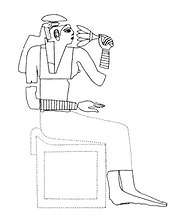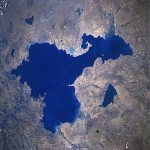
Lake Van {S/E?}.
''The word 'mystery' comes from the Greek 'myein', to keep silent....The real secret about the mysteries is that they cannot be communicated by one being {'teacher'?} to another: the mystery guardian can only give guidelines and keys to knowledge, not actual knowledge itself, which is revealed to the initiate by personal experience and {or?} revelatory realisation." ['The Wester Way: A Practical Guide to the Western Mystery Tradition'. Chapter 1].
"He could speak clearly and convincingly without mention of god or the soul. He could explain the purpose of life and its fulfilment in terms of Truth, and the search for understanding, with no reference to religious worship or beliefs of any kind. He said: 'If you believe in God, then your search must be for god; but even if you believe in nothing, you must still have some conviction that there is a meaning behind this visible world. You must be determined to seek out that meaning and understand it." [Quote from the book by J. Bennett].
Question. Is this subject therefore [possibility of] - nothing more than self hypnosis?
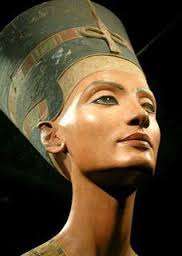
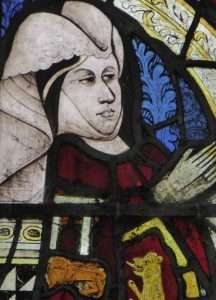
Hooded Women: Lady de Mowbray.
A {working?} example: "Nonetheless the effect of a well conducted initiation ceremony is quite impressive. To stand at the door of the lodge upon which three knocks are given on one's behalf, to meet with the challenge as the door swings slightly ajar, bringing with it a waft of incense - ''Stranger from the outer world, why seek ye to enter our secret places and hidden mysteries?" and being prompted to answer {as from your own Higher Self}, ''I desire to know in order to serve''. To be admitted blindfolded { to represent your own stumbling forward in spiritual darkness}, to where the hooded brethren are assembled. Then, in due course, the hoodwink removed, to observe the symbolic furniture of the temple as you are ceremoniously processed around for instruction, admonishment and contact by the various officers of the lodge." ['I Called it Magic' / G. Knight - including parenthesis].
Define those keys {highlighted} to educate {initiate?} those - first impressions?
Refresher: ''The Siren heralds a friend the Bee a stranger.''
''Truth is stranger than fiction.''
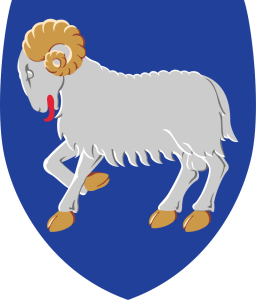
Golden tongued?
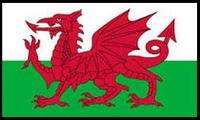
''The tongue of the Welsh dragon is the symbol of the Welsh Language Society.''
And/or: "There is a reference in a Copper Scroll fragment to the "putting to death of the Righteous One". Compare this with the passage in James {5:6} which says: 'Ye condemned the Righteous One; ye put him to death though he doth not resist you'. This fragment echoes other themes of, and the style of, James's epistle, calling for patience and restraint. Even the language including the use of words like tongue and vipers are closely similar. Indeed the "tongue" imagery of James 3 is used to attack lying adversaries and the tongue is described by the identical, though common enough, expression, "the stumbling block", both in James and in the Scroll fragment." {'The Wisdom of the Fourth Way' / T. Nottingham}.
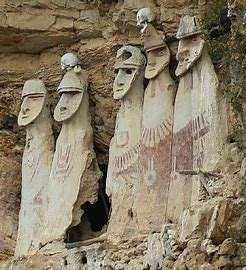
Above or below?
Analogy: Or, you can watch a joyful moment of your childhood, perhaps a time when you were in a swing laughing in the wind, with your toes pointed way up high. You felt as if you could swing up all the way to the sky, your toes piercing the clouds. Do that now, and as your feet part the clouds, catch a glimpse of the older you looking down at the younger you. Feel that look exchanged with such love and joy that it fills your heart. Take a moment to look at several scenes from your life and enjoy these memories. [Meditation at the Pyramid of Unas at Saqqara: Page 239/40 'Invoking the Scribes of Ancient Egypt'].
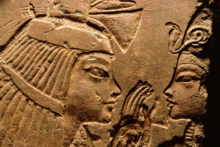
The ''golden'' child's nurse. Real or symbolic? Transforming 'fingers'?
Same intent - but now 'seen' from a different perspective {that first one?}: "Hera, queen of Heaven and the sister and consort of Zeus, is also the goddess of 'marriage' and the protector of women in childbirth. This latter role fits well her association with the moon, the celestial object that is reborn each lunar month. Hera is as important in astronomical allegory as she is in the narrative of the Iliad. A poor loser in the Judgement of Paris, she displays her anger and hatred of the Trojans from the opening pages of the epic. Her title of queen indicates an ancient perception of the Moon as queen of the night skies, and references to her as 'strange queen' suggests the distorted or unbalanced face of the moon in its gibbous phase between half and full moon." ['Homer's Secret Iliad'. Emphasis, this readers]. Try ''marriage'' and ''child'' - to see it from that inner {spectrum?}.
Refresher: "Everyone has an internal thought process: that silent other self who speaks to you; the one you debate with." [First sentence; first paragraph; first page of the book by Q. S. Lam].
Side note: Man in the moon or 'Hare' in the moon? {anagram of Hera?}.
"Analogy is the final word of science and the first word of faith. Harmony consists in equilibrium, and equilibrium subsists by the analogy of contraries. Absolute unity is the supreme and final reason of things." Quote from within the book 'Transcendental Magic: Its Doctrine and Ritual' by E. Levi. Question. Before those first impressions take hold - what does "transcendental'' imply. Think about it in relation to the ''divine bit'' relative to ''primary'' and ''secondary''. Enlarged elsewhere. Possibilities of - ONLY.

More empathy for his golf clubs? Why did he not ask his Jewish friend not to? Still wanting to change someones ancestral lands into a fair ground? What would the Hebrews say?

"There is a mosque whose foundation was laid from the first day on piety; it is more worthy of thy standing forth therein." [i.e., in relation to ''The original mosque of piety built by the Muhammed himself]..."Which then is best? - he that layeth his foundation on piety to God and his good pleasure? - or he that layeth his foundation on an undermined sand cliff ready to crumble to pieces?" [Quran 9:108/109].
"...that geared me towards more profound shores." Quote from M. Katz.
"Gudea made offerings of honey and butter when the foundations were laid; when the building was finished an auspicious day was waited for, and when it came the image of the god was removed to the new temple, and Gudea sprinkled the ground with oil, and set out offerings of honey, butter, wine and dates, grain mixed with milk, food untouched by 'fire', for the gods." [ Chapter 3, 'The Sacred Bee']. Recall what 'food' represents, [e.g., put ''butter'' or ''honey'' or ''milk'' in the 'search box'].
'15' parts?
Passover Cake?
S/E?
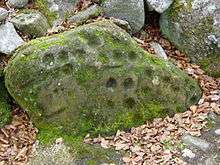
Cup marks. {'northern' end}. 'Pitted'?
A contemporary example: ''Places where the Meloksewoch lived, experienced notable events, or were buried often became pilgrimage destinations for the Beta Israel {'ancestors'}. For example a religious leader named Abba Gan is believed to have lived and been buried on a hilltop at the foot of the Zawila Ridge below the Wagara Plateau, seperate from any known Beta Israel villages. This hilltop became among the best-known Beta Israel holy sites. On the hill top evidence found of an enclosure, as well as basalt grinding stones {'querns'?}, which members of the Beta Israel community say were used to prepare food by those who made the pilgrimage there.
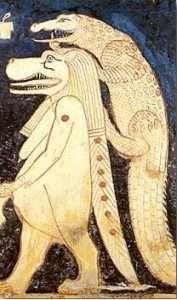
Good or bad?
These pilgrims would purify themselves by eating raw chickpeas and immersing themselves in water. A Beta Israel woman named Mucet Makwannen, who says she was healed of an illness at the site before migrating to Israel, explained the ritual to researchers.'One eats chickpeas, peas, and broad beans without cooking them. They are eaten with little salt until one has a good or bad dream. If these things are not observed, one is shown in the dream bad animals, dangerous reptiles. If one goes clean and pure, one has good dreams and returns home healthy and whole. Another holy site.....'' [Page 61 'Archaeology' / Jan-Feb 2023].
Quern-stones are stone tools for hand-grinding a wide variety of materials. They are used in pairs. The lower stationary stone of early examples is called a saddle quern, while the upper mobile stone is called a muller, rubber or handstone. The upper stone was moved in a back-and-forth motion across the saddle quern. Later querns are known as rotary querns. The central hole of a rotary quern is called the eye, and a dish in the upper surface is known as the hopper. A handle slot contained a handle which enabled the rotary quern to be rotated.[1] They were first used in the Neolithic era to grind cereals into flour. The upper stones were usually concave while the lower ones were convex.''
An old Gaelic proverb is "The quern performs best when the grindstone has been pitted."
Hamlet's Mill.
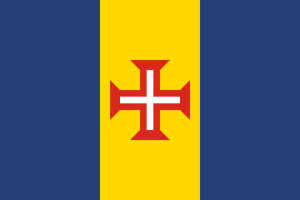
Pearl of the Atlantic.
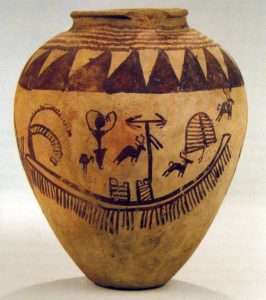
When the north wind blows. Heading south? Female aspect? 'Hive' of activity?
An .ancient working example: ''The self-generated Ra is growing old. Mankind plots against him when his bones: 'were like electrum, his flesh like gold, and his hair was like lapis lazuli', {i.e., all made from 'fire'}. Sends down his Eye as Hathor to quell the rebellion {in the female form of Sekhmet}. A slaughter ensues. Ra regrets. Comes up with a 'trickster' ploy of 7000 JARS of beer made from: 'red ochre from Yebu {Elephantine} to be ground up by the high priest of Heliopolis and for the barley to be crushed {'bruised'?} by maidservants'. Ra appeased. Leaves for his ''palace in the stars'' on the back of Nut, the Heavenly Cow. Two 'fields' are created - the 'Field of Offerings' and the 'Field of Reeds', which are for the blessed dead. Reordering takes place. Nut becomes the sky supported for the FIRST time by the eight Heh gods, two per leg, while a larger Shu {air} supports her belly. There are two solar barques {'sailing' ships} travelling across UNDER her belly: one shows the sun god Ra standing on board; the other is positioned under her udders, with Ra seated in a cabin. The Heh gods are the 'infinite ones' - the hieroglyph means 'millions of years'....'' [Page 44 'Ancient Egypt' / July-August 2023].
Upstream or downstream? Northern/Southern wind?
Madeira to enlarge.
'Fifty'?
Question. Altar of Witness and Altar of Sacrifice { i.e., opposite end on the same pole}?
Tent or May pole?
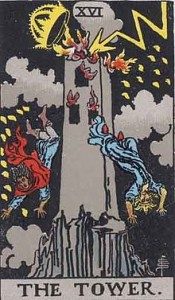
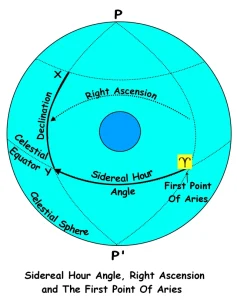
"It was early summer, and I was on the verge of turning 40. I found myself entertaining a recurring daydream of escaping from time. I would be hustling my son out the door to get him to school, or walking briskly to work on the day of a deadline, or castigating myself for being online when I should have been methodically and efficiently putting words on paper, and I would have this vision of myself as a character in a video game discovering a secret level. This vision was informed by the platform games I loved as a child – Super Mario Bros, Sonic the Hedgehog and so on – in which the character you controlled moved across the screen from left to right through a scrolling landscape, encountering obstacles and adversaries as you progressed to the end of the level. In this daydream, I would see myself pushing against a wall or lowering myself down the yawning mouth of a pipe, and thereby discovering this secret level, this hidden chamber where I could exist for a time outside of time, where the clock was not forever running down to zero."
Side note: Many questions raised concerning an ancient 'henge' {at least 2400BC} discovered at Woodbridge in Suffolk S/E England. All within a once large hill - but since - flattened {decommissioned?}. Large circular ditch with walkway inside made of birch and oak. Animal parts found inside ONLY of jaw and pelvic area {ie., ''head and tail'' ends}. Spring water prevalent throughout ''running down throughout the structure to the creek below''. Large platform on top of hill. {'Horizon' link? i.e., ''line of sight'' - in the spiritual sense of the word}. Parts {skull} of large female cow {auroch} found on top. ''Milk'' and ''butter'' mentioned in relation to the 'tool' found alongside - ''its a wooden spatula used for butter and milk churning''. ['Digging for Britain'. Series 7. Episode 3].
Define a mind set to get beyond ''ritual ceremony''. i.e., what could be seen on top of that ''platform'' - another 'henge' within that locality or some constellation and planets. The 'foundation' of something? Try ''cattle'' and/or ''butter'' to take something further.
Side note: ''Rouen is known for its Rouen Cathedral, with its Tour de Beurre (butter tower) financed by the sale of indulgences for the consumption of butter during Lent.''
And/or: ''Rouen, capital of the northern French region of Normandy, is a port city on the river Seine. Important in the Roman era and Middle Ages, it has Gothic churches, such as Saint-Maclou and Saint-Ouen, and a cobblestoned pedestrian center with medieval half-timbered houses. The skyline is dominated by the spires of Cathédrale Notre-Dame, much-painted by Impressionist Claude Monet.'' [Wiki].
Side note: ''The term 'Impressionism' came about because of Monet's Water Lilies {nympheas}. I heard that one on 'Pointless'....'' ['T' on 'Salvage Hunters' / S8 EP5].
Lotus to enlarge.
The first series of "Water Lilies," a total of 25 {'twentyfive'} canvases, was exhibited at the Galerie Durand-Ruel in 1900. This was followed nine years later by a second series of forty-eight canvases. "These landscapes of water and reflection have become an obsession," wrote Monet on August 11, 1908. "This is beyond the strength of an old man, and yet I want to express what I feel. I have destroyed some of the canvases. I begin once again. ... I hope something will come of all this effort."
Continued: ''After a while these two mutually stimulating sensations gave way suddenly to a peaceful inner state such as i experienced in later life only once, when the ceremony of the 'great initiation' into the brotherhood of 'the makers of butter from air' was performed over me.'' [Page 34 'Beelzebub's Tales to His Grandson' / Gurdjieff].
Something extra: ''White pebbles'' found and the area has in the past been known as ''seven springs''. [www.the guardian.com/science/2018/jun/28/archaeologists]. Try ''white stones''.
That number 7 again. Try ''butter'' to attempt a mind set.
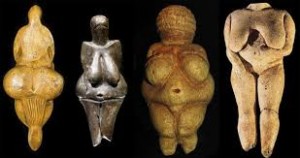
Father or Mother. Spirit or soul - as a means....?
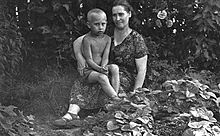
What would his REAL mother/father think? Some say documents changed when in KGB. Mother a prostitute in the Ukraine - because father a homosexual. Fake news? Wiping those memories away?
"At first sight art promises to be a better source than burials for the study of beliefs; after all, it was presumably designed to deliver a message to the observer...To a student of prehistoric religion, the earliest significant works are a group of about 35 female figurines found on twelve sites scattered from Pyrenees to Siberia. In view of this vast geographical range, their similarity is striking. All are relatively small, about the length of a hand, and all are footless and faceless {symbolic intent only?}- with swollen breasts, buttocks and/or abdomens. Within this style there are variations. They are fashioned in clay, ivory and stone. Some are fat, some apparently pregnant, and some have the breasts and buttocks alone emphasized. Those from western and central Europe tend to be found singly {'rural'?} and without any context, while the Russian examples are found more often in groups and on settlement sites {town /'city'?}...At Yeliseevici, on the river Desna, one was found among three mammoths' skulls arranged in a circle. At Laussel in the Dordogne, France, three reliefs of women holding objects {an upward curving bison horn - marked with thirteen lines} - were found carved upon boulders in a rock shelter. The womans left hand rests on her abdomen, and she had been painted red, which seems to be the colour most often connected with sacred or arcane matters in the Palaeolithic. NO collection of male images is associated with ALL THESE FEMALES. [Therefore symbolic intent of 'anima'?}... So what did they mean? ['The Pagan Religions of the Ancient British Isles: Their Nature and Legacy' / R. Hutton].
Besides the obvious {highlighted} try ''milk'' or ''churning'' or ''horn'' or ''rock'' or ''belly'' or ''elephant'' and especially 'arc' in relation to ''upward'' etc...

Does he speak for Mother Russia, Father Russia or just from his own appetites?
''Pregnant'' {with something} - in the spiritual sense of the word...?
Question. Are all found near rivers rather than seas?
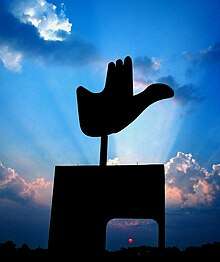
'Head of the Corner'? Bird in flight? 'Thumb' to enlarge.
Do most have hands behind their backs? Pre or post ''transforming fingers'' ?
The main point, however is, understanding this subject gets us closer to those final answers. In the words of Mr N. Oliver {mentioned elsewhere} ''it gets us into the heads of neolithic man..." BUT because those keys are universal it also gets us into all 'other heads' - of those - who for whatever reason - want to understand {explore?} it - from the dawn of human kind - FROM the oral tradition up to and including the present. REGARDLESS of what we {the reader and/or observer} think about it. Therefore does that not define an aspect of our history - the human one?
N.B. ''Footless'' in relation to:
 "For thought alone can see that which is hidden, inasmuch as thought itself is hidden from sight - and if even the thought which is within you is hidden from your sight - how can He [''god''], being in himself, be manifested to you through your bodily eyes? But if you have power to see with the eyes of the mind, He will manifest himself to you." Libellus v:2 [Extract taken from chapter one, 'The Sacred Tradition of Ancient Egypt'].
"For thought alone can see that which is hidden, inasmuch as thought itself is hidden from sight - and if even the thought which is within you is hidden from your sight - how can He [''god''], being in himself, be manifested to you through your bodily eyes? But if you have power to see with the eyes of the mind, He will manifest himself to you." Libellus v:2 [Extract taken from chapter one, 'The Sacred Tradition of Ancient Egypt'].
Hermetic equivalent..."Men will seek out the inner nature of the holy 'spaces' [chambers/niche link]...where no foot may tread". See it?
 Side note: "The key essential element for growth has always been change {via motion}, and so we must, if we wish to grow, constantly strive to escape from the comfortable congestion of our daily lives - we must attempt to climb into a ''larger box'' {chamber?} whenever we can, like a snake shedding its skin through successive cycles of growth....We must actively think our way out, and the best way to do that is to constantly question - to test and probe the 'concreteness' of our world....We are engulfed in a sea of mystery which is normally never thought about or considered due to the well constructed walls of our defences." [Page 18 of the book by D. Monroe].
Side note: "The key essential element for growth has always been change {via motion}, and so we must, if we wish to grow, constantly strive to escape from the comfortable congestion of our daily lives - we must attempt to climb into a ''larger box'' {chamber?} whenever we can, like a snake shedding its skin through successive cycles of growth....We must actively think our way out, and the best way to do that is to constantly question - to test and probe the 'concreteness' of our world....We are engulfed in a sea of mystery which is normally never thought about or considered due to the well constructed walls of our defences." [Page 18 of the book by D. Monroe].
Walls of Jericho?
Refresher: ''Not out, BUT through.'' [Carl Jung]. Enlarged elsewhere.
Try static/dynamic all as a means....?
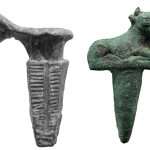
Foundation pegs. 'T' shape?
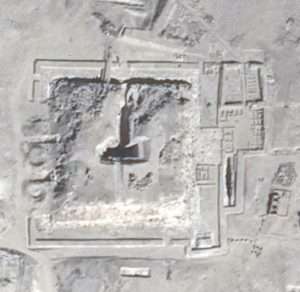
Foundations of Djedefre. Upside down?
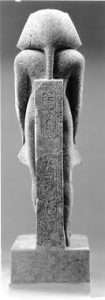
long or short?
A work in progress: ''In southern Turkey's Amuq Valley, a curious one-inch-tall lead figurine unearthed in a grain silo at a rural Bronze Age site known as Toprakhisat Hoyuk. A resilient river system, making it a haven in dry periods....Gives a glimpse into how villagers dealt with drought conditions in 2000BC....Very similar to the Mesopotamian foundation pegs, conical or nail shaped objects, inscribed with dedications to the gods and placed under walls of important buildings.'' [Page 16 'Archaeology' July-August 2023].
Period change between Bronze and Iron Age?
Neil Oliver to enlarge.
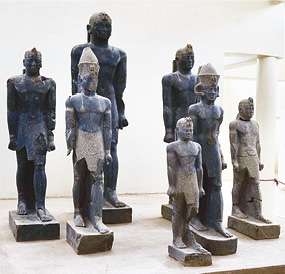
'seven' or 'ten' found?
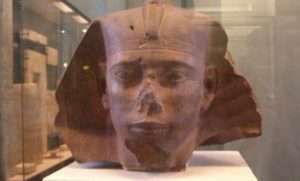
Djedefre's defacement of the nose.
"The cache of statues was not found at Kerma, however, but at another settlement, now known as Dukki Gel, a few kilometres away. Dukki Gel (a Nubian term meaning ‘red mound’) is commonly believed to be the site of the ancient city of Pnubs. There had been a temple of Amun at Pnubs, which experienced much the same fate as the Temple of Amun at Gebel Barkal. It was founded by Thutmose III, and converted to a temple of Aten worship by Akhenaten (it is one of the most southerly versions of an Aten temple), before being rededicated to Amun during the Nineteenth Dynasty. We saw several examples of talatat blocks in the museum that were found in situ at the site. Having been largely abandoned during the Ramesside era, the temple was restored by the Nubian rulers of the Twenty-fifth Dynasty.
The settlement of Pnubs continued to be inhabited by later Napatan rulers until an invasion of Kush by the Twenty-sixth Dynasty king Psamtek II (documented on his ‘Victory Stela’ at Kalabsha) forced the Kushite king Aspelta to move the focus of his kingdom further south towards the relative safety of the city of Meroë. It was possibly during this invasion that the many statues of various Napatan kings were mutilated and carefully buried at both Dukki Gel and Gebel Barkal. When they were first analysed, it became apparent that they had been intentionally damaged using a bronze chisel. The almost perfect state of conservation of the stone surfaces also indicated that very little time elapsed between the destruction of the statues and their burial. It was most probably Aspelta – who reigned for a further 20 years after the invasion of Psamtek II – who ordered their careful burial on hallowed ground."
"According to relevant inscriptions, Aspelta was selected as ruler by a committee of twentyfour religious and military leaders. He then set out north to Napata to be selected as king by the gods and crowned."
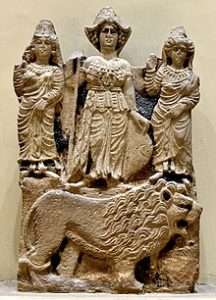
Sixteen to enlarge.
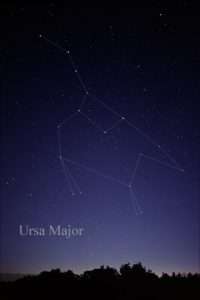
The Bear. A 'She' bear. ''Train of thought''? ''Station of no station''?
And/or: ''Archaeologists rarely unearth the remains of large predators such as leopards, lions, and bears. But some wondered if by looking at a large number of sites over thousands of years, they could identify evidence that ancient people hunted them....Leopard bones were relatively numerous at neolithic period {9700-4700BC}. - but were vertually non-existent in later Copper and Bronze Age {4700-1200BC} where lion and bear bones prevailed....''You would not expect to see a pattern if these figures were random encounters.''
The hypothesis is: ''It reflects the changing symbolic importance of large predators over time.''
"Dawn always begins in the bones."
Saturn?
Conjunction?

Hitting or missing it? Bullseye to enlarge.
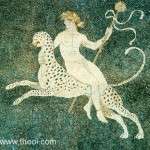 And/or: It has been suggested that the term Stada originated from the Aramaic satat da, meaning 'gone astray', which may have been a reference to the quote saying Miriam had had a paramour or 'lover'. However, since all the other names from the biblical family have had Egyptian origins, perhaps this name does too. If this were the case, then the obvious derivation would be stata, meaning 'archer'....It has long been thought that the name Pandira was derived from the Latin pantera meaning 'panther', and so some historians have sought to associate this title with a Roman legionary of the same name...a cohort of archers. [Page 101 'Cleopatra to Xhrist' / R. Ellis].
And/or: It has been suggested that the term Stada originated from the Aramaic satat da, meaning 'gone astray', which may have been a reference to the quote saying Miriam had had a paramour or 'lover'. However, since all the other names from the biblical family have had Egyptian origins, perhaps this name does too. If this were the case, then the obvious derivation would be stata, meaning 'archer'....It has long been thought that the name Pandira was derived from the Latin pantera meaning 'panther', and so some historians have sought to associate this title with a Roman legionary of the same name...a cohort of archers. [Page 101 'Cleopatra to Xhrist' / R. Ellis].
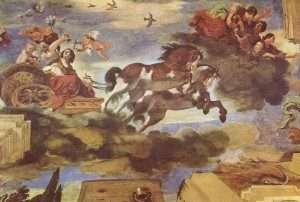
The Roman Goddess of Dawn. Whose brother was the sun, and sister the moon. Painted by the same artist, as that of The Shepherds of Arcadia. Boehmes first book after twelve years was called Aurora, supposedly never finished. As are a number of publications. Purposely. Question. Why? All dried up?[ Eclipse Of The Sun: An Investigation Into Sun and Moon Myths by J. McCrickard].
Mountain low, valley high.
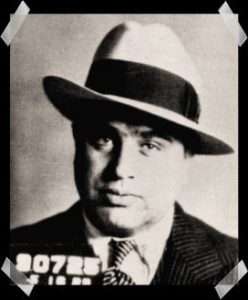
"In the middle of all that prohibition the legacy that Al Capone left has got nothing to do with booze. Its the sell by date of a bottle of milk! It was during the depression when the schools were bankrupt. Capone donated a million dollars for the school children on the CONDITION that the date was stamped on the bottle - because he remembered how he hated the sour milk he was given as a child. AND THAT EXISTS TO THIS DAY. Isn't that the strangest thing?" ['Billy Connolly's Route 66' / S1 EP1]. R.I.P.
Leavened /UNleavened to enlarge.
Spirit OR soul?
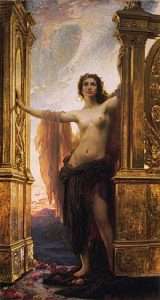
Goddess of Dawn. Gateway to the light.
Question. A balance of the two in order to move {static/dynamic?} forward?
Working example: Odysseus required to 'mix' certain foods in order to 'move on'. Requirements given to him by an aspect of himself {'Circe'}. The narrator Simon Armitage wonders about White Barley Meal in relation to the other 'foods' i.e., Water, Milk, Sweet wine, and Honey - all placed into a 'pit' {cubit square hole}.
"Oatmeal is a preparation of oats that have been de-husked, steamed, and flattened, or a coarse flour of hulled oat grains (groats) that have either been milled (ground), rolled, or steel-cut. Ground oats are also called white oats. Steel-cut oats are known as coarse oatmeal, Irish oatmeal, or pinhead oats. Rolled oats were traditionally thick old-fashioned oats, but can be made thinner or smaller, and may be categorized as quick oatmeal or instant oatmeal depending on the cooking time required, which is determined by the size of the oats and the amount of precooking."
'Quern' stone to enlarge.
Refresher: "The Siren heralds a friend, the bee a stranger."
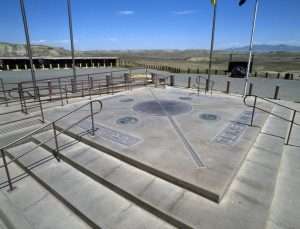
"Four Corners Monument, marking the only spot in the United States where four states (Arizona, Utah, Colorado, and New Mexico) come together." 'Gathering/Scattering'.
And/or: "Caer Sidi in the Spoils of Annwm is given a new synonym {new 'name'?}, in each of the seven stanzas. It appears as Caer Rigor {'the royal castle'} with a pun maybe on the Latin rigor mortis; Caer Colur {'the gloomy castle'}; Caer Pedryvan {'four cornered castle'}, four times revolving; Caer Veditvid {'the castle of the perfect ones'}; Caer Ochren {'the castle of the shelving side' - i.e., entered from the side of a slope - i.e., in profile?}; Caer Vandwy {'the castle on high'}. I do not know who the canonical 'seven' were, but among those eligible.....
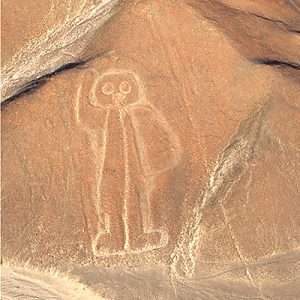
Nazca 'owl'.
....were the sacred kings of Bronze Age Ireland, who were solar kings of a most primitive type , to judge by the taboos which bound them....were buried beneath these barrows; but their 'spirits' went to Caer Sidi, the castle of Ariadne, namely Corona Borealis. Thus the pagan Irish could call Newgrange 'Spiral Castle'.....A revolving wheel before the door of a castle is common in Goidelic legend. According to Keating , the magic fortress of the enchantress Blanaid {'primrose' link?} - in the Isle of Man, was protected by one - Nobody could enter UNTIL IT WAS STILL." [Page 103, 'White Goddess' / R. Graves].
She who loves silence.
Still waters run deep.
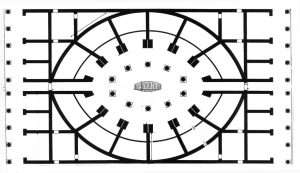
'Bathing' to enlarge.
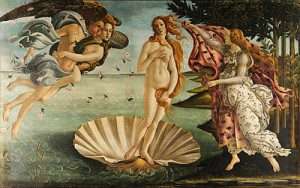
Gnosis has been said to be the golden thread of divinity upon which all the pearls of the world’s religions are hung.
And/or: Historian Suetonius wrote a vivid description of the palace in the Lives of the Caesars, Nero: “Its vestibule was large enough to contain a colossal statue of the emperor a hundred and twenty feet high; and it was so extensive that it had a triple colonnade a mile long. There was a pond too, like a sea, surrounded with buildings to represent cities, besides tracts of country, varied by tilled fields, vineyards, pastures and woods, with great numbers of wild and domestic animals. In the rest of the house all parts were overlaid with gold and adorned with gems and mother-of-pearl.....
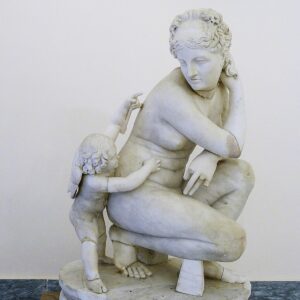
A beginning, end and continuation. Which and why? Going 'bald'?
There were dining-rooms with fretted ceils of ivory, whose panels could turn and shower down flowers and were fitted with pipes for sprinkling the guests with perfumes. The main banquet hall was circular and constantly revolved day and night, like the heavens. He had baths supplied with sea water and sulphur water. When the edifice was finished in this style and he dedicated it, he deigned to say nothing more in the way of approval than that he was at last beginning to be housed like a human being.”

“Most certainly, I tell you, one who doesn’t enter by the door into the sheep fold, but climbs up some other way, is a thief and a robber."
The description appeared so over-the-top that modern-day historians were highly doubtful that it accurately reflected the actual palace. However, the latest discovery suggests that Suetonius’ description was at least partially correct.
'120'.
And/or: Rhodes (/roʊdz/ ⓘ; Greek: Ρόδος, romanized: Ródos [ˈroðos]) is the largest of Greece's Dodecanese islands and their historical capital; it is the ninth largest island in the Mediterranean Sea. Administratively, Rhodes constitutes a separate municipality within the Rhodes regional unit, which is part of the South Aegean administrative region.
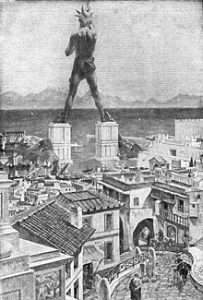
The Colossus of Rhodes: “To you, O Sun, the people of Doric Rhodes raise this bronze statue which reaches Olympus after calming the waves of war and crowning their city with the spoils of the enemy. Not only over the seas but also on land they light the sweet torch of freedom. “
Votive inscription on the Colossus.
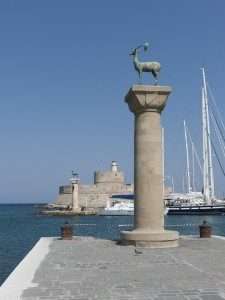
Stag and deer.
The island has been known as Ρόδος (Ródos) in Greek throughout its history. Similar-sounding ῥόδον (rhódon) in ancient Greek was the word for the rose, whilst in modern Greek the also similar-sounding ρόδι (ródi) or ρόιδο (róido) refers to the pomegranate. It was also called Lindos (Ancient Greek: Λίνδος).[4][5] In addition, the island has been called Rodi in Italian, Rodos in Turkish, and רודי (Rodi) or רודיס (Rodes) in Ladino.
The Travels of Sir John Mandeville incorrectly reports that Rhodes was formerly called "Collosus", through a conflation of the Colossus of Rhodes and Paul's Epistle to the Colossians, which refers to Colossae.[6]
The island's name might be derived from erod, Phoenician for snake, since the island was home to many snakes in antiquity.[7]
.......................
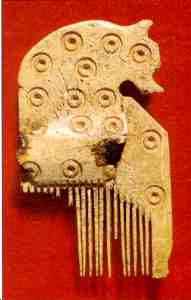
Viking comb in form of a horse head.
And/or:
Tonsure (/ˈtɒnʃər/) is the practice of cutting or shaving some or all of the hair on the scalp as a sign of religious devotion or humility. The term originates from the Latin word tonsura (meaning "clipping" or "shearing"[1]) and referred to a specific practice in medieval Catholicism, abandoned by papal order in 1972. Tonsure, in its earliest Greek and Roman origin, was used as a sign or signifier for slavery.[2][3] Tonsure can also refer to the secular practice of shaving all or part of the scalp to show support or sympathy, or to designate mourning. Current usage more generally refers to cutting or shaving for monks, devotees, or mystics of any religion as a symbol of their renunciation of worldly fashion and esteem.
Tonsure is still a traditional practice in Catholicism by specific religious orders (with papal permission). It is also commonly used in the Eastern Orthodox Church for newly baptised members and is frequently used for Buddhist novices, monks, and nuns. The complete shaving of one's head bald, or just shortening the hair, exists as a traditional practice in Islam after completion of the Hajj and is also practised by a number of Hindu religious orders.
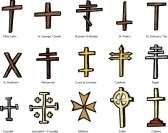
Balanced/UNbalanced. Which and why?
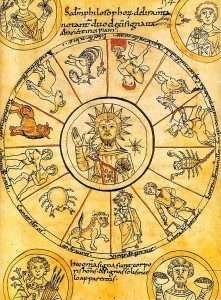 Side note: For St. Augustine and many more before and after him, the sick, the deaf, and the dead in the Gospels are the sick and deaf, and the dead within. And in speaking of the two blind men who, sitting by the way side as Jesus was passing, cried out and asked that their eyes might be opened, he asks if we can really suppose that this is merely an account of a miraculous event concerning two physically blind men? Why does it say that the crowd try to restrain them, and that they fight against it and insist on attracting the attention of Jesus? 'They overcame the crowd, who kept them back, by the great perseverance of their cry, that their voice might reach the Lord's ears. . . . The Lord was passing by and they cried out. The Lord stood still and they were healed. For the Lord Jesus stood still and said, What will ye that I shall do unto you? They said unto him, That our eyes may be opened.' (Matthew xx.30-34) The blind here are those who cannot see but wish to see. Augustine says they are those who are blind in their hearts and realise it. Like the deaf, like the sick and the dead, the blind are a certain kind of people. They are, in this case, people in a certain inner state, knowing they are blind, and wishing to see clearly. {'The Mark' / M. Nicoll}.
Side note: For St. Augustine and many more before and after him, the sick, the deaf, and the dead in the Gospels are the sick and deaf, and the dead within. And in speaking of the two blind men who, sitting by the way side as Jesus was passing, cried out and asked that their eyes might be opened, he asks if we can really suppose that this is merely an account of a miraculous event concerning two physically blind men? Why does it say that the crowd try to restrain them, and that they fight against it and insist on attracting the attention of Jesus? 'They overcame the crowd, who kept them back, by the great perseverance of their cry, that their voice might reach the Lord's ears. . . . The Lord was passing by and they cried out. The Lord stood still and they were healed. For the Lord Jesus stood still and said, What will ye that I shall do unto you? They said unto him, That our eyes may be opened.' (Matthew xx.30-34) The blind here are those who cannot see but wish to see. Augustine says they are those who are blind in their hearts and realise it. Like the deaf, like the sick and the dead, the blind are a certain kind of people. They are, in this case, people in a certain inner state, knowing they are blind, and wishing to see clearly. {'The Mark' / M. Nicoll}.
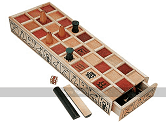
The 'middle' way.
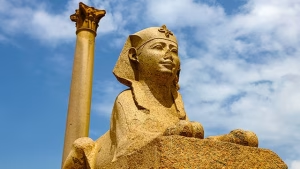
The Serapeum was built in the 2nd century BC during the reign of the Egyptian king Ptolemy III. 'Nose'?
Continued: "There is a cycle in each day, there is a cycle in each hour; where water and fire interact, this is a cycle. One interaction is the "revolving of Heaven." As long as you are unable to stop {'still'?} the mind directly, as a consequence there are times of interaction and times of non-interaction. Yet the revolving of Heaven never stops for a moment. If you are able to join yin and yang in tranquillity, the whole earth is positive and harmonious; in the right place in your central chamber, all things expand to fulfilment. This is the method of "bathing" spoken of in alchemical classics. What is it if not the great cycle? {26000?}." [Page 58 'The Secret of the Golden Flower' / T. Cleary].
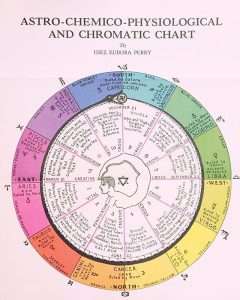
N.B. The United Kingdom = the N/W TIP of Europe.
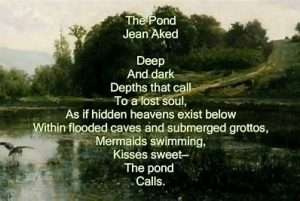
Stillness? Silence?
'Stretch' ones horizons.
'Broad' / 'twentysix'.
'Fortysix'?
Side note: The Serapeum of Alexandria was an ancient Greek temple built by Ptolemy III Euergetes (reigned 246–222 BC) and dedicated to the Greco-Egyptian syncretic god Serapis, made the protector of Alexandria, Egypt. The site has been heavily plundered[1] .......Located on a rocky plateau, it would have overlooked surrounding land, sea to the north and Lake Mareotis to the south.[1] By all detailed accounts, the Serapeum was the largest and most magnificent of all temples in the Greek quarter of Alexandria.
North-west?
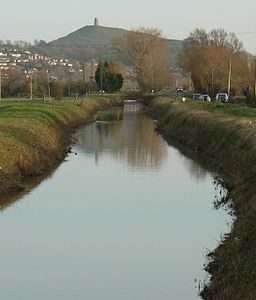
Isle of 'glass'.
Excavations in 1944 uncovered foundation deposits consisting of ten plaques made from gold, silver, bronze, Egyptian faience (a glazed ceramic), Nile mud, and opaque glass. These plaques bore inscriptions in both Greek and Egyptian, confirming Ptolemy III as the founder and naming the architect Parmeniskos. Roman rebuilding and expansion between 181 and 217 CE are evident from granite columns and other architectural elements found on site.
Working example: Karnak to enlarge.
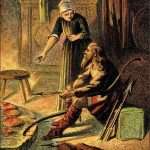
Leavened or UNleavened?
CONTINUED: "The Beltain bonfires were traditionally kindled from tein-eigin {need-fire} generated by the 'friction of a rotating wheel', and this was perhaps a link with the wheel god, Taranis - who figured significantly in Lindow Man's death.....It is in Scotland that the clearest traces of human 'sacrifice' in connection with Beltain have been noted. This evidence is supported by Welsh folklore and there is more than a hint of it in Ireland. In all cases the victim was chosen by means of the burned piece of festive pancake." [Page 36 'The Life and Death of a Druid Prince' / A. Ross and D. Robins].
At Abu Simbel - Ramses inner scene of an offering to himself. His 'higher' self - of water, bread, and lotus flower.
Philemon to enlarge.
Philae?
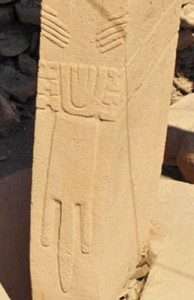
Trickster type as a means....? Try 2:7 / 2:11 to enlarge.
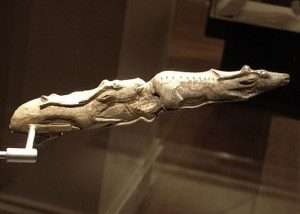
Two swimming reindeer on the tip of a mammoth horn.
Something extra:{and/or refresher}: "What is remarkable about all this is the way that the 'mill' {which continues to serve as an allegory for cosmic processes} stubbornly keeps on resurfacing, all over the world, even where the context has been jumbled or lost....Among the Cherokees, whose name for the Milky Way {our own galaxy} is 'Where the Dog Ran'. In ancient times, according to Cherokee tradition, 'the people in the South had a corn mill', from which meal was stolen {trickster type?} again and again. In due course the owners discovered the thief, a dog, who 'ran off howling to his home in the North' with the meal dropping from his mouth as he ran, and leaving behind a white trail where now we see the Milky Way, which the Cherokee call to this day - ''Where the Dog Ran''....

Stag and deer.
In Central America, one of the many myths concerning Quetzalcoatl depicts him playing a key role in the regeneration of mankind after the all destroying flood that ended the Fourth Sun. Together with his dog headed companion Xolotl, he descends into the underworld to retrieve the skeletons of those 'killed' ….the bones are brought back.... like corn, they are milled into a fine meal on a grindstone....blood is added by the gods thus creating the flesh of the current age of man.....Dogs are numerous throughout {Odysseus is recognised by his 'faithful' dog on his return to Ithaca} - as are foxes which are members of the dog family i.e.,Samson and 300 foxes.....Santilla and von Dechend are confident that all this 'doggishness' is deliberate: another piece of the ancient code, as yet unbroken, tapping out its message from place to place...." [Page 253/4 'Fingerprints of the Gods' / G. Hancock].
Anubis.
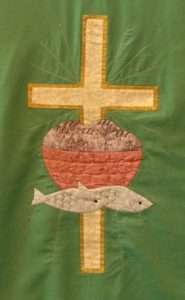
Bread/fishes.
To get us close to an answer {mind set?} attempt to narrow down those keys/concepts/signs/correspondences etc. Try ''Sweet'' {as opposed to 'bitter'} / ''Barley'' {in relation to 'wheat'} while recalling that a statue of Khafre was found ''upside down'' in a pit in the Sphinx temple. And/or: any 'Squared' Cubit in the night sky? ALL in relation to a ''foundation''?
Question. A foundation of what?
Question 2. What would ''BLACK Ram's blood'' represent. Aries? All in relation to a ''broken heart'' {i.e., another aspect of his nature represented as his ''mother''}.
''Odysseus travels onwards, but he does so as a changed man. Everything he had achieved at Troy, now seems like a huge waste {death/rebirth?}. 'Boundaries' between both. Hence the link with such concepts as 'Circe' and others . Priorities changing {'changeling'?}.
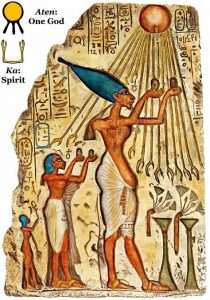
Lotus? S/E perspective? 'Helping hands' N/E? Right or left foot? What about the hypotenuse? All as a means...
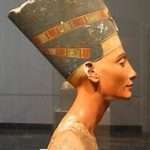
Sculptured by ''The favourite of the King''.
Indian {counter culture? i.e., from a different perspective} - analogy..."When the Bose institute was opened, i attended the dedicatory services. Enthusiastic hundreds strolled over the premises. I was charmed with the artistry and spiritual symbolism of the new home of science. Its front gate is a centuried relic from a distant shrine. Behind a lotus pool, a sculptured female figure with a torch conveys the Indian respect for women as the immortal light bearer. A small temple in a garden is consecrated to the Noumenon beyond phenomena. Thought of the divine incorporiety is suggested by the absence of any altar image {i.e.,'fire'?}." [Extract from the book 'Autobiography of a Yogi'. Chapter Eight].

The memory of the disaster of Atlantis had survived in Japan and was preserved in a solemn féte which was celebrated with much pomp. It was the féte of lamps or lanterns which is still celebrated in China and in India, such as was celebrated formerly in Egypt.
'Shadow' in relation to light [anima?]. As a MEANS to begin an understanding. S/W in relation to S/E?
And/or: Eastern Way = more ''subjective'' as opposed to the Western one?
Side step..."Etymology of the name 'Helen' could derive from the noun meaning ''torch'' and/or the root of the name Venus." [Wikipedia/Helen].
Homer's equivalent of the Hebrew 'Shulamite' or the Egyptian 'Nefertiti' {enlarged elsewhere} - as a means to...?
Question. Conspiracy obsessives?
Understanding the above. defines; or at least gives the reader an idea at what this author is hinting at...
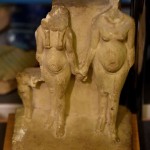

Objective or subjective?
"Feet on the ground is an important part of Western posture. The destiny of the soul incarnate in the West is control of the physical environment. Mark the word control {'panther' link?} - and not abuse. That of the Eastern soul is more subjective. There the feet are best raised above the base of the spine, or closely conjoined to it, so forming a closed circuit of the aura not open to objective Earth currents." [Extract from the book by G. Knight]. As a means...?
UPSIDE DOWN?
'On Having No Head: Zen and the Rediscovery of the Obvious' / D. E. Harding.
"The Eastern schools recommend a posture seated, cross - legged in the lotus position." Anything?
With/without 'altar'? As a means...?
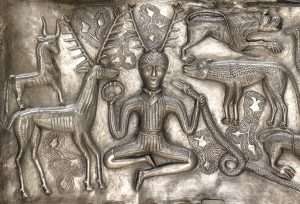
A Western or eastern perspective?
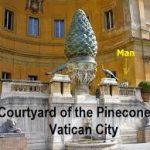 "Sing to me of Oakenhill Wood. The trees were not oaks; they were conifers, but no matter...'It is i think, the sudden stillness, the stillness of a tall, a slender tree, the narrow, arrow straightness of the path, the unexpected consciousness of ''now'' - that grips, evokes and beckons; lifts high the latch of mystery. You cannot tread that way. Your feet will kick the door shut as they run. This path is not for treading; it does not lead, like that; to anywhere, like that. Rather, it is its destination; full known and fully trod when first began." ['The Sword in the Sun' / A. Duncan]. Try ''latch'' and/or ''conifer''.
"Sing to me of Oakenhill Wood. The trees were not oaks; they were conifers, but no matter...'It is i think, the sudden stillness, the stillness of a tall, a slender tree, the narrow, arrow straightness of the path, the unexpected consciousness of ''now'' - that grips, evokes and beckons; lifts high the latch of mystery. You cannot tread that way. Your feet will kick the door shut as they run. This path is not for treading; it does not lead, like that; to anywhere, like that. Rather, it is its destination; full known and fully trod when first began." ['The Sword in the Sun' / A. Duncan]. Try ''latch'' and/or ''conifer''.
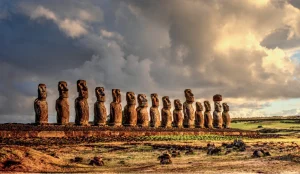
'Stillness'?
And/or: "...she was the White Goddess Cardea. And although he became the 'door' {i.e., Janus: 'the stout guardian of the Oak door'} - she became the hinge that connected him with the door --post. Cardo, the hinge, is the same word as Cerdo, the craftsman - in Irish myth the god of craftsmen who specialised in hinges, locks and rivets was called Credne - the craftsman who originally claimed the goddess Cerdo or Cardea as his patroness.''
'Rust' to enlarge.
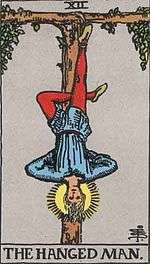
Flower pot head?
Question. Anima or Animus as a means....?
And/or: The word solstice is derived from the Latin sol ('sun') and sistere ('to stand still'), because at the solstices, the Sun's declination appears to "stand still"; that is, the seasonal movement of the Sun's daily path (as seen from Earth) pauses at a northern or southern limit before reversing direction.[citation needed]
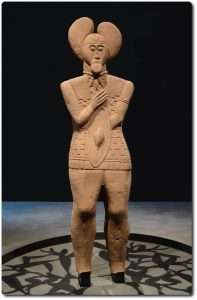
Eastern or western?
For an observer at the North Pole, the Sun reaches the highest position in the sky once a year in June. The day this occurs is called the June solstice day. Similarly, for an observer on the South Pole, the Sun reaches the highest position on the December solstice day. When it is the summer solstice at one Pole, it is the winter solstice on the other. The Sun's westerly motion never ceases as Earth is continually in rotation. However, the Sun's motion in declination (i.e. vertically) comes to a stop, before reversing, at the moment of solstice. In that sense, solstice means "sun-standing".
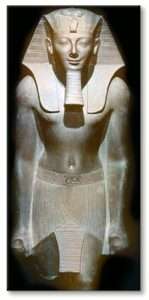
Static or dynamic?
This modern scientific word descends from a Latin scientific word in use in the late Roman Republic of the 1st century BC: solstitium. Pliny uses it a number of times in his Natural History with a similar meaning that it has today. It contains two Latin-language morphemes, sol, "sun", and -stitium, "stoppage".[11] The Romans used "standing" to refer to a component of the relative velocity of the Sun as it is observed in the sky. Relative velocity is the motion of an object from the point of view of an observer in a frame of reference. From a fixed position on the ground, the Sun appears to orbit around Earth.[12]
To an observer in an inertial frame of reference, planet Earth is seen to rotate about an axis and orbit around the Sun in an elliptical path with the Sun at one focus. Earth's axis is tilted with respect to the plane of Earth's orbit and this axis maintains a position that changes little with respect to the background of stars. An observer on Earth therefore sees a solar path that is the result of both rotation and revolution.
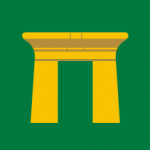
''Doorway''?
Continued: "Thus as Janus's mistress, Cardea was given the task of keeping from the door the nursery boggy who in matriarchal times was her own august self and who was propriated at Roman weddings with torches of Hawthorn. Ovid says of Cardea, apparently quoting a re-ligious formula: 'Her power is to open what is shut, and to shut was is open'...." [Page 68/9 'The White Goddess' / R. Graves].
'''Someone or something that is august is dignified and impressive. [formal] ...that august body, the United States Senate. Synonyms: noble, great, kingly, grand More Synonyms of august.''
Side note: ''slender tree'' in relation to Homer's Iliad, i.e.,the Dog Star {Achilles}. And/or ''latch'' in relation to those copper ones in the ascending passageway of the that well known monument.
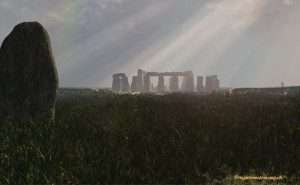 ''Slender tree'' in relation to the Tree of Life {i.e., in the 'internal' sense of the word}. Understanding that gives clues as to Wood-henge V Stonehenge. That 'journey' between the two. Down stream and then back up stream. A joining of the two. Hence tongue and groove joints that one normally associates only with wood. Something of an inner quality being understood and represented. {Khonsu link}. No analysis is given to most of the above especially the 'river' {and/or u-bends} between the two. Understand ALL the parts to define a MIND SET. Not just those that seem comfortable to the imagination.
''Slender tree'' in relation to the Tree of Life {i.e., in the 'internal' sense of the word}. Understanding that gives clues as to Wood-henge V Stonehenge. That 'journey' between the two. Down stream and then back up stream. A joining of the two. Hence tongue and groove joints that one normally associates only with wood. Something of an inner quality being understood and represented. {Khonsu link}. No analysis is given to most of the above especially the 'river' {and/or u-bends} between the two. Understand ALL the parts to define a MIND SET. Not just those that seem comfortable to the imagination.
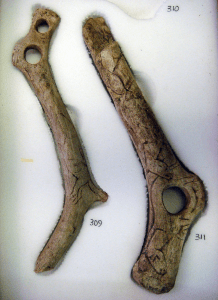
Upper paleolithic reindeer antler tools with figurative art. 'Joint'?
Petrified wood (from the Latin root petro meaning "rock" or "stone"; literally "wood turned into stone") is the name given to a special type of fossilized remains of terrestrial vegetation. Petrifaction is the result of a tree or tree-like plants having transitioned to stone by a mineralization process that often includes permineralization and replacement. The organic materials making up cell walls have been replicated with minerals (mostly a silicate, such as opal, chalcedony, or quartz). In some instances, the original structure of the stem tissue may be partly retained. Unlike other plant fossils, which are typically impressions or compressions, petrified wood is a three-dimensional representation of the original organic material. [Wiki].
'Written in Stone' / 'Set in Stone' - as a means....?
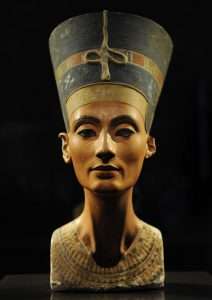
'Tower'?
Try ''ossify'' - to take it further.
A {'western'?} example: "In comparison to mediaeval man we are really lopsided shadows, for we are governed by our thinking brain which grips feet and fingers around our head and shoulders like Sinbad's Old Man of the Sea. Because of this demonic grip of intellect {'Tower of Babel'?} - it is difficult for us to 'see' the mediaeval symbols and art forms in the right way; that is, as they were meant to be seen..." ['The Secret Zodiac'].
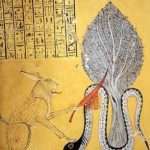
In ancient Egypt the Scorpion symbol {'M'} was a viper or cobra with double loops. And/or: ''The Latin word for 'alive' is Viper.'' ['The Chase'].
"It is said that Queen Tiye came from the east, across the seas...meaning 'Tiye of the Sea'. This is a similar title to the one given to Mary {Magdalene} who was sometimes known as Marie Stella {the Mary Celeste}, or the Sea Star."
'The star of ones being is rising'.
 And/or: "Another striking similarity between Egyptian and Celtic jewellery is the golden shoulder collar or cape...
And/or: "Another striking similarity between Egyptian and Celtic jewellery is the golden shoulder collar or cape...
The gold cape was found in 1833 by workmen in Mold, north Wales. Among artifacts found was a crumbled sheet of gold which, when finally unfolded, turned out to a golden cape thgat covered the entire neck and shoulders....

Spots/stripes and lozenges?
Accounts of the exact circumstances vary: either during the filling of a gravel pit or while they were quarrying for stone.[7][8]
The cape was within a Bronze Age burial mound known as Bryn yr Ellyllon, which translates to "Goblins' Hill". The gold cape had been placed on the body of a person who was interred in a rough cist (stone-lined grave) within the mound. The preserved remains of the skeleton were fragmentary, and the cape was badly crushed. An estimated 200–300 amber beads, in rows, had originally been on the cape, but only a single bead survives today. Also associated with the cape were remains of coarse cloth and 16 fragments of sheet bronze which are likely to have been the backing for the gold: in places the gold was attached to the bronze sheeting with bronze rivets. Among the artefacts found there also were two gold 'straps'. An urn, with large quantities of burnt bone and ash, was found 60–90 cm (24–35 in) from the grave.
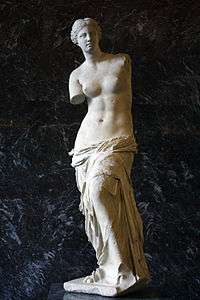
Common factors?
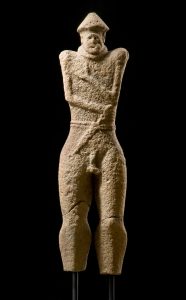
Restricted? Naked/Garment to enlarge.
The cape is 458 mm (18.0 in) wide. It was designed to fit someone of a very slight build, perhaps a teenager, and although the sex of the person buried in this grave remains unclear, the associated finds are likely, by comparison with similar contemporary graves discovered, to be those accompanying the burial of a woman.[9] The cape shows signs of having been worn, and appears to have had a leather lining.[10]......The cape is considered to be one of the most spectacular examples of prehistoric sheet-gold working yet discovered. It is of particular interest as both its form and its design are unparalleled. The cape is oval in shape and would cover the shoulders, upper arms, and upper chest of the person wearing it, being higher at the back and lower in the front. As the cape extends so far down the upper body, it would have severely restricted arm movement by pinning them to the wearer's side, so that only the lower arms were usable. For this reason, the cape would not have been suitable for everyday wear. It seems most probable that the cape was used for ceremonial purposes, and may have signified the wearer as a person of spiritual or temporal power: the Bronze Age equivalent of a chasuble, perhaps.

Waiting?
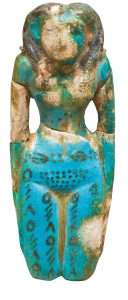
Truncated at the 'knees'.
The craftsmanship with which the cape was constructed is exceptional. The object was beaten out of a single ingot of gold, a task which would have taken considerable time and skill, and was then intensely decorated with repoussé concentric rings of ribs and bosses. The decoration almost totally fills the object's outer surface, so that very little "plain" gold remains. It has been suggested that this decorative motif may mimic multiple strings of beads and/or the folds of cloth.[8]
The value of the metal and the quality of the craftmanship suggests that the cape was produced by a wealthy culture. Scholars speculate that the makers and owners of the cape were associated with the mine on the Great Orme, north Wales, the largest copper mine in north-west Europe at that time.[11]
Mold (Welsh: Yr Wyddgrug ) is a town and community in Flintshire, Wales, on the River Alyn. It is the county town and administrative seat of Flintshire County Council, as it was of Clwyd from 1974 to 1996. According to the 2011 UK census, it had a population of 10,058.[1] A 2019 estimate puts it at 10,123.[3].......The original Welsh-language place name, Yr Wyddgrug, was recorded as Gythe Gruc in a document of 1280–1281, and means "The Mound of the Tomb/Sepulchre".
The name "Mold" originates from the Norman-French mont-hault ("high hill"). The name was originally applied to the site of Mold Castle in connection with its builder Robert de Montalt, an Anglo-Norman lord. It is recorded as Mohald in a document of 1254.

The huntress Artemis is actually the ruler of the Zodiac Cancer. Artemis symbolizes the empathetic and nurturing nature of this sign, since she has magical powers of healing and immortality.
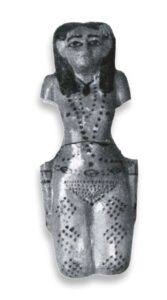
Hathor talisman.
A different perspective {'angle'?}..."Democritus had always been fond of honey; and once he answered a man who asked how he could live in the enjoyment of the best health..... that he might do so if he constantly moistened his inward parts with honey and his outward man with oil." [Chapter 7, 'The Sacred Bee'].
Glaucus to enlarge.
Side note: Mythology of the constellation Cancer. Early Egyptians saw CANCER, The Crab, as a lowly scarab or dung beetle, representing the dawn Sun-god Khephri, a symbol of fertility....According to Greek astrologer and astronomer Claudius Ptolemy, who lived 2,000 years ago, Cancers have a feminine energy and are ruled by the moon {'anima'?}. The moon symbolizes the hidden, emotional world — think of how its gravitational forces influence the earth's ebb and flow....The symbol of the Cancer Zodiac Sign is usually the crab and its claws. Sometimes, you may see the crab sign symbol depicted as a sideways “69” to represent crab claws or a woman's breast. Cancer, the water sign symbolized by the crab, is a creature of both strength and sensitivity....In astrology, Cancer is the fourth sign of the zodiac, considered as governing the period from about June 22 to about July 22. Its representation as a crab (or lobster or crayfish) is related to the crab in Greek mythology that pinched Heracles while he was fighting the Lernaean hydra....
 Hippocrates is credited with naming "cancer" as "karkinoma" (carcinoma) because a tumor looked like a "crab" ("karkinoma" is Greek for "crab") in that there is a central body to a tumor and the tumor extension appeared as the legs of the "crab"....
Hippocrates is credited with naming "cancer" as "karkinoma" (carcinoma) because a tumor looked like a "crab" ("karkinoma" is Greek for "crab") in that there is a central body to a tumor and the tumor extension appeared as the legs of the "crab"....
Though powerful, a werewolf also has an emotional side. Just like the werewolf protects its pact, the cancer would do anything to protect their loved ones, even if it means transforming into a form that may be terrifying to others.
Like a herd of elephants, a herd of bison, a herd of moose. a pack is generally a group of carnivorous animals. like a pack of wolves, a pack of dogs, a pack of cats. A flock is just a group of birds.
 Continued: "The child of the Honey Lord, Aristaeus, whose wisdom discerned the toil of the bees, and the wealth of the labour of Olives learned." [Chapter 9, same book]. Link to Oak Island. Purpose of. Found within.
Continued: "The child of the Honey Lord, Aristaeus, whose wisdom discerned the toil of the bees, and the wealth of the labour of Olives learned." [Chapter 9, same book]. Link to Oak Island. Purpose of. Found within.
"Aristaeus, the son of Apollo and the nymph Cyrene, was worshiped as the giver of good gifts to men, and the protector of flocks and bees." That ''development'' - one stage further - a continuation of. Put ''gift'' in the usual box.
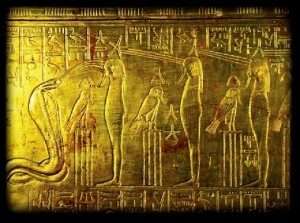
Honey found in tut's tomb. Still edible. Bee images also found. Symbolic? Or food for a nightly visit?
As is the intent of..."In late antiquity a strange, mythical formula or recipe was associated with this formerly very significant date on the first day of the Sirius year. It would seem to have been another way of lending a mythical significance to mead. The equation of honey with 'divine blood' was an accommodation to the Greek god of heaven, the myth of the ''lighting up'' expressed in the name of Zeus. In this case, however, it was not by accommodation but also directly that a natural phenomenon inspired a myth of 'zoe', a statement concerning life which shows its indestructibility in 'fermentation', that is, even in 'decay'. A link seems to have been perceived between fermentation and decay. This myths claim to truth was so great that it provided the basis for a practical formula. This formula was said to have first been devised by Aristaeus, who has been characterized as a ''figure in Greek religious history, concerning whom we have only a fragmentary and dispersed tradition." From this tradition however, the former importance of this god, who belonged to a very old and original stage of development, can be gathered. His place in the history of culture is determined by his relation to honey. He was said to have imparted the use of the beehive to man and was looked upon as the inventor of the mixture of wine and honey. Thus, he belongs to a period of Mediterranean culture which was marked by the domestication of bees, rather than the exploitation of wild bees..." [From the book by C. Kerenyi. Single inverted emphasis, this readers].
That ''development'' marked {noted?} by a comparison between ''domesticated'' and ''wild''. Zeus in relation to ''wild'' - Dionysos in relation to the other {i.e.,''it was said he was the inventor of honey''. Same book}. Recall its symbol.
Question. A 'development' of what. Just mead? Regardless whether wine and/or honey?
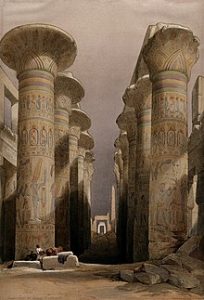
The middle ground.

“Most certainly, I tell you, one who doesn’t enter by the door into the sheep fold, but climbs up some other way, is a thief and a robber."
REFRESHER: "Gudea made offerings of honey and butter when the foundations were laid; when the building was finished an auspicious day was waited for, and when it came the image of the god was removed to the new temple, and Gudea sprinkled the ground with oil, and set out offerings of honey, butter, wine and dates, grain mixed with milk, food untouched by 'fire', for the gods." [ Chapter 3, 'The Sacred Bee']. Recall what 'food' represents, [e.g.,put ''butter'' or ''honey'' or ''milk'' in the 'search box'].
Spirit or soul as a means....?
Something extra:{and/or refresher}: "What is remarkable about all this is the way that the 'mill' {which continues to serve as an allegory for cosmic processes} stubbornly keeps on resurfacing, all over the world, even where the context has been jumbled or lost....Among the Cherokees, whose name for the Milky Way {our own galaxy} is 'Where the Dog Ran'. In ancient times, according to Cherokee tradition, 'the people in the South had a corn mill', from which meal was stolen {trickster type?} again and again. In due course the owners discovered the thief, a dog, who 'ran off howling to his home in the North' with the meal dropping from his mouth as he ran, and leaving behind a white trail where now we see the Milky Way, which the Cherokee call to this day - ''Where the Dog Ran''...." [Page 253 'Fingerprints of the Gods' / G. Hancock].
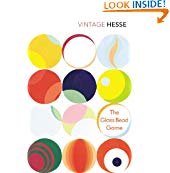
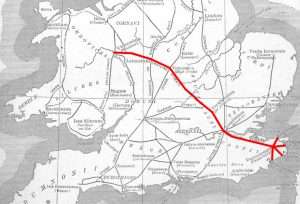
Sheep decans to enlarge.
Side note: Grave goods found near Sittingbourne in a place called the Meads. Cut glass cone shaped beakers found in the shape of a horn. Narrator speculates as to why they are not free standing 'vessels' {i.e., symbolic intent only}. Try ''glass'' / ''horn'' / S/E / 'beaker'' / ''Watling Street'' etc., to get into a mind set beyond: ''love of feasting, love of mead''. ['Digging for Britain'. Series 1. Episode 3].
The 'fruits' of ones labour?
And/or: Eleven cauldrons found in Leicester ''shows the importance of ''feasting''. Remnants of meat and honey found within. Alice Roberts asks: ''Why so many?''. Main answer given: ''to feed the work force''. Elsewhere the only full chariot and rider {with two standing 'ponies'} found {buried} within these 'Islands' {N/E Yorkshire}. ['Digging For Britain' / S.7. E.4].
Get closer to a truer mindset beyond: ''It proves they were not just barbarians'' - TRY ''cauldron'' ''honey'' ''wine'' ''lakes'' ''chariot'' etc.
Epona?
Side note: Dungate is a village near the M2 motorway, in the Swale district, in the English county of Kent. It is near the town of Sittingbourne.

Dung Gate.
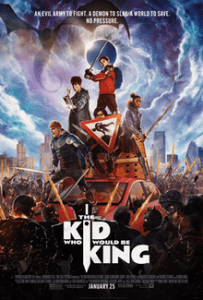
Dungate Academy.
And/or: The Dung Gate (Hebrew: שער האשפות Sha'ar Ha'ashpot), also known in Arabic as the Silwan Gate[1] and Mughrabi Gate (Arabic: باب المغاربة, romanized: Bab al-Maghariba, lit. 'Gate of the Maghrebis'),[2][1] is one of the Gates of the Old City of Jerusalem.[3] It was built as a small postern gate in the 16th century by the Ottomans, first widened for vehicular traffic in 1952 by the Jordanians, and again in 1985 by the Israeli authorities.[4] The Dung Gate is a main passage for vehicles coming out of the Old City and for buses headed to the Western Wall.
Silwan or Siloam (Arabic: سلوان, romanized: Silwan; Greek: Σιλωάμ, romanized: Siloam;[1] Hebrew: כְּפַר הַשִּׁילוֹחַ, romanized: Kfar ha-Shiloaḥ) is a predominantly Palestinian district in East Jerusalem, on the southeastern outskirts of the current Old City of Jerusalem.[2][3]It is mentioned in the Hebrew Bible and the New Testament; in the latter it is the location of Jesus' healing the man blind from birth.
Maghrebis or Maghrebians (Arabic: المغاربيون, romanized: al-Māghāribiyyun) are the inhabitants of the Maghreb region of North Africa.[13] It is a modern Arabic term meaning "Westerners", denoting their location in the western part of the Arab world. Maghrebis are predominantly of Arab and Berber origins.
'153'?
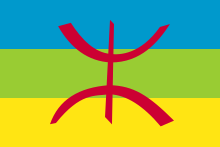
Berber emblem.

Pisces: Back to back? 'H'?
The Dung Gate was originally known as the Maghrebi Gate. This name alludes to the Mughrabi Quarter, a neighborhood of North African Kutama Fatimids, which was historically situated just inside the gate. The same name also refers to a different gate which overlooks the old Mughrabi Quarter site and allows entrance into the Temple Mount above.
The Maghrebi Muslims were renowned for their valour in fighting alongside Salah al-Din, who resettled them on the western side of Al-Aqsa Mosque in order to re-Islamize the city. His son, al-Afdal Ali, later founded the Mughrabi quarter (Harat al-Maghariba) along with the Preferred School.....The original gate was built after the establishment of the Maghrebi Quarter in the aftermath of the liberation of Jerusalem by Saladin in 1187. The Maghrebi Gate was rebuilt in 1313, during the Mamluk period, by Al-Nasir Muhammad bin Qalawun, during the same time that the Chain Gate was renovated.[6]
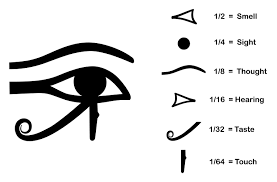
"The blind and the seeing are not alike; nor are the depths of darkness and the light." [Quran 35:19/20].
It is mentioned in the Hebrew Bible and the New Testament; in the latter it is the location of Jesus' healing the man blind from birth.

"Your tympanic membrane (eardrum) is a thin, circular layer of tissue that separates your outer ear from your middle ear. Your eardrum plays an important role in hearing. It also protects your middle ear from dirt, bacteria and debris." Hathor? Oak Island?
Continued: Watling Street was thought of as an imprint of the Milky Way. From S/E England in a N/W direction to the border/boundary of Wales: ''Watling Street was built by the Romans following the same line as the Celtic myth of Giants walking down the same path as described centuries prior to the Roman occupation.'' ['Mirthy' / July 2022].
N.B. Offa's Dyke also indicative of that 'boundary' line.
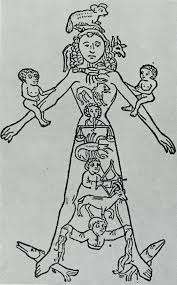 A working example: "Whether our master had in mind an intentional symbolism in this request to clear out the upper room, we shall never know. We had realized some considerable time ago that the main impediment to our spiritual development lay in our untrained thinking, as much as the accumulation of debris {'loft'?} in our minds..."
A working example: "Whether our master had in mind an intentional symbolism in this request to clear out the upper room, we shall never know. We had realized some considerable time ago that the main impediment to our spiritual development lay in our untrained thinking, as much as the accumulation of debris {'loft'?} in our minds..."

Aswan?
And/or: "Swiss researcher Franz Gnaedinger has proposed that the woman's torso and genitalia represents the summer triangle, within which the young bison's head and shoulders are perfectly framed. This is an inspiring theory, although a more positive identification would be to suggest that the woman's vulva and scissor like legs represent the area of the Milky Way known as the Great Rift {also known as the Dark Rift, Cygnus Rift, and Great Cleft}, which is framed within the summer triangle. This is the dark band of stellar dust and debris in line with the galactic plane that causes the Milky Way to appear to split into two separate streams in the region of the Cygnus constellation..." [Extract from the book 'Gobekli Tepe' by A. Collins].
Summer/Winter triangle - put them together. What ''symbol'' do you 'SEE' ?
For this reader a more telling piece of information is the fact that in ancient days the sign for Cygnus was the HEN. Enlarged elsewhere. Clue. ''Egg'' and ''Rooster'' link.
Side note: "A tower pound is equal to 12 tower ounces {'stack'?} and to 5,400 troy grains, which equals around 350 grams.[30] The tower pound is the historical weight standard that was used for England's coinage.[31] Before the Norman conquest in 1066, the tower pound was known as the Saxon pound. During the reign of King Offa (757–96) of Mercia, a Saxon pound of silver was used to set the original weight of a pound sterling.[32] From one Saxon pound of silver (that is a tower pound) the king had 240 silver pennies minted.[33][c] In the pound sterling monetary system, twelve pennies equaled a shilling and twenty shillings equaled a pound sterling.[35]

 The tower pound was referenced to a standard prototype found in the Tower of London. The tower system ran concurrently with the avoirdupois and troy systems until the reign of Henry VIII, when a royal proclamation dated 1526 required that the troy pound to be used for mint purposes instead of the tower pound.[36] No standards of the tower pound are known to have survived.[37]
The tower pound was referenced to a standard prototype found in the Tower of London. The tower system ran concurrently with the avoirdupois and troy systems until the reign of Henry VIII, when a royal proclamation dated 1526 required that the troy pound to be used for mint purposes instead of the tower pound.[36] No standards of the tower pound are known to have survived.[37]
The tower pound was also called the moneyers' pound (referring to the Saxon moneyers before the Norman conquest);[38] the easterling pound, which may refer to traders of eastern Germany, or to traders on the shore of the eastern Baltic sea, or dealers of Asiatic goods who settled at the London Steelyard wharf;[39] and the Rochelle pound by French writers, because it was also in use at La Rochelle.[40] An almost identical weight was employed by the Germans for weighing gold and silver."
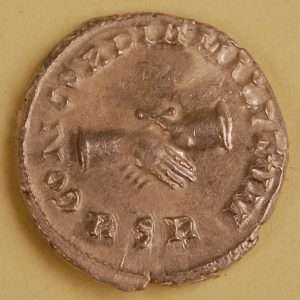
Reverse of a Carausius silver denarius from the Hoard, showing two clasped hands (symbolising the unity of the ruler and the army), alongside the abbreviation 'RSR'. This alludes to a line from Virgil's Eclogues - Redeunt Saturnia Regna or "The Golden Ages have returned".
"A country is not recognised as a country untill it has its own currency." - in relation to documentation that "founded the United States first national mint. In the sixteen{th} year of independence." The first site of which was in Philadelphia...."Its first circulating coins: 11,178 copper cents." {'Pawn Stars' / S17 EP25}.
'Eleven'?

Bell tower.
The city served as the nation's capital until 1800.[13] It maintains contemporary influence in business and industry, culture, sports, and music.[14][15] Philadelphia was founded in 1682 by William Penn, an English Quaker and advocate of religious freedom. The city served as the capital of the Pennsylvania Colony during the British colonial era[3][16] and went on to play a historic and vital role as the central meeting place for the nation's founding fathers. Philadelphia hosted the First Continental Congress in 1774, preserved the Liberty Bell, and hosted the Second Continental Congress during which the founders signed the Declaration of Independence, formed the Continental Army, and elected George Washington as its commander as the colonies entered the Revolutionary War.....

The Bear. A 'She' bear. ''Train of thought''? ''Station of no station''?
The Philadelphia Stock Exchange, owned by Nasdaq since 2008, is the nation's oldest stock exchange and a global leader in options trading.[22] 30th Street Station, the city's primary rail station, is the third-busiest Amtrak hub in the nation, and the city's multimodal transport and logistics infrastructure also includes Philadelphia International Airport, a major Transatlantic gateway and transcontinental hub,[23] and the rapidly-growing PhilaPort seaport.[24]
Philadelphia is a national cultural center, hosting more outdoor sculptures and murals than any other city in the nation.[25][26] Fairmount Park, when combined with adjacent Wissahickon Valley Park in the same watershed, is 2,052 acres (830 ha), representing one of the nation's largest and the world's 45th-largest urban park. Philadelphia is a city of many firsts, including the nation's first library (1731),[35] hospital (1751),[35] medical school (1765),[36] national capital (1774),[37] university (by some accounts) (1779),[38] central bank (1781),[39] stock exchange (1790),[35] zoo (1874),[40] and business school (1881)....
Runnymede.
David Rittenhouse (April 8, 1732 – June 26, 1796) was an American astronomer, inventor, clockmaker, mathematician, surveyor, scientific instrument craftsman, and public official. Rittenhouse was a member of the American Philosophical Society and the first director of the United States Mint.
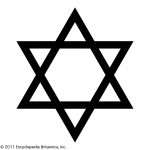
David (/ˈdeɪvɪd/; Biblical Hebrew: דָּוִד, romanized: Dāwīḏ, "beloved one")[a][5] was a king of ancient Israel and Judah and the third king of the United Monarchy,[6][7] according to the Hebrew Bible and Old Testament.
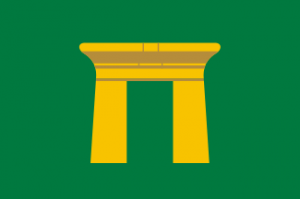
Something 'new'.
In 1681, in partial repayment of a debt, Charles II of England granted Penn a charter for what would become the Pennsylvania colony. Despite the royal charter, Penn bought the land from the local Lenape in an effort to establish good terms with the Native Americans and ensure peace for the colony.[49] Penn made a treaty of friendship with Lenape chief Tammany under an elm tree at Shackamaxon, in what is now the city's Fishtown neighborhood.[3] Penn named the city Philadelphia, which is Greek for "brotherly love", derived from the Ancient Greek terms φίλος phílos (beloved, dear) and ἀδελφός adelphós (brother, brotherly). There were a number of cities named Philadelphia in the Eastern Mediterranean during the Greek and Roman periods, including modern Alaşehir, mentioned as the site of an early Christian congregation in the Book of Revelation. .Before Penn left Philadelphia for the final time, he issued the Charter of 1701 establishing it as a city.
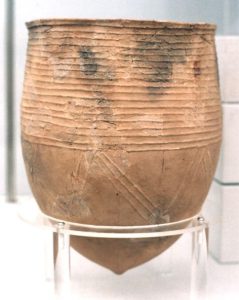
''Pointed bottom'' Jomon pot. The oldest in the world. ''Almost all the pots seem to have been used for cooking fish {salmon}....we dont know why. Because we dont find much in the way of fish remains or fishing gear in the early Jomon period.'' ['Archaeology' / May/June 2022]. Question. 'Nipple'?

David (Hebrew: דָּוִד, Modern: David, Tiberian: Dāwîḏ) means 'beloved', derived from the root dôwd (דּוֹד), which originally meant 'to boil', but survives in Biblical Hebrew only in the figurative usage 'to love'; specifically, it is a term for an uncle or figuratively, a lover/beloved (it is used in this way in the Song of Songs: אני לדודי ודודי לי, 'I am for my beloved and my beloved is for me').[2] In Christian tradition, the name was adopted as Syriac: ܕܘܝܕ Dawid, Greek Δαυίδ, Latin Davidus or David. The Quranic spelling is دَاوُۥد Dāwūd or Dā'ūd.
Popular as this name is nowadays, in the Bible there is only one person named this way. Many names occur more than once, but David's name was never repeated. Perhaps it was for venerative reasons that nobody named their child after the great king David of Israel. The Bible also only lists one Adam, Moses, Abraham, Isaac, Jacob, and the list goes on.
The name David (Δαβιδ; Dabid) appears frequently in the New testament, but solely in constructions: Both Joseph and Jesus are called "son of David" (MATTHEW 1:20, 9:27, MARK 10:47), and Jesus is additionally called the "root of David" (REVELATION 5:5, 22:16). The Messiah's reign is referred to as the "kingdom of David" (MARK 11:10) and the "throne of David" (LUKE 1:32), and his reign would rebuild the "tent of David" (ACTS 15:16). He who is holy can open and no one will shut and vice versa, using the "key of David" (REVELATION 3:7). And once Paul refers to a statement occurring in Psalm 95:7, as being "in David," meaning the work of David (HEBREWS 4:7).
The name David occurs fiftynine times in the New Testament.
'Sixty'?
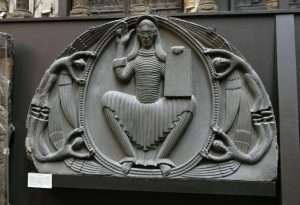
"Christ is shown here surrounded by four angels. The original tympanum (a semi-circular space above a door) was part of Shobdon Church, which was demolished in the 18th century. Its two doorways {'double'?} were re-erected in Shobdon Park as a folly – an outdoor ornamental ‘ruin’. This copy was made from the folly in the 1850s. It was slightly embellished by the caster, as the original carving was badly weathered by then." N.B. Shobdon near the Welsh border.
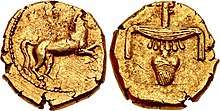
Costly?
Continued: Boudica {Boudicea} battled the Romans somewhere on Watling Street: ''80,000 died compared to 400 Romans.'' ['Secrets of the Celtic Grave' / Smithsonian].
Those 'numbers' again. Used within a mind set. Can they be used to locate someones final 'resting' place?
Side note: "Tympanum: Loosely, the area between an arch and the springing line of the arch. Most commonly used to describe the area above a door and the arch that supports the doorway opening."
'Lintel'.
"The tympanum is also commonly referred to as the eardrum. The tympanic membrane or the eardrum is a thin layer of cone-shaped tissue that separates the outer ear from the middle ear. It facilitates hearing by transmitting the sound vibrations from the air to the bones in the middle ear."
Refresher: "Dawn always begins in the bones."

Compare hands in both pictures. Coincidence? S/E as a start point. Pilgrims Way? 'Thumb' to enlarge.

Goddess of Dawn. Gateway to the light.
"Shobdon is a village and civil parish in Herefordshire, England, about 15 miles north of Hereford, six miles west of Leominster, and 2 miles southwest of the Mortimer's Cross. According to the 2001 census, the parish population was 769, consisting of 386 males and 383 females.[1] The population had increased to 816 by the time of the 2011 census. The parish includes the hamlets of Hanbury Green, Uphampton, Easthampton and Ledicot.
In the 17th century the village of Shobdon was run by the Bateman family (hence the Bateman Arms) who lived at Shobdon Court.
Shobdon church is St John the Evangelist, north of the village. It has a direct connection to Horace Walpole's Strawberry Hill in Twickenham and the members of the "Committee of Taste" which strongly influenced its design."
'Ambrosia'?
Freemasons?

Ponytail. Seen ONLY {more often than not} with an Egyptian 'youth'. Always left side.
Continued {i.e., from finds in N/E Yorkshire}: Rider in fetal position {lying on top of a bronze shield} - but ponies in STANDING one {i.e., 90 degrees to the norm}. Found in Pocklington on the EDGE of the Yorkshire Wolds {i.e., line of low hills along escarpment which drops into the Vale of York}. 'Glass' beads found with spiral engravings. Different 'levels' to the pit because of the UPRIGHT ponies like the different FLAT TOPPED levels of an escarpment - a procession of something.
'Mountain low, Valleys high'?
''No signs of violence on skeleton'' - Warrior/'Hero' as a means.....
And/or: Another shield, a bronze sheet on wood one {Battersea Shield}- spoken about that had been ritually thrown {''offering''} into a river. 'twentyseven' red coloured glassy pastels within three circular forms. OR MORE IMORTANTLY 'nineteen' within the THREE main circles - the remaining 'eight' on the outside edges of those main three. ''
External/Internal. Spirit-fire/Soul {water}. 'SEE' anything?
Quote: ''Getting rid of a lot of wealth. Somehow demonstrating power and status....Many such peices of iron age metal work such as shields and swords found in RIVERS AND BOGS - they are clearly not just functioning weapons but imbued with heavy symbolism.''
''Twentyseven'' to enlarge.
Meat HOOK found. 'Young' pigs + 'feasting' links.
''We think a lot of people gathered around this gravesite. This is a moment that sticks in their memory, and they didn't write any records, but they did write songs and tell stories. We are the last witnesses to that drama....'' [Same program].
Try ''Theme''.
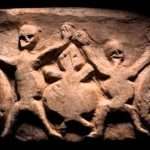
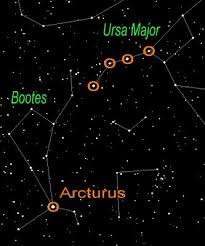
Herdsman or ploughman. Ploughshare?
And/or: "The pig was a beast of great importance to the Celts, both as a staple food and as an Otherworldly totem. The many cuts from the pig were served to selected 'heroes' at feasts to honour their exploits, yet, also, there is a curious ban on having anything to do with their herding. We have seen that Pryderi is named as one of the Three Powerful Swineherds, one in contact with Annwn and the sometimes overwhelming 'Underworld' powers. The 'OLDER' gods and heroes always have this Underworld connection and act as doorkeepers for those who travel to these realms. The hunting of the boar by the boy born in a pig-run is the theme of Culhwch: a quest which is analogous to the Harrowing of Annwn. to gain its treasures. Gwydion wishes to have the Underworlds treasures for his own people and, like Arthur and others who 'travel' to Annwn, is willing to steal them at the cost of many lives." [Pages 77-78 'Mabon and the Mysteries of Britain' / C. Mathews].
Hoars-back?
''They shall beat their swords into ploughshares, and their spears into pruninghooks: nation shall not lift up sword against nation, neither shall they learn war any more.'' (Isaiah 2:4).
''Plough'' to enlarge.
And/or: Road found very close to grave site. At right angles to it. Very close to the ''bend in the road''. Road made of chalk/limestone. ''Could have been the last road that the chariot made its 'journey' on.''
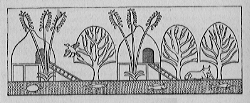
'Reed' huts? Thatched?
In same program Crannog's discussed {'Islands' in one form or another - but most important on LAKES/Loch's}. ['Digging for Britain' 7/4]. 'Butter' dish found. And carpentry main activity.
Question. Where did the ''idea'' of the crannog come from? i.e., artificial Islands.
Quote: ''Defence and protection''?
''Feast of the Valley''? And/or: Massive stone 'jars' found in a valley - N/E Lao. Thousands of years old. No one knows why. Enlarged elsewhere.
Define subject material to get into a mind set.

From a different perspective: Enthroned on Basalt or Granite? Question. Spirit or soul. Top/down or Bottom/up?
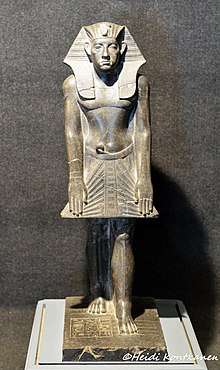
Above or below the navel? Fire or water? Happy or sad.
Side note: "The Feast of the Swings is not the only consideration which makes it seem likely that Dionysos was brought to Athens by 'women'. In its execution the JOYful right was exalted far above animal nature {'lower'?}, and, as already indicated it was connected with another more secret cult action - the gods 'marriage' to the highest ranking woman of the city, who under the democracy still held the title of 'queen'....''
Refresher: ''Monarchy of the eye, with democracy of the nose.''
''In cookery bread that does not rise properly is said to be sad.''
 Unleavened bread is any of a wide variety of breads which are prepared without using rising agents such as yeast or sodium bicarbonate. The preparation of bread-like non-leavened cooked grain foods appeared in prehistoric times.
Unleavened bread is any of a wide variety of breads which are prepared without using rising agents such as yeast or sodium bicarbonate. The preparation of bread-like non-leavened cooked grain foods appeared in prehistoric times.
Unleavened breads are generally flat breads. Unleavened breads, such as the tortilla and roti, are staple foods in Central America and South Asia, respectively. Unleavened sacramental bread plays a major part in Christian liturgy and Eucharistic theology.
'Bread and Wine'?
'Rolling pin' ?
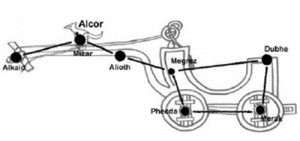 Side note: "His death on the first Sunday in August—called Lugh tiasadh ('Commemoration of Lugh'), later altered to 'Lugh-mass' or 'Lammas'—was until recently observed in Ireland with Good Friday-like mourning and kept as a feast of dead kinsfolk, the mourning procession being always led by a young man carrying a hooped wreath. Lammas was also observed as a mourning feast in most parts of England in mediaeval times; which accounts for the extraordinary popular demonstrations when William Rufus's body was brought up from the New Forest for burial. The peasants were bewailing a mythical Lugh when along came the body of their own red-headed king laid on a harvest cart. Nowadays the only English Lammas celebrated is the Lancashire Wakes Week, the dismal meaning of which has been forgotten among the holiday distractions of Blackpool." {'The White Goddess' / R. Graves}.
Side note: "His death on the first Sunday in August—called Lugh tiasadh ('Commemoration of Lugh'), later altered to 'Lugh-mass' or 'Lammas'—was until recently observed in Ireland with Good Friday-like mourning and kept as a feast of dead kinsfolk, the mourning procession being always led by a young man carrying a hooped wreath. Lammas was also observed as a mourning feast in most parts of England in mediaeval times; which accounts for the extraordinary popular demonstrations when William Rufus's body was brought up from the New Forest for burial. The peasants were bewailing a mythical Lugh when along came the body of their own red-headed king laid on a harvest cart. Nowadays the only English Lammas celebrated is the Lancashire Wakes Week, the dismal meaning of which has been forgotten among the holiday distractions of Blackpool." {'The White Goddess' / R. Graves}.
 Lammas (from Old English hlāfmæsse, "loaf-mass"), also known as Loaf Mass Day, is a Christian holiday celebrated in some English-speaking countries in the Northern Hemisphere[citation needed] on 1 August. The name originates from the word "loaf" in reference to bread and "Mass" in reference to the Eucharist.[3] It is a festival in the liturgical calendar to mark the blessing of the First Fruits of harvest, with a loaf of bread being brought to the church for this purpose.[2] Lammastide falls at the halfway point between the summer solstice and the autumn equinox.[4][5] Christians also have church processions to bakeries, where those working therein are blessed by Christian clergy.[6]
Lammas (from Old English hlāfmæsse, "loaf-mass"), also known as Loaf Mass Day, is a Christian holiday celebrated in some English-speaking countries in the Northern Hemisphere[citation needed] on 1 August. The name originates from the word "loaf" in reference to bread and "Mass" in reference to the Eucharist.[3] It is a festival in the liturgical calendar to mark the blessing of the First Fruits of harvest, with a loaf of bread being brought to the church for this purpose.[2] Lammastide falls at the halfway point between the summer solstice and the autumn equinox.[4][5] Christians also have church processions to bakeries, where those working therein are blessed by Christian clergy.[6]
While Lammas is traditionally a Christian holy day, some neopagans have adopted the name and date for one of their harvest festivals in their Wheel of the Year. It is also the same date as the Gaelic harvest festival Lughnasadh.[7]
 Continued: The current name for Bethlehem in local languages is /Bēt laḥm/ in Arabic (Arabic: بيت لحم), literally meaning "house of meat", and Bet Leḥem in Hebrew (Hebrew: בֵּית לֶחֶם), literally "house of bread" or "house of food."[9][10] The city was called in Ancient Greek: Βηθλεέμ Greek pronunciation: [bɛːtʰle.ém] and in Latin: Bethleem.[11] In Aramaic, the name of Bethlehem was simply the Hebrew name בית לחם, and was pronounced as Beit Lekhem. Evidence for this spelling can be inferred based on the fact that the spelling ܒܝܬܠܚܡ can be found in the Syriac Aramaic version of the bible in Matthew 2[12] as well as other parts of the book. The letters ܒܝܬܠܚܡ transliterate to ביתלחם. Amarna letter EA290 makes reference to a town bīt-ninurta which has been read as Bit-Lachmi by scholar W. F. Albright, following a proposal by Otto Schroeder in 1815 and making it a potential first historical reference to Bethlehem. This reading is, however, uncertain and has met with objections.[13]
Continued: The current name for Bethlehem in local languages is /Bēt laḥm/ in Arabic (Arabic: بيت لحم), literally meaning "house of meat", and Bet Leḥem in Hebrew (Hebrew: בֵּית לֶחֶם), literally "house of bread" or "house of food."[9][10] The city was called in Ancient Greek: Βηθλεέμ Greek pronunciation: [bɛːtʰle.ém] and in Latin: Bethleem.[11] In Aramaic, the name of Bethlehem was simply the Hebrew name בית לחם, and was pronounced as Beit Lekhem. Evidence for this spelling can be inferred based on the fact that the spelling ܒܝܬܠܚܡ can be found in the Syriac Aramaic version of the bible in Matthew 2[12] as well as other parts of the book. The letters ܒܝܬܠܚܡ transliterate to ביתלחם. Amarna letter EA290 makes reference to a town bīt-ninurta which has been read as Bit-Lachmi by scholar W. F. Albright, following a proposal by Otto Schroeder in 1815 and making it a potential first historical reference to Bethlehem. This reading is, however, uncertain and has met with objections.[13]
Continued: ''Here again, just as in the swinging that was one of the amusements of the same festival, we have an expression of the aimless joy of life....
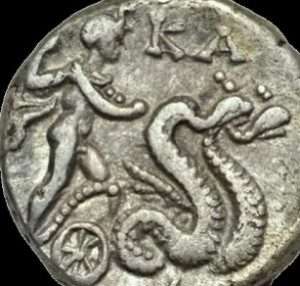
Charioteer?
At what feast, then, was the 'ship car' that had been held in readiness in some storeroom paraded with the enthroned {''seated''} statue of the god? ......
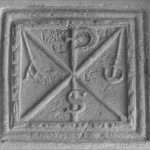
Hung / hang to enlarge.
The joke is an illusion not only to the importance of the Athenian trade in wine and wine JARS, but also to the fact that with Athens as his base Dionysos achieved greater power than he had enjoyed since the Minoan and Mycenaean eras. It was this 'power' that first led the 'sea' to be taken as the scene of his epiphany, as shown in Attic art." [Pages 160 -170 'Dionysos' / C. Kerenyi].
''Foreign spirit''?
In the swing of things - in the positive sense of the word?
Momentum?
Static / Dynamic?
''Democracy is sometimes messy. Sometimes it requires a little patience as well.'' Joe Biden.
And/or: —To-night we will speak about the Law of the Pendulum. By the Law of the Pendulum is meant the swinging of things between opposites. A pendulum swings from one side and then to the opposite side. We can see the Law of the Pendulum at work in nature as in the change of the seasons from winter to summer and back again, to and fro without ceasing, and in the movement of the tides, and in the motion of the waves, up and down, and so on. We also have many pendulums in ourselves, for what is in the Universe is in ourselves. We can observe that we have pendulums swinging between “like and dislike”, between “desire and disgust”, between “happiness and dejection”, between “love and hate”, “affirmation and negation”, “certainty and doubt”, and so on. These pendulums have different periods —that is, length of swing—and, like clocks, some go faster, some go slower, in the same time. That is, they swing faster or slower between opposite signs. Also there is the period of our lives which swings between the opposite signs of birth and death. This is the period of life. We swing physically from birth to death: we do not, however, see the opposite Swing.
Many things are said in ancient literature about the opposites between which all things swing to and fro, as between checking or limiting forces. You must not think that when it is said that things swing to and fro it means that there is no law governing it all. It means that there are checking forces at work. It is said in the Book of Ecclesiasticus (not Ecclesiastes): “All things are double, one against another.” (XLII 24). Let us take this phrase: “All things are double, one against another.” What does it mean that a thing is double? It means that to everything there is an opposite through which it exists and by which it is opposed. As a rough example, darkness implies light as its opposite and light darkness, and together they make one thing, a double thing that we might call “light-dark”, one thing that divided becomes light or dark. Or, to take a psychological example: sorrow and joy are opposites. They are one against the other and together are a “thing” which is double, which we might call “joy-sorrow”. Notice also that sorrow destroys joy, and joy sorrow. They are opposites and so are mutually destructive. Or again, hunger and satiety are opposite states. As hunger is appeased by eating, the opposite—namely, satiety—or even disgust, appears. Then the swing of the pendulum into satiety is followed by its swing back to hunger. What we must see is that hunger and satiety, although so contrary, form one thing, which we can call “hunger-satiety”, and they are inseparable, although one is against the other—that is, you cannot have one without the other, any more than you can have a stick with only one end. In this connection compare the above remark of Ecclesiasticus, “all things are double, one against another,” with an observation made by Philo in the first century a.p. Philo, who was associated with a school in Alexandria, says : “That which is made up of both the opposites is one, and when this one is dissected the opposites appear.” This is a very interesting view of life if you care to reflect on it.
Let us take another ancient reference to the opposites, in this case from that strange piece of esoteric writing found in the second book of Esdras, from the third chapter onwards, in the Apocryphal Old Testament:
“The woods of the trees of the field went forth, and took counsel together, and said, Come, let us go and make war against the sea, that it may depart away before us, and that we may make us more woods. The waves of the sea also in like manner took counsel together, and said, Come, let us go up and subdue the wood of the plain, that there also we may make us another country. The counsel of the wood was in vain, for the fire came and consumed it: likewise also the counsel of the waves of the sea, for the sand stood up and stopped them.” _ (II Esdras \V 13-17)

"A monumental conical pendulum clock by Eugène Farcot depicting the Greek goddess, 1862." Bent knee?
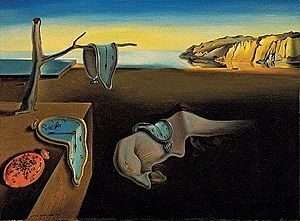
‘Once upon a time, there was no time, and it was then that. . is the traditional opening of a tale told by a Breton storyteller, immediately placing his audience into another realm of existence. It is into this ‘once upon a time’ that we must go to find the first traces of the Western Way, for to start our story within recorded history would be to leave out the most important of beginnings.
In this passage the idea is expressed that everything is kept balanced by means of the law of opposites. One thing checks another. That which checks or destroys another thing can be thought of as its opposite. The wood thinks it will dominate the world and the fire consumes it: the sea thinks it will over-run the plains but the sand checks it. The unknown writer of Esdras is using physical images to represent forces that act in nature that keep everything between certain limits and so prevent any one thing from getting the upper hand permanently. You can think of endless other illustrations of one thing checking another. Think for a moment of how every living creature is attacked and eaten by some other creature so that a balance is kept going. This balance is the result of the work of the opposites....
The Law of the Pendulum indicates that there is a swing to and a swing fro in all things, but after a point in either direction there is a check and the opposite force begins to exert itself. We can see for ourselves that as a pendulum swings further and further, say, to the right, it gets slower and slower until its motion reverses and it swings to the left. That is, the opposites, if we term them “right” and “left”, alternately have power.....
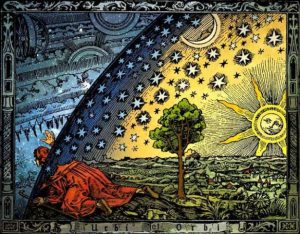
Inner or outer? The 'middle' ground?
Notice that when the pendulum is fully to the “right”, the “right” is weakest and the “left” begins to have power, and vice versa. Sometimes you can see this expressed in psychological experience, as when a man is violently against something and takes an extreme attitude, and suddenly swings to the opposite viewpoint. Many of the phenomena of sudden “conversion” belong to this pendulum swing. There is the case of Paul, who persecuted the early Church with the utmost energy and hatred, and suddenly had an experience that turned him in the reverse direction. {Pages 319-322 'Psychological Commentaries of the Teaching of Gurdjieff and Ouspensky' / M. Nicoll}.
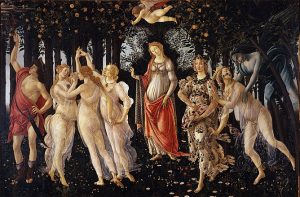
Joyous?
Side note: Practical/working example: ''Hello everyone. Hope you are all well. You may be asking yourself while you are watching this: 'Why is Callie so happy and smiling? How can she be so, in the cold freezing Artic. Shouldn't she be cold and miserable? Well i have a secret - its K. G. Sparkle'. I have a sister who is amazing and hilarious. Those are magic words....whenever she hears them she laughs hysterically for a good twenty minutes. So if i think of K.G. Sparkle i hear her laugh - and that makes me so happy. So if i ever get down i just sprinkle a little K.G. Sparkle on it and it becomes all good." {Callie/'Alone'/2020}.
'Nineteen'?

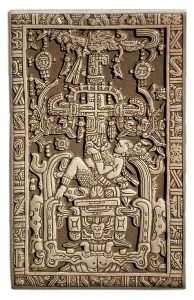 Continued: "The central action was performed in the deepest secrecy within the narrowest limits of strict women's mysteries which no man could approach {carried? By sledge/pallet?}. The 'vase' paintings, however, show that the whole 'city' was very much concerned with the secret action of these days....These actions were performed in and near the temple of Dionysos Limnaios....It occurred on the second day of the festival {feast?}, the only day of the year that the temple was 'open'. The 'three' feast days fell on the eleventh, twelfth, and thirteenth of the month. The first was called Pithoigia - ''day of the opening of the pithoi''. The large earthenware JARS, which were usually half buried, were certainly not dragged to the ''swamps'' any more than they had been in November when wine was drawn from them for the first mixing and tasting. At the time of the fermentation the jars had to be left open; afterwards they were left covered - otherwise all sorts of things, even a 'child' might have fallen in. If the 'lid' was removed on this day, it was for a religious reason.'' [Pages 301/2 - same book].
Continued: "The central action was performed in the deepest secrecy within the narrowest limits of strict women's mysteries which no man could approach {carried? By sledge/pallet?}. The 'vase' paintings, however, show that the whole 'city' was very much concerned with the secret action of these days....These actions were performed in and near the temple of Dionysos Limnaios....It occurred on the second day of the festival {feast?}, the only day of the year that the temple was 'open'. The 'three' feast days fell on the eleventh, twelfth, and thirteenth of the month. The first was called Pithoigia - ''day of the opening of the pithoi''. The large earthenware JARS, which were usually half buried, were certainly not dragged to the ''swamps'' any more than they had been in November when wine was drawn from them for the first mixing and tasting. At the time of the fermentation the jars had to be left open; afterwards they were left covered - otherwise all sorts of things, even a 'child' might have fallen in. If the 'lid' was removed on this day, it was for a religious reason.'' [Pages 301/2 - same book].
11th hour in relation to high noon {zenith} of something?


Riveted chair?
Question. Glass jars?
Side note: Sir Lindsay Hoyle has been confirmed as Speaker of the House of Commons, after being elected for the first time in 2019. As per tradition, the newly elected Speaker Sir Lindsay Hoyle was dragged into the chair before thanking the Commons for their unanimous vote.
As history goes, if the monarch didn't agree with the message being communicated then the early death - in other words execution - of the Speaker could follow. "Therefore, as you can imagine, previous Speakers required some gentle persuasion to accept the post," the UK Parliament website adds.

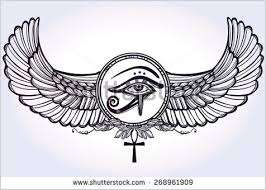
From a different perspective.
Continued: "Poets learned the complex metres, rhythms and stanza forms and thus formalised some facets of the mystery teachings, as we can still perceive in Taliesin's poetry - himself the arch-poet, initiate and Son of the Cauldron....The old Welsh word for 'story' {cyfarwyddyd} means 'guidance', 'direction', 'instruction', 'knowledge', 'skill', 'prescription'. Its stem {arwydd} means 'sign', 'symbol', 'manifestation' - and derives from a root meaning ''to see''...." [Page 15 of the book by C. Mathews. See below].
Refresher..."Got to see it, rather than just read it..." John Humphrys talking to D. Tennant and Greg Doran in relation to the plays by W. Shakespeare. [400th anniversary. Radio 4. 23/04/16].
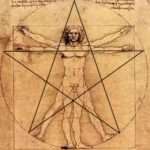
'five'.
Practical example: ''Say what you see'' {'Catchphrase' / ITV}.
And/or: Poet = Harp = Lyre constellation. Gives the reader clues as to the 'Star' that the Magi 'followed' that defined 'a' 'beginning' of something.
Twinkle, twinkle, little star....?
Twinkling, the common term for stellar “scintillation,” refers to tiny, rapid changes in a star’s apparent position, brightness, and color, especially when the star is low in the sky on cold winter nights. In the fourth century b.c., Aristotle tried to explain the spectacle in his treatise De Caelo. He imagined vision as sort of an invisible “tentacle” that reached out and grabbed objects. Information about what it found would then travel back to the brain for interpretation. Aristotle proposed that, because the eye’s tentacle had to stretch an extremely long way to the stars, it would become so weak as to quiver, which we perceive as twinkling.
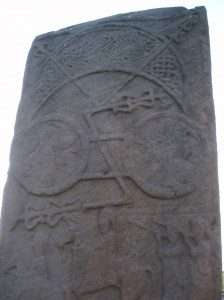
A Pict symbol. Question. Goggle-eyed? A weaving pattern within the crescent of something? Enlarged elsewhere.
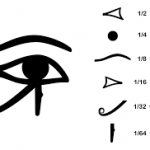
Twingle of the eye.
Something hinted at: "The mystical way of tradition has had to work to survive the battle which has been joined between faith and 'knowledge' since the time of Gnosticism....Two sets of visitants come to the manger in Bethlehem: the shepherds and the kings. The shepherds, impelled by angelic messengers, accept the proclamation of the 'new-born' messiah with uncritical enthusiasm - with faith. The kings, by means of their gnosis, 'follow' a star which is the certainty of their faith until they, too, reach their destination. It is perhaps of note that the shepherds go straight to the manger, while the kings waste time calling upon Herod to suffer unwanted congratulations." [Page 83 'The Western Way'. VOL 2].
And/or: ''If you have pulled this card. you are asked to embody your star consciousness. The star of your being is rising....'' [Card 17 -Sothis- 'The Anubis Oracle'].
''It seems unlikely that anyone in our day would be able to explain the deeper meaning of seventeen, and yet this number was quite important in the ancient Near East....'' [Chapter entitled 'Number of Conquest' from the book 'Mystery of Numbers' / A. Schimmel].
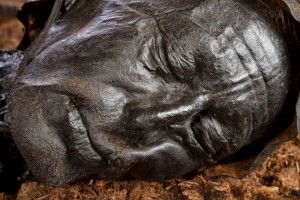
Try ''butter'' to {enlighten?} those first impressions, i.e., many pots {cauldrons?} found in bogs containing same.
Continued: "The richness of the themes within Branwen makes it difficult for the commentator to survey it fully. The reader will have been struck perhaps by the universal elements common to many European folkstories and mythologies, especially in relation to the Greek legends about Achilles family, and to both Norse and Germanic cycles. Although Branwen is the eponymous heroine, the story really turns on the possession of the Cauldron of Rebirth....The cauldron is the prototype of the Grail itself: an 'Otherworldly' vessel whose gifts include variously: rebirth, knowledge, spiritual fulfilment....as well as providing 'physical nourishment'....Death both physical and spiritual, is written between the lines of the quest: those who fail are 'slain'; those who win 'die' to the world and are reborn OR initiated into a different and Otherworldly condition." [Page 48/49 'Mabon and the Mysteries of Britain: An Exploration of the Mabinogion' / C. Mathews].
N.B. A group of Pine Martens = 'A Richness'.
Horn of Plenty in relation to the 'Fruit of ones Labours'? Try ''Homer'' / ''feast'' / ''nectar '' {of the 'gods'} i.e., as one example ''Ambrosia'' - to take something further.
And/or: ''The cauldron of rebirth, into which 'dead' men {women?} could be put, and would revive though they were forever 'speechless' {'Gnosis' link - in the negation sense of the word}.
Hence: The Cauldrons original owners came from a 'lake' {silence?} in Ireland {i.e.,furtherst West}. The woman gave 'birth' every six weeks { six lobed?} to a fully armed 'warrior' {man or woman? recall Athene}, and was a Titan {'giant'} like her Husband." [Page 39, same book].
''Upon the shoulders of Giants''?
Side step: "The Quran has an outer meaning and an inner meaning." [Quote by Muhammad]........"the outer knowledge which is the shell, protects the inner knowledge which is the seed." [Page 22, 39, of the book, 'Secret of Secrets']. Or...
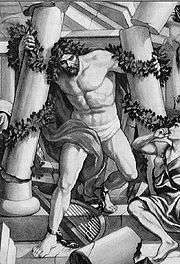 ...."See how god sets forth a parable...'A good word is like a good tree whose root is firmly fixed, and whose branches reach up into the sky'. [14:24].
...."See how god sets forth a parable...'A good word is like a good tree whose root is firmly fixed, and whose branches reach up into the sky'. [14:24].
Question. A vine? Recall Samson's riddle.
Sweet or Bitter?
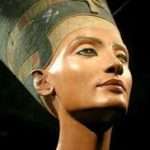
Blood of the vine?
"The blood of the vine is the Grail," answered the sculptor, ''but what do men know of it." ['Journey into the Light']. Try ''vegetative''.
And/or {i.e., something extra}: "Are the owners of estates whose sole care is their personal advantage to be put on the same footing as those who have traditional knowledge such as can make the vines of Khonsu flourish extra-ordinarily as well as the magnificent cattle of Amon {Amun}. Among all sages you will find men who claim to possess these gifts and at the same time to have created such a chef d'oeuvre as a colossal statue or the 'building' of a temple." ['Her-Bak'].
''Khonsu'' - or more importantly - what it implies {represents} - in relation to the words in italics. Anything?
That link to the Hebrew equivalent, ''to establish''. One of the two 'Pillars'. Its representation - with the individual in mind. Its main principle. "God will establish in strength those who believe , with the Word. That stands firm, in this world and in the hereafter......." [Quran 14:27].
"God effaces what he pleases and establishes what he pleases, and his is the essence of the book." [Quran 13:39]. Put ''essence'' in the search box.
"These observations lead naturally to a consideration of the subject of man in Ibn al-Arabi's thought, since, within the context of the divine-cosmic polarity, man, and especially 'Perfect Man,' [i.e.,authors definition; in relation to understanding a potential. The full ['whole'] one, relative to each individual. This readers input], constitutes the all important link or medium between the two poles of Reality; the isthmus [barzakh] as al-Arabi calls him. Having called man the link, however, it is necessary to point out that any link is important only so long as it serves to effect 'communications' and relationships between things that are real in themselves. The link itself having no meaning per se, except by reference to the things it links." [Introduction, 'The Bezels of Wisdom'. Mentioned elsewhere].
Think on it relative to such works as 'A Test of Time'.

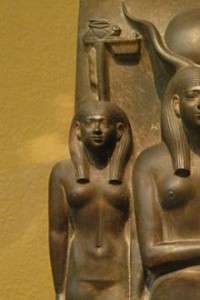
Hare - top left corner.
A working example: ''Scotland loves to celebrate Hogmanay (New Year's Eve), and along with belting out the lyrics to “Auld Lang Syne,” many Scots participate in a tradition called first footing. The first person to cross the threshold of a house on January 1 is called the first footer. Stemming back to the time of the invading Vikings in the 8th and 9th century, it is believed that the first person to enter a house, the “first foot”, can bring luck – or misfortune – for the year ahead. In Scottish tradition good luck comes in the form of a tall, dark-haired man being the first footer....A tall fair haired person was deemed unlucky. A throwback to the Viking days.... In many areas, the first-foot should bring with him symbolic gifts such as coal, bread, salt, silver, coins, whisky, {or black buns?}. Food and drink will be given to the first-foot and any other guests..... Open the door for the First Foot. Have your First Foot step over the threshold saying: ”A Happy New Year and Good Tidings to you and yours”.
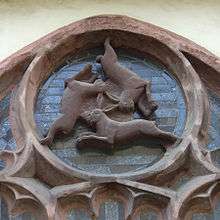
A beginning or end? Sight or sound as a means...?
''On the 1st March 2021 the Mountain Hare became a protected species in Scotland.''
Boudica to enlarge.
Goat's?
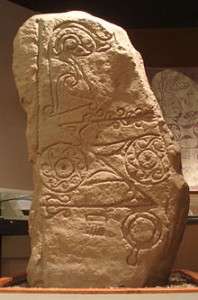
Pict symbols. 'Mirror' bottom right {S/E?}. 'Flowers' for eyes? within the well known Pict ''Z'' inscription: A flash of lightening? {and/or ''inspiration''?}. Others enlarged elsewhere.
"That which sees through the 'eye', but whom the eye sees not...." [Hindu equivalent]. Find it, compare it, understand it. As with.................
"The eye with which i see 'god', and the eye with which 'god' sees me is the same eye." [Meister Eckhart]. Put ''bridge'' in the usual box.
 The pineal gland (also known as the pineal body[1] or epiphysis cerebri) is a small endocrine gland in the brain of most vertebrates. It produces melatonin, a serotonin-derived hormone, which modulates sleep patterns following the diurnal cycles.[2] The shape of the gland resembles a pine nut, which gives it its name.[3] The pineal gland is located in the epithalamus, near the center of the brain, between the two hemispheres, tucked in a groove where the two halves of the thalamus join.[4][5] It is one of the neuroendocrine secretory circumventricular organs in which capillaries are mostly permeable to solutes in the blood.[6]
The pineal gland (also known as the pineal body[1] or epiphysis cerebri) is a small endocrine gland in the brain of most vertebrates. It produces melatonin, a serotonin-derived hormone, which modulates sleep patterns following the diurnal cycles.[2] The shape of the gland resembles a pine nut, which gives it its name.[3] The pineal gland is located in the epithalamus, near the center of the brain, between the two hemispheres, tucked in a groove where the two halves of the thalamus join.[4][5] It is one of the neuroendocrine secretory circumventricular organs in which capillaries are mostly permeable to solutes in the blood.[6]
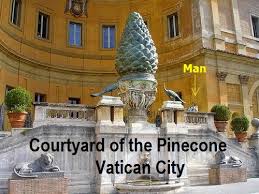 The pineal gland is present in almost all vertebrates, but is absent in protochordates in which there is a simple pineal homologue. The hagfish, archaic vertebrates, lack a pineal gland.[7] In some species of amphibians and reptiles, the gland is linked to a light-sensing organ, variously called the parietal eye, the pineal eye or the third eye.[8] Reconstruction of the biological evolution pattern suggests that the pineal gland was originally a kind of atrophied photoreceptor that developed into a neuroendocrine organ.
The pineal gland is present in almost all vertebrates, but is absent in protochordates in which there is a simple pineal homologue. The hagfish, archaic vertebrates, lack a pineal gland.[7] In some species of amphibians and reptiles, the gland is linked to a light-sensing organ, variously called the parietal eye, the pineal eye or the third eye.[8] Reconstruction of the biological evolution pattern suggests that the pineal gland was originally a kind of atrophied photoreceptor that developed into a neuroendocrine organ.
Ancient Greeks were the first to notice the pineal gland and believed it to be a valve, a guardian for the flow of pneuma.
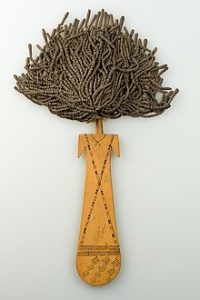
'Place of Rowing'?
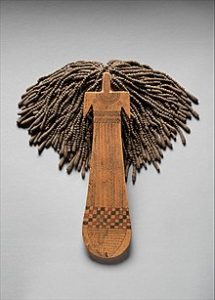
Paddle dolls are made of thin pieces of wood which depict the torso of a woman with truncated arms and no legs. Thick "hair" is represented by small beads strung along string, which are often made from black mud.
Refresher: Apply the above to define {in the broader base} - sense of the 'word' {foundation?} - the following: "A special case of the geometric reconciliation of opposites involves the Golden Ratio, or ''the section'' as the Greeks referred to it, which grows from the diagonal of the half-square {'lozenge'?}. Quite a number of vases display its proportions because it offers artisans a particular powerful tool for guiding the viewers attention around a spiral {'alabaster'?} - of squares towards its ''eye'' - the compositions ''center of gravity'' where all diagonals cross. The architect, teacher, and writer Jay Hambidge rediscovered this geometry and called it 'dynamic symmetry'...." [Page 20 'Alexandria: The Journal of the Western Cosmological Tradition' / D. Fideler].
Try ''vase'' and/or ''static/dynamic''.
"It is precisely the 'Perfect Man' who combines within himself, in harmony, 'Heaven' and 'Earth' within the context of the realization of the Oneness of Being, who is at once the eye by which the divine subject sees Himself and the perfectly polished mirror that reflects the divine light." [Same chapter, same book].
Medieval exegetes subsequently discovered many important features in the number SEVEN. As the number of perfection, it is the day of God's rest but also points to the passing of time,
since eternity begins only with Christ's resurrection on the eighth day. {'Mystery of Numbers'}
Finally the symbolism and its intent relative in such stories that include 'maidens' in relation to 'knights' and 'swans', as speculated in such books as 'The Cygnus Mystery', [chapter eleven and eighteen].
"According to further information given in the 'Confessio' it can be computed that as he was born in 1378, and lived for 106 years, that is until 1484; his 'tomb' was discovered in 1604, the year when two new stars appeared in the sky in the constellations of Cygnus - the Swan - and Serpentario - the Serpent." [Extract from the book by G. Knight].
'120' to enlarge.

''Our constellation is supposed to be represented by the bird figured on an Euphratean uranographic stone of about 1200BC and known on the tablet as the Eagle, The 'Living Eye'...." [Page 56 under 'Aquila' from the book 'Star Names and their Lore']. N.B. Aquila - part of the ''Summer Triangle''. Put that ''triangle'' together with the ''Winter'' one. What symbol do you 'see'? CLUE: Top-down/Bottom-up?
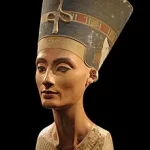
Spirit or Soul? Symbolic or Real?
"Understandably, the 'Divine' does not appear in man in all the infinity of being; and we speak of only an aspect of god, or of a Divine spark, as constituting the essence of the inner life of man. However veiled and masked, in its broader context the human race may also be considered the manifestation of 'god' in the world. And each and every person is an intrinsic part of this divine source of life, the point of essence. Which essential point and source is known at a certain level as the Shekhinah, and at another level as 'Knesset Israel', the divine vitalizing power, giving life to the world. 'Knesset Israel' is the pool in which all the souls in the world are contained as a single essence, although it does not reveal itself as such, for in the world only a glimmer of the 'sparks' of 'holiness' in certain people is revealed. Every soul is thus a fragment of the 'divine' light. As a spark, a part containing something of the whole, the souls essential wholeness cannot be achieved except through effort, through work with the greater whole." [Chapter three [The soul of man] from the book 'The Thirteen Petalled Rose' by A. Steinsaltz. [Emphasis this readers].
Remember the above is only a 'Hebrew' perspective on a 'word' that all cultures in one way or another use directly or otherwise. Indicative of something. That 'something' that according to this subject is relevant to all individuals, regardless of place, time or culture. But only... once made aware of. Can you by now, 'see' what that word is, and what ''it'' relates to?
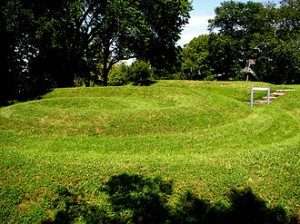
'Snake/Dragon head' on land. 'Tail' in the sea. And/or: Serpens (Ancient Greek: Ὄφις, romanized: Óphis, lit. 'the Serpent') is a constellation in the northern celestial hemisphere. One of the 48 constellations listed by the 2nd-century astronomer Ptolemy, it remains one of the 88 modern constellations designated by the International Astronomical Union. It is unique among the modern constellations in being split into two non-contiguous parts, Serpens Caput (Serpent Head) to the west and Serpens Cauda (Serpent Tail) to the east. Between these two halves lies the constellation of Ophiuchus, the "Serpent-Bearer". In figurative representations, the body of the serpent is represented as passing behind Ophiuchus between Mu Serpentis in Serpens Caput and Nu Serpentis in Serpens Cauda.
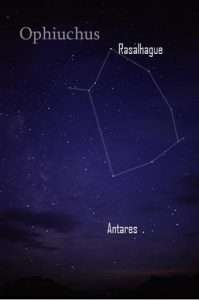
Square and triangle. 'Three and four'? And/or: In Greek mythology, Serpens represents a snake held by the healer Asclepius. Represented in the sky by the constellation Ophiuchus, Asclepius once killed a snake, but the animal was subsequently resurrected after a second snake placed a revival herb on it before its death. As snakes shed their skin every year, they were known as the symbol of rebirth in ancient Greek society, and legend says Asclepius would revive dead humans using the same technique he witnessed. Although this is likely the logic for Serpens' presence with Ophiuchus, the true reason is still not fully known. Sometimes, Serpens was depicted as coiling around Ophiuchus, but the majority of atlases showed Serpens passing either behind Ophiuchus' body or between his legs.[1]
In some ancient atlases, the constellations Serpens and Ophiuchus were depicted as two separate constellations, although more often they were shown as a single constellation.
Side note: The author M. Hedsel uses 'we' and 'us' throughout in his book 'The Zelator'. Coincidence or...?
And/or: ''One stylistic feature that makes the Quran particular effective is that God speaks directly to people {e.g. 56: 57-73} and to the Prophet, often using 'We', the first person plural of majesty, to represent Himself. It involves the readers/listeners by questioning, directing, and urging them, alternating this with information {e.g. 56: 47-74}.'' [Introduction {xx} 'The Qur'an / M. A. S. Abdel Haleem].
Higher/Lower?

Milky white? Milky Way?
Side note: From very ancient times the goddess has been associated with the number three, and here we have this principle concentrated in power, by the three sets of sisters three: the Naiads, the Graiae and the Gorgons. It is to each of these in turn that Perseus goes for assistance in his hero’s quest....The serpents are universal symbols for the creative powers of the feminine. In esoteric psychology and physiology they represent the kundalini—the serpent power. This is not only a phenomenon of the human organism but has its planetary correspondence in the inner forces of the planet. In one aspect it is the reality behind the force fields of ancient, sites and trackways, and in a more raw elemental way in the mighty forces of wind, sea, volcano and earthquake. It also represents the generative powers of life. ‘The force that through the green fuse drives the flower’ in the words of Dylan Thomas. It is essentially a feminine force, and thus is not easily comprehended or come to terms with by the masculine dominated intellect.
'The Rose Cross and the Goddess: The Quest for the Eternal Feminine Principle' / G. Knight.
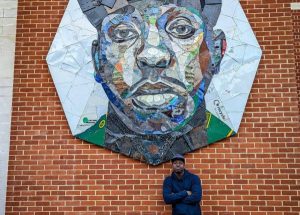
Practical example: ''I'M just glad he got his flowers while he was alive.'' {BBC NEWS/21.2.22}.

'Spirit' or 'Soul'? Male or female feet - or does it matter?
"Shakespeare's great philosophical thrust and the great impulse behind the Rosicrucians were to show that the invisible and spiritual is greater than the visible. [Hint, hint, see anything?]. To put it in Rosicrucian terms, Shakespeare gave shape, form and color to 'gods' great world-weaving 'thoughts', so that the human imagination could grasp them." [Chapter 37, 'The Sacred History']. Can you see any keys yet? Try ''Nephew''.
"Water takes on the color of the cup." [Quote by Junayd].
''Vase'' ??
 "Let no man think lightly of good., saying in his heart, 'It will not come neigh me'. By the falling of waterdrops a pot is filled; the wise man becomes full of good, even if gathered little by little." Lord Buddha.
"Let no man think lightly of good., saying in his heart, 'It will not come neigh me'. By the falling of waterdrops a pot is filled; the wise man becomes full of good, even if gathered little by little." Lord Buddha.
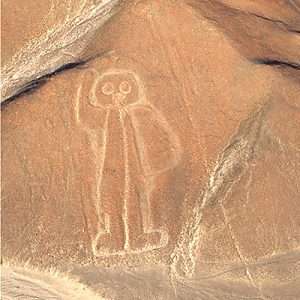
And/or: 'Sack' is an antiquated wine term referring to white fortified wine imported from mainland Spain or the Canary Islands.' Berbers to enlarge.
Something extra: ''The important point to remember is that 'Saturn/s' colour is a mixture of the three primary colours." {Page 65 of the book by P. F. Case. Vol 1].
While recalling that the symbol for 'Mercury' contains all 'three' aspects of the ''Self'' {i.e., subconscious = 'crescent'. Self consciousness = 'circle'. Cross = four elements and/or physical world etc }. Enlarged elsewhere.
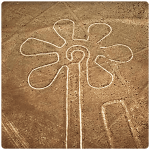
Dried flowers found between the brow of the golden child - Tutankhamun.
Refresher: "Do not understand that the placing of the crescent symbol at the top {i.e., 'cup' shaped} means that the subconsciousness has been made the superior term. What is meant is that the subconscious has been purified and RAISED so that it becomes the grail to receive the wine of life - the inspiration of spiritual wisdom....Rightly understood, the Mercury sign is one of the most enlightening symbols...." [Pages 21/41 of the book by P. F. Case].
REMEMBER all as a means...?
And/or: "More than one researcher has noted the similarity between the marks found on these 'tjuringas' {Aborigine} and those found at megalith sites: in particular the curious cup and ring markings discovered at a large number of sacred places but never satisfactory explained." [Page 58 'The Western Way' / C+J Matthews].
Try ''Saturn'' and/or ''Imhotep'' as a working example.

Aberfoyle supposedly originates from the Brittonic Celtic, aber poll or aber phuill (Scottish Gaelic, Obar Phuill), meaning (place at the) mouth of the Phuill Burn (the Pow Burn enters the River Forth at Aberfoyle). Historically, alternative spellings such as Abirfull, Aberfule, Aberfoill and Aberfoil have been recorded before the current spelling became accepted by the 20th century. The river-name is from either Gaelic poll or Brittonic pol, both of which mean 'pool, sluggish water'

Siberia means ''sleeping land.''
Apply all the above to {define?} the following: "The cup markings, which appear to be universal in these Scandinavian sites and which are found occasionally on the walls and even roofs of stone built graves have long been a problem. The idea that they were libation cups, for offering food to the gods, cannot always be accepted on account of their position. Many, of course, in Scotland were used for the offering of milk to the 'Little People', until quite recent times and may be still. However the view is now held widely that many more were intended to represent symbols of a 'goddess' and are to be compared with the 'yoni' and 'lingam' of India...." [Page 87 'GogMagog' / T. Lethbridge].
A more closer to the 'mark' {Key} attempt of gaining an insight into a mindset would be ''foods untouched by fire''. Enlarged elsewhere.
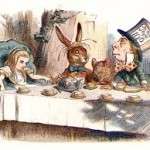 Soul {female} as opposed to Spirit {male}. All as a means....?
Soul {female} as opposed to Spirit {male}. All as a means....?
Side note: The town is situated on the River Forth at the foot of Craigmore (387 m or 1,270 ft high). Since 1885, when the Duke of Montrose constructed a road over the eastern shoulder of Craigmore to join the older road at the entrance of the Trossachs pass, Aberfoyle has become the alternative route to the Trossachs and Loch Katrine; this road, known as the Duke's Road or Duke's Pass, was opened to the public in 1931 when the Forestry Commission acquired the land.
Loch Ard, about 2 miles (3 kilometres) west of Aberfoyle, lies 40 m (130 ft) above the sea. It is 3 mi (5 km) long (including the narrows at the east end) and 1 mi (1.5 km) broad. Towards the west end is Eilean Gorm (the green isle), and near the north-western shore are the falls of Ledard. The loch's northern shores are dominated by the mountain ridge of Beinn an Fhogharaidh (616 m or 2,021 ft). Two miles (three kilometres) northwest of Loch Ard is Loch Chon, at 90 m (300 ft) above the sea, 1+1⁄4 mi (2 km) long and about 1⁄2 mi (800 m) broad. It drains by the Avon Dhu to Loch Ard, which is drained in turn by the Forth.
'IN/OF THE HORIZON'.
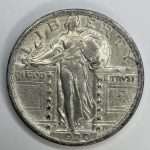
Continued: "The term in Oriental literature for what we call 'etheric body' is Linga Sharira. Thus it is an extract of Linga Sharira that man takes with him from incarnation to incarnation. Buddha says: At birth, the human being brings with him, in his Linga Sharira, everything it contains from his former incarnations; it is inscribed there." [Page 64 'The Gospel of St. Luke: Lecture Three' / R. Steiner].
Sculptured or carved?
'Smith + Jones'.
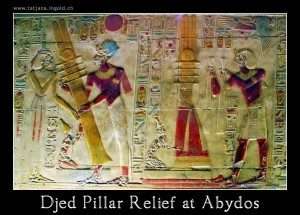
The KA of Osiris?
Linga sharira, or etheric double, designates, in theosophy, the 2nd principle in man's septenary constitution, which is slightly more ethereal than the physical body.
'Doppelganger'.
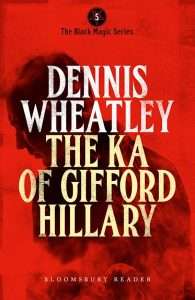
Linga sharira is the subtle body within Hinduism’s three-body philosophy. From Sanskrit, linga translates to “reason,” “characteristic” or “conclusion,” and sharira means “body.” This body is considered to contain all vital functions and keeps the physical (gross) body alive. It is believed to exist after an individual dies and operate as a medium for reincarnation.
Within a spiritual practice, yogis seek to balance the three bodies through pranayama, meditation and asana.
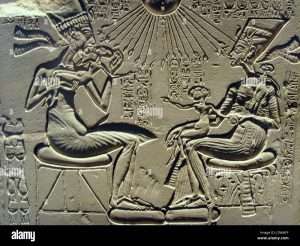
In a different FORM. Triple form?
In Hinduism, an individual is considered composed of three bodies: the karana sharira (causal body), linga sharira (subtle body) and karya sharira (gross body). These three bodies are connected, and a person functions best when they are in harmony with one another.
The linga sharira is made up of the pranamaya kosha (vital life breath), manomaya kosha (mind) and the vijnanamaya kosha (intellect). It includes the five organs of sense, the organs of action (genitals, anus, hands, legs and speech), the five vital breaths, as well as wisdom and intellect.
The three-body concept is an important core belief in Indian philosophy and in yoga. If these three bodies become unbalanced, it can cause negative effects such as disease and/or confusion.
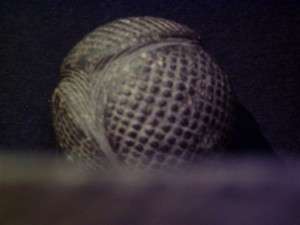
Stone 'implement' - neolithic origin - its use speculated on within the program by N. Oliver {mentioned elsewhere}. Question. When impressed on a surface {rolled?} what impression would it make? Try 'rolled/UNrolled' for a further head-sratch. N.B. Similar round balls found especially N/E Scotland - as speculated upon in 'Secrets of Stonehenge' / PBS America. The understanding of which, determined more by ''the four corners'' i.e., N/E in relation to S/W? Embossed / Debossed? Bulford limestone balls to enlarge.
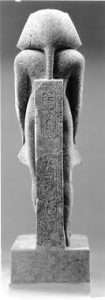
'Elevated' or just ''upright''?
Exercise..."Another peculiar mystery at Gobekli-tepe is the presence on the exposed bedrock to the S/W of the main enclosures of the large cup like holes {up to six inches in width and depth}. There are dozens of them everywhere. Similar cup marks are to be seen on top of the standing pillars, while clusters of them are found also at other Pre-Pottery Neolithic sites across the region. On asking Klaus Schmidt what he thought these cup marks represented in September 2012, he shrugged his shoulders and said they are found everywhere, often in the company of carved ring marks {'circle'?} like those in Britain. Yet clearly, they did once have a function, and the most obvious solution is that they were receptacles for something, either liquid - blood, beer, milk, or water perhaps - or, more likely, some type of food such as meat. Because they almost always seem to be carved in elevated positions, it appears possible that whatever they contained were offerings to carrion birds such as vultures, crows, or ravens, which might well have played some kind of symbolic function in the rituals taking place inside the sanctuaries {a large number of bones belonging to both the crow and raven have been found within the fill at Gobekli-tepe}. Scavenger birds such as vultures play an important role in the Neolithic cult of the dead, and so gaining their favor in a divinatory manner might well have been important to the success of a ritual...Interestingly enough, divination has been proposed as an explanation for the presence of similar cup marks found on exposed rock surfaces in the area of Mount Ararat in eastern Anatolia. Armenian prehistorians speculate that although the true purpose of the cup marks has now been lost, they were probably ''used by oracles during fortune telling,'' a very {credible?} explanation indeed, which sits well with their possible function at Gobekli-tepe." {From the book 'Gobekli Tepe' by A. Collins. Emphasis, this readers}. Try ''cup'' and/or ''crow/raven'' to see if you agree or disagree.
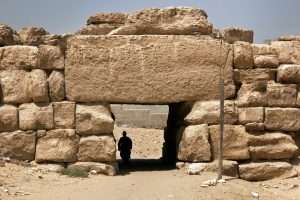
An unbelievable feat of ancient architecture, The Wall of the Crow is 656 feet long, 32 feet high and 32 feet at the base. Standing near the Sphinx, this ancient wall was constructed in the 4th Dynasty of Egypt and the true purpose still remains unknown.

And/or: "The tomb of the royal sculptor Ipuy and his wife Duammeres, who are shown dressed in fine clothes, accepting decorative bouquets from their son and daughter. A playful kitten sits on Ipuy’s lap with its front paw raised, batting at Ipuy’s sleeve, while an adult cat sits under the chair of Duammeres. This cat is unusual in being depicted looking straight at the viewer {in profile/face on}. It also has a silver earring and a striped collar around its neck, suggesting it is being pampered {'beloved'?}. The motif of ‘the cat under the chair’ was common in Egyptian art, not only filling the empty space between the chair legs, but also confirming the cat’s importance to the mistress of the house during this period. Similar scenes are found in the tombs of May (TT130), Raya (TT159 – see p.57), Penbuy and Kasa (TT10), and Neferrenpet and Kenro (TT178). 'GAP' to enlarge.
A working example: The First Key is that which opens the dark prisons in which the Sulphur is shut up: this is it which knows how to extract the seed out of the body, and which forms the Stone of the philosophers by the conjunction of the spirit with the body - of sulphur with mercury. Hermes has manifestly demonstrated the operation of this First Key by these words: In the caverns of the metals there is hidden the Stone, which is venerable, bright in colour, a mind sublime, and an open sea. This Stone has a bright glittering: it contains a Spirit of a sublime original; it is the Sea of the Wise, in which they angle for their mysterious Fish. But the operations of the three works have a great deal of analogy one to another, and the philosophers do designedly speak in equivocal terms, to the end that those who have not the lynx's eyes may pursue wrong, and be lost in this labyrinth, from whence it is very hard to get out. In effect, when one imagines that they speak of one work they often treat of another.
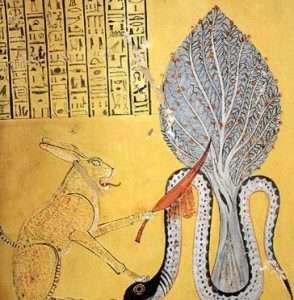
'Domesticated' to enlarge. Question. "Tamed" spirit or soul or both? Ancient Lynx constellation?
Side note: "Bastet’s popularity increased dramatically during the 1st millennium BC, reaching a peak during the Ptolemaic era (332-30 BC). During this period, Bastet was the second most popular element in personal names (with Osiris being the most popular). Examples include Bastetirdis and Pedibast meaning ‘s/he whom Bastet gave’; Senobastis meaning the ‘son of the daughter of Bastet’; Ankh-Bastet meaning ‘may Bastet live’; and Nakhtebasterau meaning ‘Bastet is powerful against them’. The reason for the transition from lion-headed to cat-headed goddess is not fully understood, although it is likely that people felt a greater affinity with cats and cat symbolism than with the more dangerous aspects of lionesses."
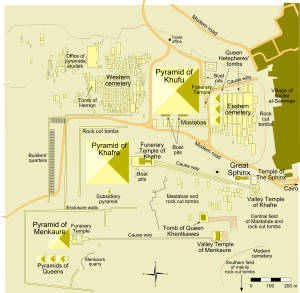
Which represents white and black?
Continued: Take heed therefore, not to be deceived here; for it is a truth, that in each work the Wise Artist ought to dissolve the body with the spirit; he must cut off the Raven's head, whiten the Black and vivify the White; yet it is properly in the First operation that the Wise Artist {'sculptor'?} cuts off the head of the Black Dragon and of the Raven. Hence, Hermes says. What is born of the Crow is the beginning of this Art. Consider that it is by separation of the black, foul, and stinking fume of the Blackest Black that our astral, white, and resplendent Stone is formed, which contains in its veins the blood of the Pelican. It is at this First Purification of the Stone, and at this shining whiteness, that the work of the First Key is ended.

He is the king who introduced the royal title Sa-Rê (meaning “Son of Ra”) and the first to connect his cartouche name with the sun god Ra.
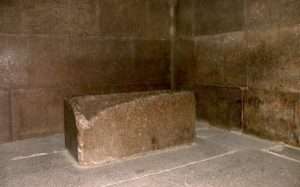
Beginning or end?
There is yet another sense in which this idea may be interpreted. As spirit is always in all systems of symbolism considered to be white in colour, pure in nature, and ubiquitous in its operation, so its opposite, the body and the personality, is symbolized by the colour black. By the decapitation of the Raven, a black bird, enjoined by Eudoxus, is meant a separation in understanding (thus the name of Alchemy, the Spagyric or separative art) of the head - the higher spiritual and intellectual principles - from the lower part of the body, the world of conflicting desires and instincts. In Splendor Solis, by Solomon Trismosin, there is a fine elaborate drawing in which is shown a raven with a black body but a white head, emphasizing this idea. It is the mystical death of the body. This can again be interpreted in the light of the quotation on a former page. That is to say, that the ancients considered two deaths to be possible. The one is the natural death which occurs to all men at the close of their particular span of life. This is involuntary and inevitable. But there is another death which the sages and saints cultivate, inasmuch as it culminates in life and in fullness of spiritual perception. This is the death induced." ['The Philosophers Stone' / I. Regardie].

The Venus of Hohle Fels (also known as the Venus of Schelklingen; in German variously Venus vom Hohlen Fels, vom Hohle Fels; Venus von Schelklingen) is an Upper Paleolithic Venus figurine made of mammoth ivory that was unearthed in 2008 in Hohle Fels, a cave near Schelklingen, Germany, part of the Caves and Ice Age Art in the Swabian Jura UNESCO World Heritage Site. It is dated to between 42,000 and 40,000 years ago,[1][2] belonging to the early Aurignacian, at the very beginning of the Upper Paleolithic, which is associated with the earliest presence of Cro-Magnons in Europe. N.B. To be used as something to be 'hung' {as around the neck}. 'Femur' to enlarge.
Those similar ''cup marks'' speculated on in such programs as 'Ancient Aliens' found not far from the Nazca figures, in a S/N alignment - on top of a mountain ridge. '5200' in total.
N.B. Ararat = Dormant VOLCANO.
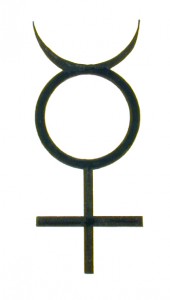
'Cup' for a hat?
"Only Peru and Tibet contain large sections of continuous high plateau. Travelers have often noted that the Andean and Tibetan cultures resemble each other in many ways. Geologically, they are the places on Earth that are the closest contact to the sky. The chain of the Andes, the Sierra Madres, and the Rockies run roughly N/W - S/E through the Americas. In fact, we can track the high points northward from the Peruvian Andes through central America, Mexico, the western United States, Alaska, along the North Pole, and down through central Asia, the Himalayas, western Australia, and underneath Antarctica to emerge at the Southern tip of Tierra del Fuego - the southern Andes. Without a topographical globe in hand its hard to picture this, but no one can deny that a circular chain of mountains runs crosswise around the globe, at roughly 60 degrees angle to the equator. If we imagine this mega chain to be the terrestrial counterpart to the Milky Way..." ['Galactic Alignment'].
All the above used in the past/present and will continue to be used in the future as a means...?
Side note: ''The isthmus of Tehuantepec represents the shortest distance between the Pacific Ocean and the Gulf of Mexico.'' ['The Chase'].
''The city is known for its women and their traditional dress, which was adopted by Frida Kahlo. Tehuantepec has a reputation for being a matriarchal society. Women dominate the local markets...
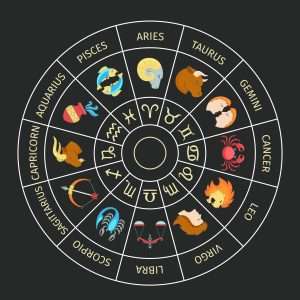
The zodiac is a belt-shaped region of the sky that extends approximately 8° {'eight'} north and south (as measured in celestial latitude) of the ecliptic, the apparent path of the Sun across the celestial sphere over the course of the year....The English word zodiac derives from zōdiacus,[5] the Latinized form of the Ancient Greek zōdiakòs kýklos (ζῳδιακός κύκλος),[6] meaning "cycle or circle of little animals". Zōdion (ζῴδιον) is the diminutive of zōon (ζῷον, "animal").[7] The name reflects the prominence of animals (and mythological hybrids) among the twelve signs.

Any lynx? Spots and stripes?
The full name of the city and municipality is Santo Domingo Tehuantepec. "Tehuantepec" comes from Nahuatl and has been generally regarded to mean "wild animal (tecuani) hill (tepec)". The name was given to the area by the Aztecs, purportedly because of the ferocity of the native Zapotec warriors they encountered there. The Zapotec name for the area is Guie-Ngola, or Large Hill/Rock, with the city name being Guisi’si Gui.[2][9] Santo Domingo was added by Bartolomé de las Casas as he passed by in honor of the Dominican church was had already been established here. From pre Hispanic times, the settlement has been represented by an Aztec glyph, the earliest example of which comes from the Guevea Codex, also known as the Zapotec Codex. This glyph represents a hill with a jaguar, an ancient totem animal throughout MesoAmerica. Thus, the "wild animal" component of the hill's name may actually be related to a recognition of an ancient religious meeting site associated with the symbol of the jaguar. The Nahuatl word "tehuan" actually means "among the people" or "a gathering", i.e. a meeting place.''
The hill is divided into sixtysix parts and each part has a circle.[9]
''Horizon hill'' to enlarge in its universal aspect. Macro OVER the Micro.
And/or: ''The Chinese characters Yin and Yang literally mean dark and sunny side of a hill.'' ['Chase the Case'].
Gobekli-tepe?
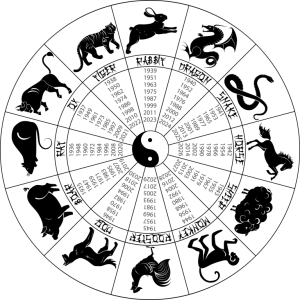
The Lunar Year of the Rat begins the Chinese zodiacal calendar.
And/or: ''Yang refers to the "south side of a hill" in Hengyang 衡陽, which is south of Mount Heng 衡山 in Hunan province, and to the "north bank of a river" in Luoyang 洛陽, which is located north of the Luo River 洛河 in Henan.
Similarly, yin refers to "north side of a hill" in Huayin 華陰, which is north of Mount Hua 華山 in Shaanxi province BUT SOUTH bank of a river.''
Recall the North/South Chalk Downs in S/E England.
As is: "Its the first public sculpture in Britain - a large horse on an Oxfordshire hillside 3000 years ago. The hill - a border crossing - it was hotly contested {by at least three tribes}. Hill figures found no where else in Europe. This one marks a key moment ..." Enlarged elsewhere.
As well as: ''Only at the equator can the entire celestial sphere be observed..." ['Homer's Secret Iliad'].
The above author {J. Jenkins} speculates only on a few of those universal keys in relation to the above - enlarged elsewhere - but because of his excellent research those that can indeed 'see' learn more.
Question. Higher of the lower {landscape equivalent?}...


In the form of 'two triangles'. Above/below. Fire/water. That same shape that can be seen on the 'hind quarters' {left} of the 'headless' Sphinx on the east side at Gebel el Silsila. Question. What god/goddess represents ''an hour''?
There are many legends and myths associated with the Chinese zodiac throughout history, and different versions and stories are prevalent in different locations. So, why were twelve animals included in the Chinese zodiac calendar, and how did the Chinese zodiac order come about? Let’s revisit the most popular version of the story today. Why was there a race? Long ago, The Jade Emperor of China thought that there should be a means to measure time. On his birthday, he announced that there will be a swimming race. The first twelve animals to cross the fast-flowing river would be declared the champions, and each would be assigned a year of the zodiac.

Birds 'foot' for a 'navel'? lion cloth? Under ''ones belt''? Try ''Running the fields'' or ''Sed Jubilee'' to enlarge. And/or: The alternative name - for the Lynx constellation {now in disuse} was the Tiger - and with others it was the Little Fox with the Goose." [Page 280]. All as a means...? 'Spots and stripes'?
Side note: "There are only a few examples of representations of cats dating before the Middle Kingdom, including a wildcat depicted in a wildlife scene from the Old Kingdom temple of Nyuserra at Abu Gurob (which is now destroyed) and the image of what appears to be a cat and a mongoose in the Giza tomb of Meryranefer (Qar) from the reign of Pepy I.

WITH YOUR TAIL UP definition: feeling very happy or confident about your chances of success. 'Joy'?
The first physical evidence for potentially domesticated cats in Egypt is found in a tomb at Mostagedda, in Upper Egypt, dating to the Badarian period (c.4400-4000 BC), while at Predynastic Abydos (c.5300-3000 BC) the skeletons of 17 small domestic cats were found, together with a row of small milk pots for feeding them. The oldest images of cats in ancient Egypt appear as hieroglyphs at Lisht. A block relief dating to the later Old Kingdom (found within the Middle Kingdom pyramid complex of Amenemhat I) names a city called Miuu, written as three seated cats that reads ‘Lord of Cats’ Town’. However, it is not known if there was actually a ‘town of cats’, or if the cat signs are there to spell out the name of the location phonetically.
Cats are more commonly depicted from the Middle Kingdom onwards. A small cat-like animal with a curled tail can be seen sitting under a chair in a fragment of a stela from Coptos dating to the Eleventh Dynasty (c.2125-1650 BC). Textual evidence from the same period suggests that the cat was a particular favourite of Mentuhotep II, who kept cats as pets....The jungle cat (Felis chaus) was commonly found in the marshes of ancient Egypt." ['Ancient Egypt' - Sep-Oct - 2024].
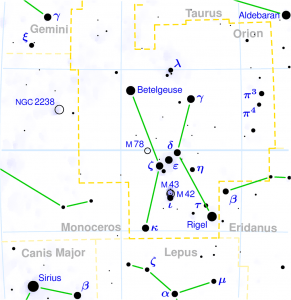
Fire AND water.

And/or: "On walls from the Tomb of Nebamun, now housed at the British Museum, one painting features a cat accompanying Nebamun while he is out fishing and fowling. The cat has caught a bird in its mouth and grasps two other birds in its claws. One of the eyes of the cat is embellished with gold leaf gilding, which, according to the British Museum, is “the only known example of gilding on wall paintings in Theban tomb chapels.” Question. 'Seeing' night and day?
Continued: Shortly later, the tired tiger battled his way back to the riverbank to finish third. Swimming against strong currents across the river had been a huge challenge for him. As a result of his efforts, the emperor named the third year after him. Meanwhile, the rabbit, who hadn’t swum over at all, was the next to arrive. He’d jumped across some stepping stones before discovering a floating log that transported him to land. As a result, the fourth year was named after him by the Emperor. The dragon helped the other animals A benevolent dragon then flew down to grab fifth place. Despite his ability to fly, he did not win the race since he had to assist the other animals in crossing. The emperor was moved by his kindness and named the fifth year of the zodiac after him. The snake used the horse to get 6th place. The sound of the horse’s hooves was the next thing the Jade Emperor heard. A clever snake suddenly wriggled out from behind one of the horse’s hooves just as he thought the horse would be the next animal to come. The horse was so taken aback that he leaped backward, allowing the snake to claim sixth place in the race. The unlucky horse had to settle for seventh place.
How teamwork made the dream work for the goat, monkey, and rooster
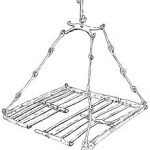 Soon later, a raft came, carrying the goat, monkey, and rooster. They told the Emperor how they had shared the raft that the rooster had discovered. The goat and monkey had pulled the raft to the shore after clearing weeds. The monarch was overjoyed that the animals had collaborated. He then declared that the goat would be the eighth zodiac animal, the monkey would be the ninth, and the rooster would be the tenth.
Soon later, a raft came, carrying the goat, monkey, and rooster. They told the Emperor how they had shared the raft that the rooster had discovered. The goat and monkey had pulled the raft to the shore after clearing weeds. The monarch was overjoyed that the animals had collaborated. He then declared that the goat would be the eighth zodiac animal, the monkey would be the ninth, and the rooster would be the tenth.
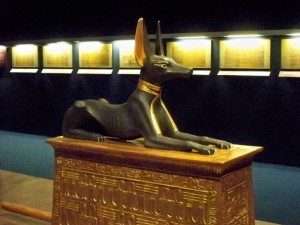
A dog-ear refers to a corner of a page that has been folded over, resembling a dog’s ear. People often do this to mark a specific place in a book, either intentionally or accidentally due to careless use....Dogs communicate their emotions through various ear positions....Fully upright ears indicate alertness and attentiveness to the surroundings3.
The dog and pig got distracted along the way. The dog was the next animal to be finished. The Jade Emperor was perplexed as to why the dog was so late given that he was a skilled swimmer. The dog stated that he wanted to take a bath because of the clear water. The Emperor shrugged and named the eleventh year after the dog. There was just one spot remaining in the zodiac, and the Emperor wondered when the last winner would arrive. Finally, he heard the boar grunt. The boar admitted that he was late because he had eaten and slept while on his journey. Despite this, the Emperor congratulated the boar and named the last year of the zodiac after him. The cat did not make it: The cat, who had been thrown into the water by the rat, climbed out, but it was too late to have a year named after him. He was furious with the rat, and cats have never been pals with rats since. Following the race, the Chinese Zodiac began a cycle of years named after the aforementioned 12 animals."

"Before us lies the twentyfifth Path of aspiration that leads to the goal of Tiphareth, whose virtue is Devotion to the great Work. If you first devotion is to anything else then you had better be content to remain where you are. There is 'honour'able service to be given in the Lesser Mysteries {'golf'?} but the Great work entails being commissioned to the responsibilities of adepthood . That is, to office in the Greater Mysteries, and the perceptions of evolutionary consciousness rather than those of the personality currently in incarnation.

Any quiver?
The road to this condition is the 25th path, sometimes called the Path of the Arrow {apothem?} that is represented by a rainbow, the divine bow of promise, and a winged angel pouring an elixir from one vessel to another {'Altar of Witness'?}. It is another version , a transformation of the dancing figure in the emblem of the World, now lifted to a higher arc. Still holding a balance between two forces, but now mixing them in just proportion, as the name Temperance signifies...We now approach the upper reaches of the 25th path, which is where the Lesser mysteries begin to pass into the Greater. For whoever can enter the Temple of Tiphareth as of right as an adept {albeit a minor one} rather than being invited, or as a temporary guest, will of necessity pass into the consciousness of the 'higher self'. This is to enter into a wider air {'Aquarius'?}, and also to experience a change in attitude..." ['Magical Images and the Magical Imagination' / G. Knight].
Eureka moments do the same.

'Birthing' bricks.
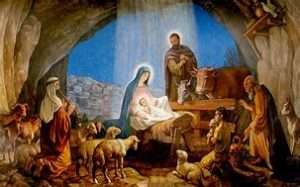
Manger: "to eat" or "to chew."
''In the Christian tradition, the twentyfifth of March - is the date that Mary was told she would give birth to Jesus.''
''Conception'' to enlarge.
Side note: 25TH Dynasty = The Nubian Kings.
''The term 'back-peddling' originated with the activity of cycling.''
And/or: ''In cycling, the commissaire is the equivalent of an umpire or referee.'' ['The Chase'].
'Yellow shirt''?
Side step: ''In golf, the winner of the European Masters wins the red jacket.'' ['The Chase'].
And/or: ''In golf, the Masters Tournament is played over four days.''
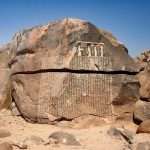
Roof of the world. A flat one?
Among others try ''arrow'' ''rainbow'' ''arc'' ''Tiphareth'' and ''cup/s'' and/or ''vase''...etc., etc -
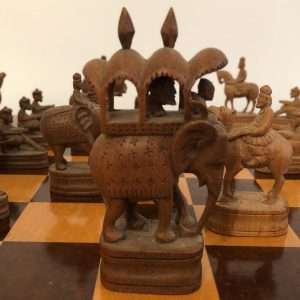
"The Bishop always stays on the same colour in chess." {'The Chase'}
Refresher: ''A supernova became visible on the North American continent in the early morning of July 5th 1054AD {near Aldebaran in Taurus}. It hung diagonally above the crescent moon - just above the eastern horizon... The violent death of a star....It became known as the Crab Nebula {Cancer?}...It is also known as M-1, the first object in Charles Messier's catalogue...On the evening of July 4th it was visible in the eastern sky over China...In the Sung Dynasty it was referred to as 'guest star'....signifying either disaster or triumph...''T'ien-kuan'' was the name the Chinese called the area between the horns of Taurus - it was considered the 'Gate of Heaven'....Two accounts from China and Japan stated it remained visible {at high noon} for twentythree days.'' [Page 91 'The Orion Zone' / G. A. David].
And/or: ''Five is usually connected with human life and the five senses, it is the number of love, and sometimes, of marriage, as in Plato's Laws, where there are 5 guests in the chapter on marriage.'' ['The Mystery of Numbers'].
''Twentyfive is the square of the sacred number five and is therefore used in the center of magic squares. It is also the sum total of 1, 3, 5, 7, and 9 and thus contains all the sacred numbers that can be used in 'magic'.....Medieval Christian exegetes tended to regard 25, the square of 5, as the purr-fection of the five senses....It is frequently used as a round number and serves, as a quarter of a full century, as a fitting number to celebrate silver jubilees.'' [Page 237 'The Mystery of Numbers' / A. Schimmel].
N.B. The 25th Dynasty not mentioned on the Egyptian museum front at Cairo.
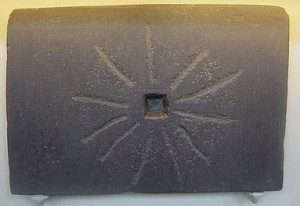
At the outset, the 'twentyfive' Dynasty ruler Shabaka - proclaims himself the agent of renewal at Memphis. "Eleven"?
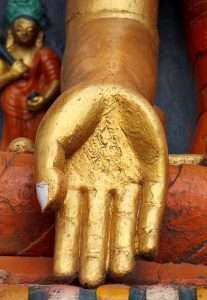 Elizabeth of the Trinity, OCD (French: Élisabeth de la Trinité), born Élisabeth Catez (18 July 1880 – 9 November 1906), was a French Discalced Carmelite, a mystic, and a spiritual writer. She was known for the depth of her spiritual growth as a Carmelite as well as bleak periods in which her religious calling was perceived to be unsure according to those around her; she however was acknowledged for her persistence in pursuing the will of God and in devoting herself to the charism of the Carmelites.[1]
Elizabeth of the Trinity, OCD (French: Élisabeth de la Trinité), born Élisabeth Catez (18 July 1880 – 9 November 1906), was a French Discalced Carmelite, a mystic, and a spiritual writer. She was known for the depth of her spiritual growth as a Carmelite as well as bleak periods in which her religious calling was perceived to be unsure according to those around her; she however was acknowledged for her persistence in pursuing the will of God and in devoting herself to the charism of the Carmelites.[1]
Elizabeth was a gifted pianist and had strong feelings for the Carmelite charism. Of that experience as a professed religious she wrote in a letter: "I can't find words to express my happiness. Here there is no longer anything but God. He is All; He suffices and we live by Him alone" (Letter 91).[1]
Pope John Paul II celebrated her beatification in Paris on 25 November 1984; Pope Francis approved her canonization on 3 March 2016. The date was decided at a gathering of cardinals on 20 June 2016 and she was canonized as a saint on sixteen October 2016.

Intihuatana Stone?
Side note: ''The Marble Arch Mound or Marble Arch Hill was a temporary, 25-metre-high (82 ft) artificial hill located next to Marble Arch in London, England. It had a viewing platform on the summit and an events space inside. The hill opened to the public on 26 July 2021, with a charge, but shortly afterwards it was briefly closed after complaints from the first visitors. It re-opened in August without an entrance fee. It remained open to the public until 9 January 2022, and was subsequently dismantled.''
Side Step: ''No Time to Die is a 2021 spy film and the twentyfifth in the James Bond series produced by Eon Productions, starring Daniel Craig in his fifth and final portrayal of fictional British MI6 agent James Bond.''
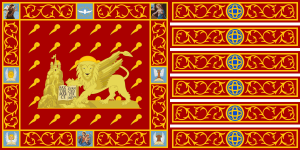
Right angle? 'Cap' of 'gold'?
A working example: ''Venice (/ˈvɛnɪs/ VEH-niss; Italian: Venezia [veˈnɛttsja] (![]() listen); Venetian: Venesia or Venexia[citation needed] [veˈnɛsja]) is a city in northeastern Italy and the capital of the Veneto region. It is built on a group of 118 small islands[3] that are separated by canals and linked by over 400 bridges.[3][4] The islands are in the shallow Venetian Lagoon, an enclosed bay lying between the mouths of the Po and the Piave rivers (more exactly between the Brenta and the Sile). In 2020, around 258,685 people resided in greater Venice or the Comune di Venezia, of whom around 55,000 live in the historical island city of Venice (centro storico) and the rest on the mainland (terraferma / therefore ''lessor/lower''? ). Together with the cities of Padua and Treviso, Venice is included in the Padua-Treviso-Venice Metropolitan Area (PATREVE), which is considered a statistical metropolitan area, with a total population of 2.6 million....Venice has been known as "La Dominante", "La Serenissima", "Queen of the Adriatic", "City of Water", "City of Masks", "City of Bridges", "The Floating City", and "City of Canals". The lagoon and a part of the city are listed as a UNESCO World Heritage Site. Parts of Venice are renowned for the beauty of their settings, their architecture, and artwork.[3] Venice is known for several important artistic movements—especially during the Renaissance period—and has played an important role in the history of instrumental and operatic music, and is the birthplace of Baroque composers Tomaso Albinoni and Antonio Vivaldi...The so-called "apostolic families", the twelve founding families of Venice who elected the first doge, who in most cases trace their lineage back to Roman families.[23][24] Some late Roman sources reveal the existence of fishermen, on the islands in the original marshy lagoons, who were referred to as incolae lacunae ("lagoon dwellers"). The traditional founding is identified with the dedication of the first church, that of San Giacomo on the islet of Rialto (Rivoalto, "High Shore")—said to have taken place at the stroke of noon on twentyfive {25th} March 421 (the Feast of the Annunciation).''
listen); Venetian: Venesia or Venexia[citation needed] [veˈnɛsja]) is a city in northeastern Italy and the capital of the Veneto region. It is built on a group of 118 small islands[3] that are separated by canals and linked by over 400 bridges.[3][4] The islands are in the shallow Venetian Lagoon, an enclosed bay lying between the mouths of the Po and the Piave rivers (more exactly between the Brenta and the Sile). In 2020, around 258,685 people resided in greater Venice or the Comune di Venezia, of whom around 55,000 live in the historical island city of Venice (centro storico) and the rest on the mainland (terraferma / therefore ''lessor/lower''? ). Together with the cities of Padua and Treviso, Venice is included in the Padua-Treviso-Venice Metropolitan Area (PATREVE), which is considered a statistical metropolitan area, with a total population of 2.6 million....Venice has been known as "La Dominante", "La Serenissima", "Queen of the Adriatic", "City of Water", "City of Masks", "City of Bridges", "The Floating City", and "City of Canals". The lagoon and a part of the city are listed as a UNESCO World Heritage Site. Parts of Venice are renowned for the beauty of their settings, their architecture, and artwork.[3] Venice is known for several important artistic movements—especially during the Renaissance period—and has played an important role in the history of instrumental and operatic music, and is the birthplace of Baroque composers Tomaso Albinoni and Antonio Vivaldi...The so-called "apostolic families", the twelve founding families of Venice who elected the first doge, who in most cases trace their lineage back to Roman families.[23][24] Some late Roman sources reveal the existence of fishermen, on the islands in the original marshy lagoons, who were referred to as incolae lacunae ("lagoon dwellers"). The traditional founding is identified with the dedication of the first church, that of San Giacomo on the islet of Rialto (Rivoalto, "High Shore")—said to have taken place at the stroke of noon on twentyfive {25th} March 421 (the Feast of the Annunciation).''
N.B. Glass bead - "possibly Venetian" found on Plot 'five' on Oak Island. [S11 EP10].
''Saint Crispin's Day, or the Feast of Saint Crispin, falls on 25 October and is the feast day of the Christian saints Crispin and Crispinian, twins who were martyred c. 286.[1] They are both the patron saints of cobblers, leather workers, tanners, saddlers and glove, lace and shoe makers (among other professions}.''
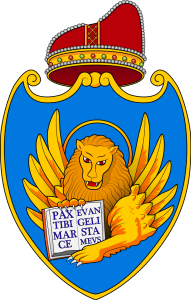
Red shoe or slipper {'sandal'}?
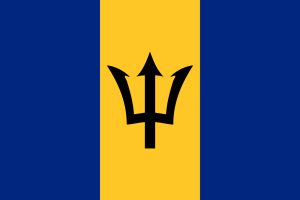
Flag of Barbados. Metal of the mind?
Side note: ''A leprechaun (Irish: leipreachán/luchorpán) is a diminutive supernatural being in Irish folklore, classed by some as a type of solitary fairy. They are usually depicted as little bearded men, wearing a coat and hat, who partake in mischief. In later times, they have been depicted as shoe-makers who have a hidden pot of gold at the end of the rainbow....The word may have been coined as a compound of the roots lú or laghu (from Greek: ἐ-λαχύ "small") and corp (from Latin: corpus "body"), or so it had been suggested by Whitley Stokes.[12][c] However, research published in 2019 suggests that the word derives from the Luperci and the associated Roman festival of Lupercalia...Lupercalia was a pastoral festival of Ancient Rome observed annually on February 'fifteen' to purify the city, promoting health and fertility.[2] Lupercalia was also known as dies Februatus, after the purification instruments called februa, the basis for the month named Februarius....In Folk etymology derives the word from leith (half) and bróg (brogue), because of the frequent portrayal of the leprechaun as working on a single shoe, as evident in the alternative spelling leithbrágan.''
'Cobbler' to enlarge.
Side note: ''The name of country 'Barbados' means 'the bearded ones'....'' ['The Chase'].
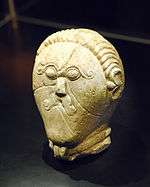
Celtic 'hero'. Twitching nose? 'Bristles'?
Continued: ''The festival was originally known as Februa ("Purifications" or "Purgings") after the februum which was used on the day.[3] It was also known as Februatus and gave its name variously, as epithet to Juno Februalis, Februlis, or Februata in her role as patron deity of that month; to a supposed purification deity called Februus;[4] and to February (mensis Februarius), the month during which the festival occurred.[3] Ovid connects februare to an Etruscan word for "purging".''
John O'Donovan's supplement to O'Reilly's Irish-English Dictionary defines lugharcán, lugracán, lupracán as "a sprite, a pigmy; a fairy of a diminutive size, who always carries a purse containing a shilling."
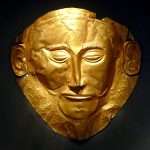
Eye or nose? Greek or Venician?
''The first coins of the pound sterling with the value of 12d were minted in 1503[4] or 1504[3] and were known as testoons. The testoon was one of the first English coins to bear a real (rather than a representative) portrait of the monarch on its obverse, and it is for this reason that it obtained its name from an Italian coin known as the testone, or headpiece, which had been introduced in Milan in 1474....''
Silver/Gold?

Aswan?
The obverse and reverse are the two flat faces of coins and some other two-sided objects, including paper money, flags, seals, medals, drawings, old master prints and other works of art, and printed fabrics. In this usage, obverse means the front face of the object and reverse means the back face....

'Opening of the mouth'? Swan Upping?
The obverse of a coin is commonly called heads, because it often depicts the head of a prominent person, and the reverse tails.
In numismatics, the abbreviation obv. is used for obverse,[1] while ℞,[1] )([2] and rev.[3] are used for reverse. Vexillologists use the symbols "normal" ![]() for the obverse and "reverse"
for the obverse and "reverse" ![]() for the reverse. The "two-sided"
for the reverse. The "two-sided" ![]() , "mirror"
, "mirror" ![]() , and "equal"
, and "equal" ![]() symbols are further used to describe the relationship between the obverse and reverse sides of a flag.
symbols are further used to describe the relationship between the obverse and reverse sides of a flag.
Refresher: ''Monarchy of the eye in relation to the democracy of the nose.''
Commissioned or Decommissioned?
Back to back?
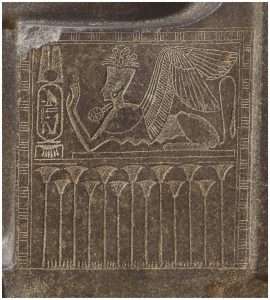
A dyad of Horemheb and Mutnodjmet from Karnak, now in the Museo Egizio, Turin. The sphinx depicted on the side of Mutnodjmet’s throne has arms raised in adoration of her cartouche. Images: Museo Egizio, Turin. [Page 14 'Ancient Egypt' / March-April 2024].
 And/or: ''The word soldier derives from the Middle English word soudeour, from Old French soudeer or soudeour, meaning mercenary, from soudee, meaning shilling's worth or wage, from sou or soud, shilling.[1] The word is also related to the Medieval Latin soldarius, meaning soldier (literally, "one having pay").[2] These words ultimately derive from the Late Latin word solidus, referring to an Ancient Roman coin used in the Byzantine Empire.''
And/or: ''The word soldier derives from the Middle English word soudeour, from Old French soudeer or soudeour, meaning mercenary, from soudee, meaning shilling's worth or wage, from sou or soud, shilling.[1] The word is also related to the Medieval Latin soldarius, meaning soldier (literally, "one having pay").[2] These words ultimately derive from the Late Latin word solidus, referring to an Ancient Roman coin used in the Byzantine Empire.''
Refresher: ''In Cycling, the umpire is referred to as a commissionaire.''
''....a person wearing a uniform who stands at the entrance of a hotel, theatre, etc. and whose job is to open the door for 'guests' and generally be helpful to them when they arrive. Hotels & hostels.''
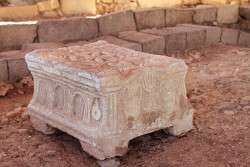
'Wheels' on a first century altar stone found at Magdala in Israel.
''In mainland Europe, a commissionaire is an attendant, messenger or subordinate employed in hotels, whose chief duty is to attend at railway stations, secure customers, take charge of their luggage, carry out the necessary formalities with respect to it and have it sent on to the hotel.''
'Station of No Station'?
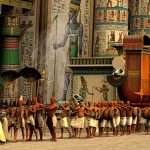
Any ''wheels'' at the Opet Festival?
Bear cubs?
A work in progress: ''Spiritual powers of the mind'' = Paracelsus definition of the ''four Scaiolae'': ''Qualities and faculties,'' that are fourfold to the corresponding four elements. They are the four WHEELS of the fiery chariot that swept Elijah up to heaven. The 'Scaiolae' he says, originate in the mind of man {'archetypes'}, from whom they depart and to whom they are turned back. The ''four'' represent a totality of the mind {animus i.e., logos}, which here, would be better translated as consciousness.'' [Page 167 'Alchemical Studies' / C. G. Jung].
Amun-Ra.
A working example: In the tomb of Tutankhamun which has three main chambers - to the left of the first one can be seen the wheels of chariots {all in pieces} moving from left to right in an ARC towards the sarcophagus chamber - which is at RIGHT ANGLES to it. The HORIZONTAL body of Tutankhamun when stood up in an UPRIGHT position would come face to face with the golden collared dog Anubis which is itself in front of a golden mantle {'hearth'?}. The body of Tutankhamun would then have to turn RIGHT to come back out of that 'darkness' to ASCEND that original passageway {in the MIDDLE of that first chamber} BACK into the Light. ['Legends of the Pharaohs: Tutankhamun'].
Side note: A boat found made of cedar {1224 parts?} next to the pyramid on the Giza Plateau - all in bits and pieces.
North = boat = water. South = land = chariot. All as a means...?
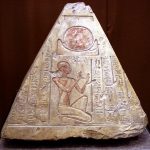
Benben capstone or should that be Benbenet? 'Pocket Rocket'?
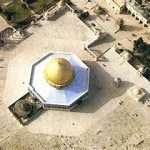 Continued: ''Blakes 'visions of eternity' are what man sees around him every day, as he stands at the center of his own universe in which every space {'hot coals'?} are visionary: 'And every space that a man views around his dwelling place {'huts'?}, standing on his own roof or on his garden {'Aswan'?} on a mount of twentyfive cubits in height - such space is his universe; and on its verge {'boundary/horizon'?} the sun rises and sets. The clouds bow to meet the flat earth and sea in such an ordered space on all sides and the two poles turn on their valves of ''gold'. And if he moves his dwelling place, his heavens also move wherever he goes and all his 'neighbourhood' bewail his loss. Such are the spaces called earth and such its dimention'. All spaces and times exist in the mind, and are flexible and ever various. Urizen prided himself upon the unity and immutability of his 'One Law for the Lion and Ox.'' [Page 25 'Golgonooza. City of Imagination: Last Studies in William Blake' / K. Raine].
Continued: ''Blakes 'visions of eternity' are what man sees around him every day, as he stands at the center of his own universe in which every space {'hot coals'?} are visionary: 'And every space that a man views around his dwelling place {'huts'?}, standing on his own roof or on his garden {'Aswan'?} on a mount of twentyfive cubits in height - such space is his universe; and on its verge {'boundary/horizon'?} the sun rises and sets. The clouds bow to meet the flat earth and sea in such an ordered space on all sides and the two poles turn on their valves of ''gold'. And if he moves his dwelling place, his heavens also move wherever he goes and all his 'neighbourhood' bewail his loss. Such are the spaces called earth and such its dimention'. All spaces and times exist in the mind, and are flexible and ever various. Urizen prided himself upon the unity and immutability of his 'One Law for the Lion and Ox.'' [Page 25 'Golgonooza. City of Imagination: Last Studies in William Blake' / K. Raine].
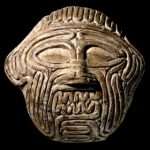
Labyrinth?
Guest/Host?
'Visions of the Daughters of Albion' / W. Blake.
''To 'escape' from the earths gravity pull {''escape velosity''} - takes 25000 MPH.'' ['Mirthy'].
''The M25 is an orbital motorway that encircles the CAPITOL city of London.'' ['Lightening'].

One 'vase' or two?
Side note: In 'magical' lodges the technique of pathworking is often used to lead the whole brotherhood into a shared experience of another place, a sacred temple or center of the wisdom they seek. All will share the 'visions' each 'seeing' his or her own interpretation {'aura'?} of the images described, and it is in this 'Place of the Worlds' that a 'magic' happening can be translated into a real event." [Page 49 'Magic for the Aquarian Age' / M. Green].
From a different perspective: ''And then Arthur seized the entrance to the cave and struck the hag {'Black Witch'} across the middle until she was two tubs...'' [Page 187/189 'A Celtic Quest' / J. Layard].
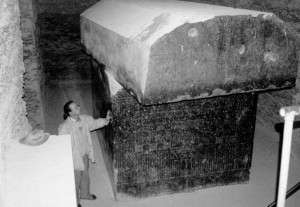
Polished 'stone' found within a labyrinth at Saqqara. 24 or 25? as a means...
Continued: "Twentyfive is the square of the sacred number 5 and is therefore used in the center of magic squares. It is also the sum total of 1, 3, 5, 7, and 9 and thus contains all the sacred numbers that can be used in 'magic'. For this reason, 25 candles would be lit so that every number was represented. Medieval Christian exegetes tended to regard 25, the square of 5, as the perfection of the five senses. Alternatively, they explained it as 6x{4+1}, which meant: 'good works on the basis of the 4 Gospels and the faith in one god.' When presented as {3x8}+1, it was interpreted as the sign of the hope for 'resurrection', which is realized through faith in the 1 god who manifests himself as the trinity. But there are also less {'lesser'?} mystical aspects of the 25. The quarter, 25 cents, is still a common coinage of the dollar. Twenty five is frequently used as a round number and serves, as a quarter of a full century, as a fitting number to celebrate silver jubilees." ['Mystery of Numbers'].
The ''quarter'' of something = S/W ? {landscape equivalent?}.
''In the Christian tradition, the twentyfifth of March - is the date that Mary was told she would give birth to Jesus.''
''Conception'' to enlarge.
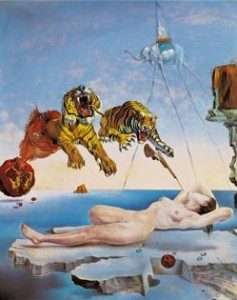

"The word skinn, of Norse derivation, refers to an outer covering or integument; a human being, a fish and an aircraft all have a skin and “to skin” describes its removal: A child falls and skins her knee, a hunter skins game before cooking. Ancient peoples flayed and wore the skins of human victims as a means of shedding, like the snake, the old skin of the year for renewal and transformation. Inside our own skins, we are not always aware of their remarkable nature. The adult human skin, if laid out flat, would cover about 21 square feet (Swerdlow, 39). In three layers, epidermis, dermis and subcutaneous fat, skin comprises 15 percent of our body weight. The biggest organ of the body, it functions to protect and cushion, is waterproof, elastic, breathable and washable." ['Book of Symbols' / Taschen]. 'Skin and bones'? 'Dawn' ?
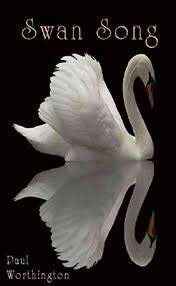
REFRESHER: ''The Swan is white without spot.'' Cygnus contains Deneb (ذنب, translit. ḏanab, tail) – one of the brightest stars in the night sky and the most distant first-magnitude star – as its "tail star" and one corner of the Summer Triangle the constellation forming an east pointing altitude of the triangle.
Side note: In esotericism, the Ego is the Self. This Self is a droplet of the Universal Mind {'bit'}, or Godhead. The Sanskrit term, manas, which may be translated as ‘the immortal individual’, as much as ‘higher mind’, is the equivalent of the real Ego. It is that droplet of the Godhead which -has sought experience through involvement with matter.
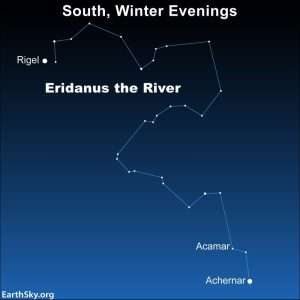
Right way up or upside down?
This minute particle of the Godhead is directed into matter in order to perceive Itself....While in life — chained to a physical body — the Ego must work into matter through three organs, or ‘bodies’, called in esotericism the Astral, the Etheric and the Physical, of which we shall learn more shortly. These bodies are controlled by the human ego, which the hermetic literature describes as sweeping down from the Spiritual World like a great bird —a pelican, phoenix or swan — to dwell in flesh on the material realm. The bird seems to be a curious one, for it has three wings rather than the usual pair....
The Ego is not entirely alone when it is cast adrift {'Abandoned/Isolated'?} from the higher Spiritual world. It is accompanied by three higher Spiritual bodies, invisible to ordinary vision. Like the goddess Venus, the Ego is attended by three Graces, a triad of Spiritual beings, who weave a stately dance around her. In these three beings, we trace the three higher Spiritual companions of the new-born Ego: in modern esoteric literature, these are called the Atman, Buddhi and Manas....
'Floating Island'?
Side note: ".... god rebuked Job for understanding so little. 'Where were you when i laid the foundations of the earth? When the Morning stars sang together { 'configuration of planets'?} - and all the 'angels' shouted for joy. Have you entered the springs of the sea or walked the depths of the deep? Have the gates of death been opened to you? Do you know where the 'Sun' lives, and where the 'darkness' comes from? Can you bind the chains of Pleiades or loose the belt of Orion."[Job 29:2-4]. See anything?
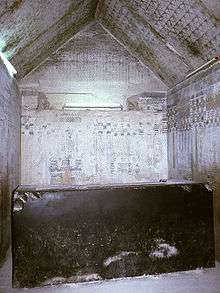
'Three and four'? Summer or winter?
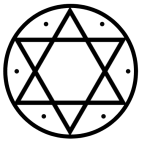
In a different form.
The Summer Triangle is an astronomical asterism in the northern celestial hemisphere. The defining vertices of this apparent triangle are at Altair, Deneb, and Vega, each of which is the brightest star of its constellation (Aquila, Cygnus, and Lyra, respectively). The greatest declination is +45° and lowest is +9° meaning the three can be seen from all places in the Northern Hemisphere and from the home of most people resident in the Southern Hemisphere. The two stars in Aquila and Cygnus represent the head of an eagle and tail of a swan that looks east inscribed into the triangle and forming the altitude of the triangle. Two small constellations, Sagitta and Vulpecula, lie between Aquila in the south of the triangle and Cygnus and Lyra to the north.
The Winter Triangle is an astronomical asterism formed from three of the brightest stars in the winter sky. It is an imaginary isosceles triangle[a] drawn on the celestial sphere, with its defining vertices at Sirius, Betelgeuse, and Procyon, the primary stars in the three constellations of Canis Major, Orion, and Canis Minor, respectively.[1]

Hercules.
 Continued: The Ego is pulled to the Earth realm by three lower bodies. These both cushion it from, and link it with, the material world.....The diagram {page 21-26 of book} presupposes that the Ego is itself a reflecting glass — a sort of mirror of potential — so that the Astral below it is reflected in the Manas above: the Physical is reflected in the highest Atman. This mirror image sets out the future development of mankind: for example, it is through the development of the Spiritual potential in the Atman that the physical will be redeemed.’ Sometimes, Atman is ‘Atma’. The physical is the only body among the seven which is visible to ordinary sight. While the lower three to some extent interpenetrate each other, the Ego is located (in so far as it is active in space and time) more around the head." ['The Zelator'].
Continued: The Ego is pulled to the Earth realm by three lower bodies. These both cushion it from, and link it with, the material world.....The diagram {page 21-26 of book} presupposes that the Ego is itself a reflecting glass — a sort of mirror of potential — so that the Astral below it is reflected in the Manas above: the Physical is reflected in the highest Atman. This mirror image sets out the future development of mankind: for example, it is through the development of the Spiritual potential in the Atman that the physical will be redeemed.’ Sometimes, Atman is ‘Atma’. The physical is the only body among the seven which is visible to ordinary sight. While the lower three to some extent interpenetrate each other, the Ego is located (in so far as it is active in space and time) more around the head." ['The Zelator'].
And/or: Our respect for his competence grew as he opened the bonnet: he knew precisely where to press the hidden release-catch, and where to cushion the metal stay. We could see that the car was in good hands." [same].
'Chariot'.

"A monumental conical pendulum clock by Eugène Farcot depicting the Greek goddess, 1862." Bent knee?

Leda mirror in the Louvre: Leda and the Swan is a story and subject in art from Greek mythology in which the god Zeus, in the form of a swan, seduces Leda, a Spartan queen.... In some versions, she laid two eggs from which the children hatched.
Urania's Mirror; or, a view of the Heavens is a set of 32 astronomical star chart cards, first published in November 1824.[1][2] They are illustrations based on Alexander Jamieson's A Celestial Atlas,[2] but the addition of holes punched in them allow them to be held up to a light to see a depiction of the constellation's stars.[1] They were engraved by Sidney Hall, and were said to be designed by "a lady", but have since been identified as the work of the Reverend Richard Rouse Bloxam, an assistant master at Rugby School.[3]
The cover of the box-set depicts Urania, the muse of astronomy. It originally came with a book entitled A Familiar Treatise on Astronomy... written as an accompaniment.[2][4] Peter Hingley, the researcher who solved the mystery of who designed the cards a hundred and seventy years after their publication, considered them amongst the most attractive star chart cards of the many produced in the early 19th century.
Mindset?
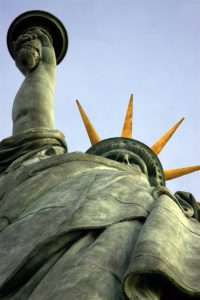
The New Colossus. 'Twentyfive' windows. 'Seven' spikes. Made of copper and steel. 'Thirtytwo' to enlarge?
Syzygy: An alignment of three celestial bodies (for example, the Sun, Earth, and Moon) such that one body is directly between the other two, such as occurs at an eclipse....It it worth 25 points in the Scrabble board game.''
'Line of Sight'.
Poseidon.
"If surviving Linear B clay tablets can be trusted, the names po-se-da-wo-ne and Po-se-da-o ("Poseidon")[14] occurs with greater frequency than does di-u-ja ("Zeus"). A feminine variant, po-se-de-ia, is also found, indicating a lost consort goddess, in effect the precursor of Amphitrite....Poseidon was the chief god at Pylos."
Linear A ?
The Palace of Nestor (Modern Greek: Ανάκτορο του Νέστορα) was an important centre in Mycenaean times, and described in Homer's Odyssey and Iliad as Nestor's kingdom of "sandy Pylos".[1]
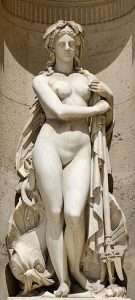
Resting on the handle of the {'iron'?} trident. 'Stillness'?
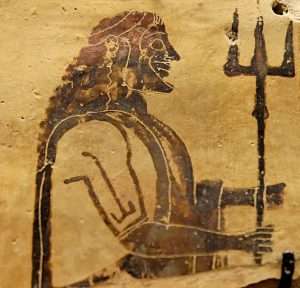 The palace featured in the story of the Trojan War, as Homer tells us that Telemachus: went to Pylos and to Nestor, the shepherd of the people, and he received me in his lofty house and gave me kindly welcome, as a father might his own son who after a long time had newly come from afar: even so kindly he tended me with his glorious sons.".....The site is the best preserved Mycenaean Greek palace discovered. The palace is the primary structure within a larger Late Helladic era settlement, once probably surrounded by a fortified wall. The palace was a two-storey building with store rooms, workshops, baths, light wells, reception rooms and a sewage system."
The palace featured in the story of the Trojan War, as Homer tells us that Telemachus: went to Pylos and to Nestor, the shepherd of the people, and he received me in his lofty house and gave me kindly welcome, as a father might his own son who after a long time had newly come from afar: even so kindly he tended me with his glorious sons.".....The site is the best preserved Mycenaean Greek palace discovered. The palace is the primary structure within a larger Late Helladic era settlement, once probably surrounded by a fortified wall. The palace was a two-storey building with store rooms, workshops, baths, light wells, reception rooms and a sewage system."
Solid foundations?
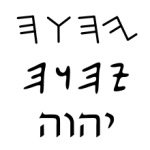 And/or: Theseus is sometimes described as the son of Aegeus, King of Athens, and sometimes as the son of the god Poseidon....The six entrances to the underworld, more commonly known as the Six Labours....The sixth bandit {'thief'?} was Procrustes the Stretcher, who had two beds, one of which he offered to passers-by in the plain of Eleusis. He then made them fit into it, either by stretching them or by cutting off their feet. Since he had two beds of different lengths, no one would fit. Theseus once again employed Procrustes' own method on him, cutting off his legs and decapitating him with his axe."
And/or: Theseus is sometimes described as the son of Aegeus, King of Athens, and sometimes as the son of the god Poseidon....The six entrances to the underworld, more commonly known as the Six Labours....The sixth bandit {'thief'?} was Procrustes the Stretcher, who had two beds, one of which he offered to passers-by in the plain of Eleusis. He then made them fit into it, either by stretching them or by cutting off their feet. Since he had two beds of different lengths, no one would fit. Theseus once again employed Procrustes' own method on him, cutting off his legs and decapitating him with his axe."
Recall the toes of Tutankhamun.
Refresher: ''The Vikings saw the Pole Star as a nail, which the heavens revolved around. The only culture to describe Orion as a woman - the goddess Frigg. A Spindle weaver, weaving garments for all.'' ['Mirthy'].

'Stretched'?
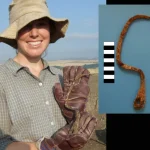
Iron key?
"Procrustes had a stronghold on Mount Korydallos at Erineus, on the sacred way between Athens and Eleusis.[3] There he had a bed, in which he invited every passer-by to spend the night, and where he set to work on them with his smith's hammer, to stretch them to fit. In later tellings, if the guest proved too tall, Procrustes would amputate the excess length; if the guest was too short Procrustes would stretch them until they died; nobody ever fit the bed exactly.[4] Procrustes continued his reign of terror until he was captured by Theseus, travelling to Athens along the sacred way, who "fitted" Procrustes to his own bed.....
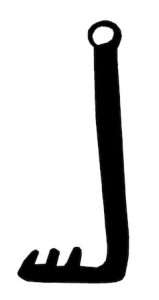
E-longa-ted: "Long in relation to width." 'Giant' ? N-S OR S-N?
The word Procrustean is thus used by analogy to describe, for example, situations where an arbitrary standard is used to measure success, while completely disregarding obvious harm that results from the effort."
(especially of a framework or system) enforcing uniformity or conformity without regard to natural variation or individuality:
- In Edgar Allan Poe's influential crime story "The Purloined Letter" (1844), the private detective Dupin uses the metaphor of a Procrustean bed to describe the Parisian police's overly rigid method of looking for clues."
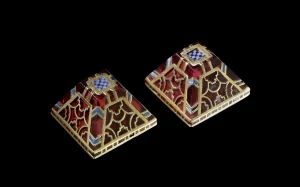
"Natural variation" or a mind set?
A Procrustean string is a fixed-length string into which strings of varying lengths are placed. If the string inserted is too short, then it is padded out, usually with spaces or null characters. If the string inserted is too long, it is truncated 123. The term is derived from the Greek myth of Procrustes, who would stretch or amputate the limbs of his guests to make them fit into an iron bed of a specific size 1. In computer science, a Procrustean string is used to store strings of varying lengths in a fixed amount of memory."
'Muse'?
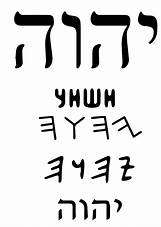 Side step: ''By first grade, we were taught that the letters a, e, i, o, u, and sometimes y are vowels. Most of us probably accepted what we were told (it was just another "rule" we had to follow), and never questioned why that last part was true (there were other things to wonder about, like snack time). Additionally, we unconditionally accepted that the other 'twenty' letters in the English alphabet were strictly consonants. To most, those vowels and consonants were just letters, but to that first grader who aspired to be a linguist, they were more than merely lines on a page.''
Side step: ''By first grade, we were taught that the letters a, e, i, o, u, and sometimes y are vowels. Most of us probably accepted what we were told (it was just another "rule" we had to follow), and never questioned why that last part was true (there were other things to wonder about, like snack time). Additionally, we unconditionally accepted that the other 'twenty' letters in the English alphabet were strictly consonants. To most, those vowels and consonants were just letters, but to that first grader who aspired to be a linguist, they were more than merely lines on a page.''
Sacred ones? Those extra 'five' at the end of the ancient year?

Where have you seen it before.
Continued: As seen from a different perspective...''By means of the cup, we can put anything ''into'' our Magical Cosmos we want, just as by the Shield we can exclude anything. So far as the inner world is concerned, the Cup means IN and the Shield means OUT. The Inner Cosmos must have internalities and externalities like any other Cosmos. So with the Cup, we take into ourselves all that we truly love and hold dearest to us, which we want nearest to our essential being. All else we arrange as externalities around the demarcation circle of ''Me and We'' by means of the Shield. This makes the Cup the most ''sacred'' of the instruments, since we should only use it for taking in and pouring forth the very best and finest energies we are capable of containing." ['Magical Ritual Methods' / W. Gray. Including all emphasis - with the exception of the word in bold print]. Try ''vase/s''
''A symbol is an energy evoking and direct agent {within a 'river' ?} - anything? Enlarged throughout.
Side note. ''Me and We'' in relation to same principle in such texts as the Bible and the Quran. Coincidence or a meaningful one?
Horus IN/OF the 'Horizon'?
 A connection?..."Why Queen Gwenevere should have missed the going on the 'hunt' and have ridden out alone but for a lady in waiting is not revealed by Chretien, any more than he gives a reason for Arthur's decision to call the Hunt of the White Stag in the first place. Indeed perhaps no reason is required, and all is preordained insofar that Arthur's decision and Guenevere's behaviour are crucial to the action of the whole story, initiate it and provide a substratum for its meaning... It is crucial to our story, for not only does it provide initial impetus for the action, but it points up the theme of a challenge to the Queen. At any rate Guenevere is shortly joined by Erec, described as a leading knight of the Round Table, of great fame at the court, although not yet twentyfive years old. He is fair, brave and courteous and appears very much a courtly fellow, indeed almost a dandy, in ermine mantle, coat of Byzantine flowered silk, well fitting brocade hose and golden spurs, whilst he is unarmed but for a 'sword'. Erec's name is derived from the Breton Guerec, which at some point may have been substituted for the Welsh Gweir - Gweir being the son of Llwych, which means 'lake' in Welch, whilst Erec's father is called King Lac...The flow of these tales is made up from many tributaries." ['The Faery Gates of Avalon'/ G. Knight].
A connection?..."Why Queen Gwenevere should have missed the going on the 'hunt' and have ridden out alone but for a lady in waiting is not revealed by Chretien, any more than he gives a reason for Arthur's decision to call the Hunt of the White Stag in the first place. Indeed perhaps no reason is required, and all is preordained insofar that Arthur's decision and Guenevere's behaviour are crucial to the action of the whole story, initiate it and provide a substratum for its meaning... It is crucial to our story, for not only does it provide initial impetus for the action, but it points up the theme of a challenge to the Queen. At any rate Guenevere is shortly joined by Erec, described as a leading knight of the Round Table, of great fame at the court, although not yet twentyfive years old. He is fair, brave and courteous and appears very much a courtly fellow, indeed almost a dandy, in ermine mantle, coat of Byzantine flowered silk, well fitting brocade hose and golden spurs, whilst he is unarmed but for a 'sword'. Erec's name is derived from the Breton Guerec, which at some point may have been substituted for the Welsh Gweir - Gweir being the son of Llwych, which means 'lake' in Welch, whilst Erec's father is called King Lac...The flow of these tales is made up from many tributaries." ['The Faery Gates of Avalon'/ G. Knight].
Side note: In the coronation of King Charles III {'Sixth' of the 'Fifth' 2023}...Words such as Kingship, Spurs, Embrace, Servant, Jewelled Sword, ''embroidered gold coat with girdle and belt'' - all used.
Any ermine?
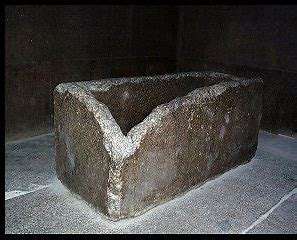
''Flesh Eater''. Two thirds external to that inner one. Northern aspect - always represented with something 'pure' i.e., ''white'' i.e., as one example 'snow' or 'Mother goose'. Get into that mindset to define Djedefre's 'position' in the greater scheme of things {i.e., seven/eight}. And/or: The Grand Gallery { in the 'navel' of the pyramid} = the filling of a ''void''. Question. The Southern aspect. Is it a beginning or end? 'Two' pillars? Isaiah 19:19?
From a different perspective: ''In Greek 'ermine' {flesh eating animal} is a word derived from ....pit/void/abyss/sea/ocean....it is the pontic water of the philosophers, our mercury, purged again and again with its own sulphur...'the waters of our sea'....'water of our mother'.....subject of the sages....The word pontios expresses all that 'which inhabits the sea'....The pure and white ermine thus appears as the expressive emblem of the 'common mercury' united to the 'sulphurous fish' in the substance of the 'philosophical mercury'...But the most significant imprint of the animated mercury, the superficial mark on the metallic spirit, can only be obtained by continual purifications...'' [Page 415-6 'Dwellings of the Philosophers'].
N.B. The Egyptian vulture and jackal also flesh eaters.
''Imprint'' in relation to something Set in Stone. Recall the 'Help' section.
Side note: Ermine Street from London to York.
Continued: Question. Arthur {shadow?} - Queen {anima?}. Mediator {by way of 'lake' and 'sword'} between the two = {Erec}. All as a means... to exercise the cognitive faculty?
'Sandor - The Hound - Glegane'? {Game of Thrones}.
N.B. Answer found on Page 32 of the book 'Red Tree, White Tree by W. Berg {of which the above author recommends}. Link to the word 'silence' - its benefits {purpose} in understanding ANYTHING. No matter how {or with 'what'} it is represented with.
Side note: Recall Richard Dawkins critique of something similar. Enlarged elsewhere.

Why Rhodes Island? Where is it positioned in the greater scheme of things?

Flat top? Question. Who first witnessed the 'resurrection'?
"Indeed there is an unconscious equivalence between hunter and hunted. In the Christian legend, a stag enters a thick forest in order to draw the soldier hunting it away from his comrades so that the stag can 'hunt the hunter, while he hunts', finally confronting him with a crucifix miraculously sprouting between its antlers. Thus the hunter and the hunted are secretly identical - the seeker and the spiritual goal, as well as the pathway {'ridgeways'?} to it, are one and the same." ['The Book of Symbols' / Taschen. Under the subheading ''Deer''].
Side note: "Seeker was a position in the wizarding sport of Quidditch. There was one Seeker per team. The goal of the Seeker was to catch the Golden Snitch. They played a crucial role in Quidditch, as a game did not end until the Seeker caught the Snitch. A team whose Seeker caught the Snitch received 150 points, which almost always won the match for that team. The position of the Seeker, known as the Hunter, was introduced in response to Barberus Bragge's introduction of the Golden Snidget during a match."

Balanced/UNbalanced. Which and why?
Continued: ''I am the wind that blows across the sea; I am the wave of the deep; I am the roar of the ocean; I am the stag of seven battles; I am the hawk on the cliff; I am the ray of sunlight; I am the greenest of plants; I am a wild boar; I am a salmon in a river; I am a lake on a plain; I am the word of knowledge; I am the point of a spear; I am the lure beyond the ends of the earth; I can shift my shape like a god.'' ['The Song of Amergin' / Ancient Irish Text].
Duration 'Six' minutes.
Gallbladder to enlarge.

Upside down or right way up pattern?
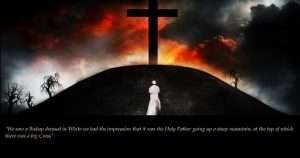
Isis (called "Aset" by the Egyptians), a daughter of Nut and Geb, is known in Ancient Egyptian mythology as a goddess of magic. Wife and sister of Osiris, Isis was originally considered a funerary goddess. After her resurrection via magic of Osiris, who had been killed by his brother Set, Isis was considered "more powerful than a thousand soldiers" and "the clever-tongued one whose speech never fails." She is sometimes invoked as an assistant in magical rituals in some traditions of contemporary Paganism. Her worship is also a focus of some Kemetic reconstructionist groups.
''No name for this soldier is given in the canonical Gospels; the name Longinus is instead found in the apocryphal Gospel of Nicodemus. Longinus did not start out as a saint. An early tradition, found in a sixth or seventh century pseudepigraphal "Letter of Herod to Pilate", claims that Longinus suffered for having pierced Jesus, and that he was condemned to a cave where every night a lion came and mauled him until dawn, after which his body healed back to normal, in a pattern that would repeat until the end of time.''
Red or green 'lion'?
From a different perspective: ''Prometheus was punished by Zeus because he stole fire to give back to mankind. He was chained to a rock in the Caucasus Mountains, and every day an eagle came and ate part of his liver. Each night, his liver would regrow, which meant he had to endure his punishment for eternity.''
Fire/Water as a means....?

'Triples?
"Behold King Arthur himself,' breathed Chretien to me. 'This is how Erec's adventure began. With the hunting of the White Stag.' As he spoke the king blew his horn again...As in a wild rout the great body of men and animals charged off into the forest, leaving us standing there in the clearing alone. 'Perhaps we should see what has happened to the Queen,' I said..." [Final paragraph to the above book by G. Knight]. Hint, hint....
The first hint in relation to ''white'' i.e., normally associated with the north therefore snow/ice and in its liquid form ''flood waters''.
2nd hint ''Queen'' i.e., the female 'duality' of the male. While recalling that the ONLY female deer to grow antlers is ? Understanding that gives further possible clues to the intent THEREFORE mind set to the purpose of same - found in a cave in Sheffield 13000 years ago. Enlarged elsewhere.
Try ''N. Oliver''. And/or 2:3 {under 'deer'}. Then 5:5 / 5:8

From a different perspective: ''....+7 is reached perhaps, only when the Thames is frozen so that men and animals can safely cross it. The region 1-7 is called the Winter Hemisphere. 1 to -7 the Summer one.'' ['Fludd's Weather Glass' Page 60 'Robert Fludd' / J. Godwin].
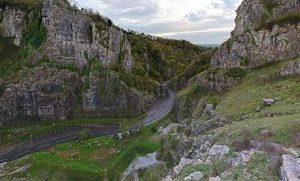
Cheddar gorge.
Question. At what stage {time?] of that retreat 'back to the 'north - was that cave in Sheffield exposed. Could a group of individuals - wanting to ''evolve'' their beliefs have followed that last glaciation as far as they could? Generation after generation. All sharing the same 'ideas'. When were these islands first known as those at the ''back of the north wind''? Where did the likes of Hesiod or Homer or Hecataeus of Abdera {a Greek living in Egypt} get there 'ideas' from? Oral tradition?
Something extra: "The Lapwing, as Cornelius Agrippa, the early 16th century 'occult' philosopher, reminds us: 'Seemeth to have some royal thing and weareth a crown'. I do not know whether Agrippa seriously meant to include the Lapwing among royal birds, but if he did his best authority was 'Leviticus' X1,19. The Lapwing is there mentioned as an unclean, that is to say tabooed, bird in the company of the eagle, the griffin-vulture, the IBIS, the cuckoo, the swan, the kite, the raven, owl, the barnacle goose, {solan goose?}, the stork, heron, and pious pelican. That these taboo's were of non semitic origin is proved by there geographical distribution: several of the birds {Ibis?} do not belong to the heat-belt which is the semitic homeland, and every one of them was sacred in Greece and Italy." [Page 53/4 'The White Goddess' / R. Graves].
''The name Aztec is derived from Aztlán (variously translated as “White Land,” “Land of White Herons,” or “Place of Herons”), an allusion to their origins, probably in northwestern Mexico.'' [Wiki].
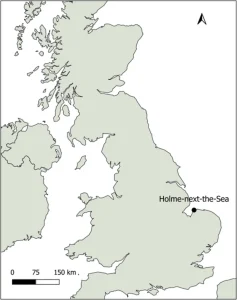
 AND/OR: This article combines archaeology and archeoastronomy through the thematic focus of the folklore associated with the common (formerly European) cuckoo (Cuculus canorus Linnaeus, 1758), hereafter ‘cuckoo’, to infer the intent and functions of two contemporary Early Bronze Age (EBA) adjacent timber-circles in Britain. Here they are considered to be currently best-explained as independent, magico-religious attempts to resolve a period of extreme climatic deterioration at the close of the third millennium BC.
AND/OR: This article combines archaeology and archeoastronomy through the thematic focus of the folklore associated with the common (formerly European) cuckoo (Cuculus canorus Linnaeus, 1758), hereafter ‘cuckoo’, to infer the intent and functions of two contemporary Early Bronze Age (EBA) adjacent timber-circles in Britain. Here they are considered to be currently best-explained as independent, magico-religious attempts to resolve a period of extreme climatic deterioration at the close of the third millennium BC.
Holme I and II
 Holme I, popularised as the misnomer ‘Seahenge’, and Holme II are two of over 100 known timber-circles constructed predominantly in Late Neolithic (LN) and EBA Britain (Gibson, 2005, p. 65). They were erected in a coastal-marsh habitat protected from the sea by sand dunes. Such temporary constructions or those fabricated from degradable materials usually remain, at best, as traces but these monuments were covered and preserved in anaerobic conditions until exposed shortly before excavation in 1999 in the now intertidal-zone of Holme-next-the-Sea, Norfolk (Brennand & Taylor, 2003; Fig. 1). It was determined using dendrochronology that their timbers were felled in the spring of 2049 BC (Tyers, 2014). The remaining timbers of Holme I were removed and preserved while those of Holme II, approximately 100 m to the east, were left in place....
Holme I, popularised as the misnomer ‘Seahenge’, and Holme II are two of over 100 known timber-circles constructed predominantly in Late Neolithic (LN) and EBA Britain (Gibson, 2005, p. 65). They were erected in a coastal-marsh habitat protected from the sea by sand dunes. Such temporary constructions or those fabricated from degradable materials usually remain, at best, as traces but these monuments were covered and preserved in anaerobic conditions until exposed shortly before excavation in 1999 in the now intertidal-zone of Holme-next-the-Sea, Norfolk (Brennand & Taylor, 2003; Fig. 1). It was determined using dendrochronology that their timbers were felled in the spring of 2049 BC (Tyers, 2014). The remaining timbers of Holme I were removed and preserved while those of Holme II, approximately 100 m to the east, were left in place....
 Holme I was a six-by-seven-metre oval enclosure on a north-west to south-east axis encircling an upturned oak stump that had been placed in a pit (Fig. 2). The outer palisade of vertically-split oak-posts was fabricated from particularly gnarled, knotty trees that would have been difficult to work. They had their bark surfaces directed outwards with the exception of timber 30 (Fig. 3). They are sections of a maximum of 25 trees between 100- and 150-years-old that dendrochronology confirmed came from the same woodland (Tyers, 2014). The timbers designated ‘other’ in Fig. 3 are much larger than the split posts from elsewhere within the oval. They are not half-splits but divided in unusual ways, some with heartwood and sapwood removed. Some are derived from the same tree as the central tree-stump that was 250 to 350 years old when it was toppled or blown-over before having all of its bark and side roots stripped off (Robertson et al., 2016).
Holme I was a six-by-seven-metre oval enclosure on a north-west to south-east axis encircling an upturned oak stump that had been placed in a pit (Fig. 2). The outer palisade of vertically-split oak-posts was fabricated from particularly gnarled, knotty trees that would have been difficult to work. They had their bark surfaces directed outwards with the exception of timber 30 (Fig. 3). They are sections of a maximum of 25 trees between 100- and 150-years-old that dendrochronology confirmed came from the same woodland (Tyers, 2014). The timbers designated ‘other’ in Fig. 3 are much larger than the split posts from elsewhere within the oval. They are not half-splits but divided in unusual ways, some with heartwood and sapwood removed. Some are derived from the same tree as the central tree-stump that was 250 to 350 years old when it was toppled or blown-over before having all of its bark and side roots stripped off (Robertson et al., 2016).
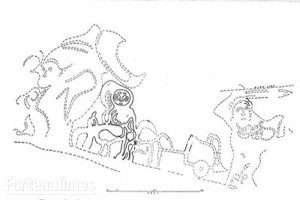
The cubit is an ancient unit of length based on the distance from the elbow to the tip of the middle finger. It was primarily associated with the Sumerians, Egyptians, and Israelites. The term cubit is found in the Bible regarding Noah's Ark, the Ark of the Covenant, the Tabernacle, and Solomon's Temple. The common cubit was divided into 6 palms × 4 fingers = twentyfour digits. Royal cubits added a palm for 7 palms × 4 fingers = twentyeight digits. These lengths typically ranged from 44.4 to 52.92 cm (1 ft 5+1⁄2 in to 1 ft 8+13⁄16 in), with an ancient Roman cubit being as long as 120 cm (3 ft 11 in). Cubits of various lengths were employed in many parts of the world in antiquity, during the Middle Ages and as recently as early modern times. The term is still used in hedgelaying, the length of the forearm being frequently used to determine the interval between stakes placed within the hedge.
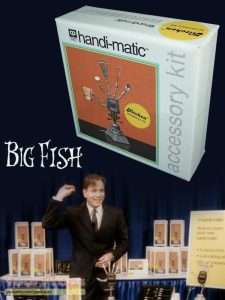
The English word "cubit" comes from the Latin noun cubitum "elbow", from the verb cubo, cubare, cubui, cubitum "to lie down", from which also comes the adjective "recumbent". N.B. The Colossus of Rhodes was seventy cubits tall.
Analogy: Oaks are one of the trees mentioned often in the Bible. This is a recognizable tree for many of us since oaks are found all around the world. The particular types of oak mentioned in the Bible are two kinds that grow short, gnarled, and broad with acorns that are slim and pointed. Oaks were especially common in the area called Bashan, which was on the northeast side of the Jordan River.
In the Bible, the spreading oaks and the shade they provided was an important place. Important items were buried or set at their base (Gen. 35:4, Josh. 24:26). People were buried at the base of the oak trees (Gen. 35:8, 1 Chron. 10:12). The angel of the Lord who came to Gideon sat under an oak tree (Judges 6:11–19). Prophets would sit under the oaks (1 King 13:14). And idol worship would take place under the oak trees (Hos. 4:13). It was even an oak tree that caught Absalom’s hair (2 Sam. 18:9–14).
Oaks are known for their strength. It was a sign of God’s power that he could destroy the oaks in his wrath (Amos 2:9, Zech. 11:2).
As God’s people, we are to be strong in our faith like oak trees. When the howling winds of the trials of this life swirl around us, we aren’t to break before them but stand strong. We are strong like oaks because God has made us strong. His Spirit in our hearts makes us strong like the oak.
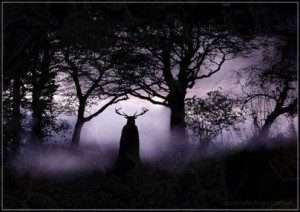
To many lagers?
Side note: As the tree ages, certain permanent changes take place in the wood. The inner parts of the wood become darker. The xylem in this central part is called heartwood (it is not hardwood) or 'duramen'. The peripheral part of the wood is light coloured and it is called sapwood or 'alburnum'.
Continued: Conclusions:
Holme I and II were constructed in 2049 BC, determined using dendrochronology (2048 BC astronomic time), by a society under stress during a proven, prolonged period of decreased atmospheric temperatures and severe winters/springs. The monuments had the common intention to end this existential threat but they had different functions. The inaugural components of Holme I were aligned with sunrise on the summer solstice when Venus remained visible symbolising a hieros gamos with the Sun and creating a period of ‘ritual-time’ when the inaugural components were erected. It was also the date when the cuckoo, symbolising fertility, traditionally stopped singing, returned to the Otherworld and the summer went with it. The monument’s form appears to imitate two supposed winter dwellings of the cuckoo remembered in folklore: a hollow tree or ‘the bowers of the Otherworld’ represented by the upturned oak-stump at its centre. It was recalled in folklore as the ‘myth of the pent cuckoo’ where an unfledged cuckoo placed in a thorn bush was walled-in with the intention of keeping the cuckoo singing and thereby retaining the summer.

Venus and Mercury are closer to the Sun than the Earth. Consequently, they are only seen comparatively close to the horizon after sunset or before dawn. Venus, the third brightest celestial object, can often be seen before sunset and after sunrise. When viewed from the same location on the same annual date, Venus will rise or set on almost exactly the same position on the horizon (its azimuth) every eight years as thirteen Venus-years coincide with eight earth-years plus two days eight hours. This results in Venus, when viewed from the same location at the same date and time every eight years, appearing to slowly travel from the Sun in an arc reaching a southern standstill position, where it remains for some time, and then move back towards the Sun until it is no longer visible due to the Sun’s glare.
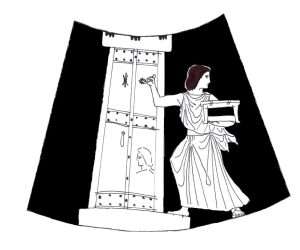
It is proposed that the function of Holme I was to enclose an unfledged cuckoo. The intention was to keep it singing and thereby to extend the summer weather all year (Field, 1913; Hardy, 1879; Harte, 1986; Rawes, 1978). This was to be achieved by mimicking both locations where the bird was thought to overwinter in a hole in a tree or in the ‘fairy bowers’ of the Otherworld’, recalled in ‘the myth of the pent cuckoo’ (Section "Penning the cuckoo"). The Otherworld was described as much like this one but of perpetual youth and good health (Green, 1997, p. 68); a parallel world alongside this one; a land beyond the sea or underground (Koch, 2006, p. 1671).
Holme II was probably erected in the autumn of the same year. A sacred enclosure to contain the body of a warrior, a champion of a local goddess of fertility and sovereignty, associated with the cuckoo and the planet, Venus. He has similarities with the Late Iron Age sacral kings of Ireland and those in northern Britain who were titled ‘cuckoo’. The champion was deemed to have failed in his cosmic responsibility to maintain the fertility of the land and its peoples sacrificed to the goddess, in the hope that she would end the cold spell. He was probably sacrificed at Samhain, his bier orientated with sunrise on that date when Venus was still visible. In support of this hypothesis, a number of Bronze and Iron Age European goddesses associated with the cuckoo, Venus and a mortal consort appear to be descended from a Neolithic archetype. One such British goddess is remembered in a legend from Calanais and dated using archaeoastronomy to the EBA. Both hypotheses are further supported by utilising environmental data from the location, results of aDNA studies, astronomic and biological evidence, regional folklore, place-name studies and an ethnographic analogy with indigenous Late Iron Age practices that indirect evidence from archaeoastronomy strongly suggests were undertaken in EBA Britain.
Side step: ''In the early 16th century, Spanish explorer Vasco Núñez de Balboa crossed the Isthmus of Panama in 1513 and sighted the great "Southern Sea" which he named Mar del Sur (in Spanish). Afterwards, the ocean's current name was coined by Portuguese explorer Ferdinand Magellan during the Spanish circumnavigation of the world in 1521, as he encountered favorable winds on reaching the ocean. He called it Mar Pacífico, which in both Portuguese and Spanish means 'peaceful sea'. [7] Alternative name by indigenous Islanders is Te moana-nui a Kiwa.''
Continued: To understand the significance of the Lapwing try ''Battle of the Trees''.

The horns of the bull {on that mountain side} almost coming together - like a circle - {or cycle}. The pinnacle of something {Al-Qurn?} - a golden embrace - ready for the next stage. Question. Seated on his throne? From a ''standing'' position?
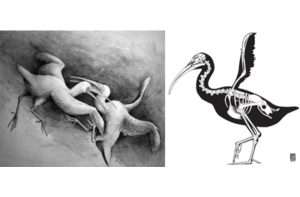
Xenicibis is a large, extinct, flightless ibis. It was discovered by Storrs Olson from the Smithsonian Institution, who found some partial remains in a Jamaican cave in 1977. When Olson eventually saw the bird’s wing bones, he was baffled. They were so “utterly strange” that he thought the animal must have been suffering from some inexplicable disease.
Since then, Olson has found more remains including an almost complete skeleton. Now, he and his partner Nicholas Longrich from Yale University, have a very different view of the wing. They think it was a club. Weapons like clubs and bats have large weighted ends to deliver heavy impacts, and long handles to increase the speed of the swing. That’s exactly what you see in Xenicibis’s wing.
Side note: Hieroglyph of an Ibis bird between two ancient stork birds as seen on a mountain side South of Karnac { El-Khawy} - an ancient trade route - The ancient symbol of the ''horizon'' sign. Found also in the tomb of the Scorpion King at ABYDOS. That together with the horned bull hieroglyph = ''Royal power equals solar power - The king on earth is as the sun in the sky.'' Many 'bull' skeletons {with horns} found in enclosed walls surrounding the palace of Ramesses at Abydos - placed there with deliberate intention in the Ptolemy era . Ramesses identifying with the Scorpion king as the Ptolemy with Ramesses. This subject being the COMMON factor.
And/or: Rams heads with horns found close by at Ramses temple complex.
What was found around the corner {'bend'} from Abydos. Within the Qena Governorate. The very first one ever found - that one of the Ptolemies is associated with. Was an expert on.
Try ''Upright'' to get into that MIND SET.
From 90 - 180 as a means....?
To bend ones WILL.

Flat top?
Refresher: ''Ancient spiritual traditions link the khu with the crown chakra, or pineal gland located at the tip of the brain....it was said to preexist the creation of the world and to be, simultaneously, the final goal of transformed matter {'crocodile'?}.....The khu is depicted as the crested ibis standing before a star- a spark of genius or shining brilliance and/or the divine spark. Represented with its dark green iridescent plumage {drake duck head?}....that seemed to glitter with metallic sparks.''[Page 246 'Dreams of Isis'].
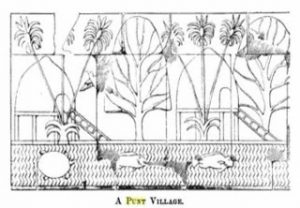
Land of Punt.
From a different perspective: ''I have already said too little and too much about the Stone of the Phiosophers. Why should i not speak more plainly still? Why shouldn't i, too, prise open a small door in the King's shut palace? [ Page 369 'Mercurius' / P. Harpur].
''Open Air''?

Famine Stela. Any plants or gardens?
Continued: ''The kingdom of the plants can easily be thought of as the nearest neighbour of the kingdom of death. Perhaps the mysteries of transformation and the enigma of LIFE which so torment us are concentrated in the green of the earth, among the trees in graveyards and the flowering shoots springing from their beds. Mary Magdalene, not at once recognising Jesus risen from the grave, took him for the gardner.'' [Page 61 'Russia: Past, Present and Future' / R. Steiner].

Oleg Penkovsky. A TRUE Russian. R.I.P
Side note: Coriander seed used to describe the ''manna'' that was used in the deserts of the ''wilderness years''. That food a 'given' - against a the fret of a famine. Forty years in relation to the fortytwo nomes within Egypt. As everyone knows. Every culture borrowed from the Egyptian one.
And/or: The desert of Sin {wilderness} encompasses areas from Kadesh in the Sinai Peninsula, up to the Dead Sea and into Petra in South Jordan {''where Aaron is buried''}. That journey that began from the west on the fifteenth day of the 2nd month....And/or: ''It was like coriander seed but white and tasted like wafers made of honey.....Some {an omer's worth} was kept in an urn {'vase?'} within the Tabernacle.''['Day 6: 'Pilgrimage of Grace' / K. Nichols / Magdala / March 2022].
''Missing the Mark''?
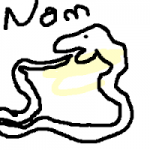
The same symbol found as the main 'totem' on their main temple. Question. Where have you seen it before?

Which one is the Groom of the Stool? What would Mother Russia think. Would she join them or erase them?
And/or: The narrator Ramy Romany goes in search of answers to the mummies {the 'cloud people'} found in the Peruvian jungle on the cliff side face of mountains. 'High up in the sky'. All organs taken through the anus {excrement/turd link?} - all found in a sitting position {'seated'/ throne link?} with there hands {'fingers'?} around their face {face to face?}. Described as ''tall and white''. Completely different to the norm. Celtic structures found {circular huts} at least '400' of them . But with one exception. 'Platforms' used as a foundation for the Chachapoya huts. Brian Foerster {main researcher} listened to the ''oral tradition'' which says they {Celts} came from across the sea. ['Mummies Unwrapped' / Series 1. Episode 1].
The ''Sea People''?
And/or: ''A cloud by day and a fire by night''.
'The Cloud of UNknowing'.

'Cliff' to enlarge.

"We are warriors." In cuckoo land? Head in the clouds?
The Chachapoyas, also called the "Warriors of the Clouds", were a culture of the Andes living in the cloud forests of the southern part of the Department of Amazonas of present-day Peru. The Inca Empire conquered their civilization shortly before the Spanish conquest in the 16th century. At the time of the arrival of the conquistadores, the Chachapoyas were one of the many nations ruled by the Incas, although their incorporation had been difficult due to their constant resistance to Inca troops.....The name Chachapoya was given to this culture by the Inca; the name that these people used to refer to themselves is not known. The meaning of the word Chachapoya may be derived from the Quechua sach'a phuyu (sach'a = tree,[2] phuyu = cloud[3]) meaning "cloud forest". Another possibility is that it may derive from sach'a-p-qulla (sach'a = tree, p = of the, qulla = the name of a pre-Inca kingdom from Puno) that the Incas used as a collective term for the many kingdoms around Lake Titicaca, the equivalent of "qulla people who live in the woods".
The Chachapoyas' territory was located on the eastern slopes of the Andes, in present-day northern Peru.[4] It encompassed the triangular region formed by the confluence of the Marañón River and the Utcubamba in Bagua Province, up to the basin of the Abiseo River where the Gran Pajáten is located.


Eurynome
From a different perspective: ''Seperating the island from Italy are the straits of Messina, home to that pair of mythological monsters Scylla and Charybdis. Charybdis haunted the Sicilian side of the straits, where 'spray shot up and sand churned in heaving sea'. An undistinguished sea nymph, she possessed one tragic flaw that led to her down-FALL: an insatiable appetite....'Wolfed down' some of the cattle of Hercules {of Geryon}, which he had stolen from the giant. The cattle were under the protection of Zeus. He hurled a thunderbolt at Charybdis, who fell, trapped beneath a rock. Her hunger unabated, and three times each day thereafter, sucked down each day all she could into the JAWS of her prodigious whirlpools. Strabo once wrote of his wonder of the 'great depth, into which vessels can so easily be sucked thanks to its BACK-flowing currents, plunging prow-first into its fast flowing whirlpool. When these ships are swallowed {Argo Navis?} and shattered, the wreckage is carried ashore at Taormina, which for this reason is named 'Excrementa'....'' [Page 48 'World Archaeology' / Aug-Sep 2023].
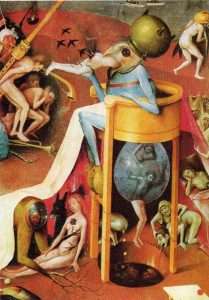
Depth?
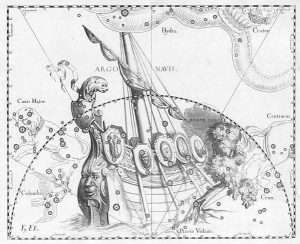 ''On the east coast of Sicily, idyllicly perched on a rocky promontory {'peninsula'?} on the side of a mountain, high above the sea, Taormina has been the most popular tourist destination in Sicily for a couple of hundred of years. It has a view of Mount Etna - a snow covered active volcano. Trails, pathways leading to it.''
''On the east coast of Sicily, idyllicly perched on a rocky promontory {'peninsula'?} on the side of a mountain, high above the sea, Taormina has been the most popular tourist destination in Sicily for a couple of hundred of years. It has a view of Mount Etna - a snow covered active volcano. Trails, pathways leading to it.''
“A mile wide and an inch deep” ” (or “an inch deep and a mile wide") quickly began to be adopted to describe people whose knowledge of things is was superficial. The saying has been used in politics, academia and other fields, including religion.''
A mile deep an inch wide?
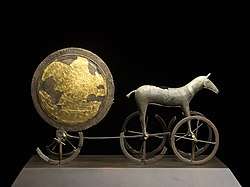
''Other forms: fathoms; fathomed; fathoming. To fathom something is to understand it thoroughly. It's usually used in the negative, as in "I can't fathom why he doesn't want to go along with us."
''The constellation of Puppis {'Dog Star'?} was once part of a much larger constellation named Argo Navis. In the 1700s, Nicolas Louis de Lacaille divided this former ship into three constellations that make up the parts of the ship. They are Puppis the Stern, Carina the Keel and Vela the Sail.''
'Place of Rowing'?
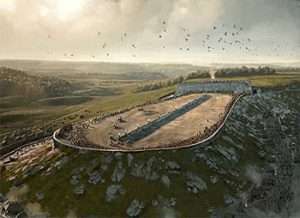
Alte Burg. Described as an oval shape 'hippodrome'. The first of its kind. "Ploughing the waves?" Air or water?
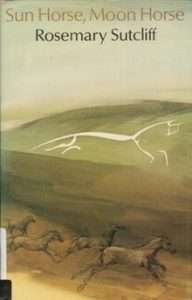
East or west?
''Argo Navis, literally the Ship Argo, represents the vessel that transported Jason and the Argonauts to and from Colchis, as the quest for the Golden Fleece was undertaken. The Argo was constructed by Argos, from a design of Athena, and was partially made with magical wood from Dodona.''
Side note: "At an altitude of 2500 miles you can stay up at only 2 miles per second and your orbit can be even freer....Getting completely out of the whirlpool is, relatively speaking, a pushover from here. The rule is that from any orbit that holds you continuously above the earth {or any other gravitating body} all you need do is multiply your velocity by √² to escape the body altogether. Thus if any satellite with an average velocity of 2 miles per second increases it to 2 √² or 2.8 mps it will just sail off never to return." [Page 64 'Serpent in the Sky' / John West].
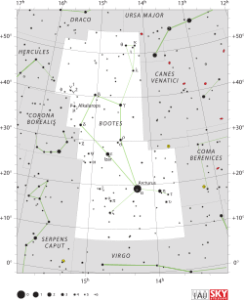
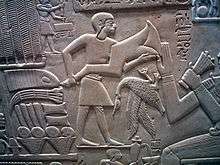 Continued: ''Boötes (/boʊˈoʊtiːz/ boh-OH-teez) is a constellation in the northern sky, located between 0° and +60° declination, and 13 and 16 hours of right ascension on the celestial sphere. The name comes from Latin: Boōtēs, which comes from Greek: Βοώτης, translit. Boṓtēs 'herdsman' or 'plowman' (literally, 'ox-driver'; from βοῦς boûs 'cow'). One of the 48 constellations described by the 2nd-century astronomer Ptolemy, Boötes is now one of the 88 modern constellations. Homer mentions Boötes in the Odyssey as a celestial reference for navigation,[5] describing it as "late-setting" or "slow to set".[6] Exactly whom Boötes is supposed to represent in Greek mythology is not clear. According to one version, he was a son of Demeter,[7] Philomenus, twin brother of Plutus, a plowman who drove the oxen in the constellation Ursa Major.[8] This agrees with the constellation's name.[9] The ancient Greeks saw the asterism now called the "Big Dipper" or "Plough" as a cart with oxen.[1][10] Some myths say that Boötes invented the plow and was memorialized for his ingenuity as a constellation. Another myth associated with Boötes by Hyginus is that of Icarius, who was schooled as a grape farmer and winemaker by Dionysus. Icarius made wine so strong that those who drank it appeared poisoned, which caused shepherds to avenge their supposedly poisoned friends by killing Icarius.''
Continued: ''Boötes (/boʊˈoʊtiːz/ boh-OH-teez) is a constellation in the northern sky, located between 0° and +60° declination, and 13 and 16 hours of right ascension on the celestial sphere. The name comes from Latin: Boōtēs, which comes from Greek: Βοώτης, translit. Boṓtēs 'herdsman' or 'plowman' (literally, 'ox-driver'; from βοῦς boûs 'cow'). One of the 48 constellations described by the 2nd-century astronomer Ptolemy, Boötes is now one of the 88 modern constellations. Homer mentions Boötes in the Odyssey as a celestial reference for navigation,[5] describing it as "late-setting" or "slow to set".[6] Exactly whom Boötes is supposed to represent in Greek mythology is not clear. According to one version, he was a son of Demeter,[7] Philomenus, twin brother of Plutus, a plowman who drove the oxen in the constellation Ursa Major.[8] This agrees with the constellation's name.[9] The ancient Greeks saw the asterism now called the "Big Dipper" or "Plough" as a cart with oxen.[1][10] Some myths say that Boötes invented the plow and was memorialized for his ingenuity as a constellation. Another myth associated with Boötes by Hyginus is that of Icarius, who was schooled as a grape farmer and winemaker by Dionysus. Icarius made wine so strong that those who drank it appeared poisoned, which caused shepherds to avenge their supposedly poisoned friends by killing Icarius.''
Remedy?
'Plow the waves'? 'Hoe the Fields'?
That eternal combat between positive/negative. Within that overall personnel ‘journey’. Represented by the ‘Great year’. Or its present equivalent. The Precession of the equinox’. Its physical/individual representation within the same, [ ‘Macro’ equivalent ]...as the Greater / Lesser 'Bear' Constellation. Or as a ‘Millstone’ or ‘Quern stone’, [ ‘Micro’ equivalent ]. Time team links. Always discovered upside down. Symbolic of ‘back to’.
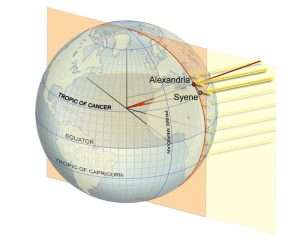
Five o'clock shadow?
"The equinoxes are the only times when the solar terminator {the ''edge'' between night and day} - is perpendicular to the equator. As a result, the northern and southern hemisphere's are equally illuminated." [Wiki/'equinox']. Try ''boundary'' and/or ''angle'' and/or 90 degrees.
Side note: "Chapter 7 examines Homer's theory of the precession of the equinoxes and explains the astronomical significance of the shield made for Achilles by the crippled smith god, Hephaestus. The shield and armour are allegories for the reorganization that became necessary when Sirius reappeared in the skies of Greece." ['Homer's Secret Iliad']. Enlarged elsewhere.
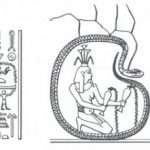
Fertilizing 'wheat'?
Continued..."The discovery {at Hallan Cemi } of a substantial number of quern stones, used to grind seeds, has led some prehistorians to suggest that the inhabitants of Hallan Cemi were engaged in protoagriculture, or certainly the exploitation of wild cereals. However, very few cereal seeds have been found at the site, casting doubts on this theory. In fact, all the indications are that the main food here, in addition to game meat, consisted of wild lintels, bitter vetch, and nuts." [From the book 'Gobekli-tepe' ]. Try ''bitter/sweet'' / ''wheat'' i.e.,...
"According to the testimony of many myths, the Cosmic Man {enlarged elsewhere] is not only the beginning but also the final goal of all life - of the whole of creation. ''All cereal nature means wheat, all treasure nature means gold, all generation means man,'' says the medieval sage Meister Eckhart. And if one looks at this from a psychological standpoint, it is certainly so. The whole inner psychic reality of each individual is ultimately orientated toward this archetype symbol of the Self." ['Man and his Symbol'. Enlarged elsewhere]. Try ''quern''.
'A grain of wisdom.'
Question. How many grains make a cake?
Funerary cake?
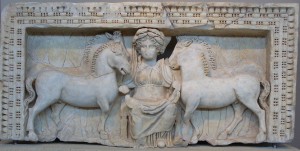
Epona - flanked by two pairs of horses. Domesticity only? Two 'weak' . Four 'strong'? Try ''Homer''.
Analogy {i.e.,wisdom expected to be found within it?}: "So, the images from the Old Stone Age still pose us a series of riddles. Certain aspects of animals were selected for portrayal, and placed in a variety of locations, including the walls of caves and overhanging rocks, boulders and pieces of bone and ivory. Some of the cave art was in large chambers {'box' link?} where a crowd could admire it; some in tiny passages accessible only to one person at a time, after a painful crawl {initiation?}...At El Juyo on the north coast of Spain, excavated in 1979, the cave floor had been prepared as what can only have been a ceremonial center. Five layers of deer bones, burnt vegetation and red ochre were interspersed with cylinders of clay arranged in rosettes {i.e.,'flowers'; therefore 'chakra' link?}.

A finger-sized clay cylinder from a tomb in northern Syria appears to be the oldest example of writing using an alphabet rather than hieroglyphs or cuneiform Researchers may have deciphered the oldest known scrap of alphabetic writing yet discovered, and it may be a nearly 4,500-year-old gift tag.
A clay cylinder found in a tomb holding six skeletons in northern Syria bears the word “silanu,” which may be a name, says Glenn Schwartz, an archaeologist at Johns Hopkins University. Schwartz discovered the finger-sized cylinder, along with three others bearing similar etchings, in a tomb at Tell Umm el-Marra, an ancient city that sits between modern-day Aleppo and the Euphrates River.
Hence...''and capped with earth of different colours.'' "The whole pile was studded with bone spearpoints and covered with a huge stalagmite slab set on flat stones {'triangular' and horizontal links?}. A few feet away, a rock had been carved into a human face upon one side and that of a snarling feline {'anima' related?} on the other. In many caves, figures were superimposed upon each other in a way that seems deliberate, and were very often paired: horses with bison, ibex with oxen or oxen with mammoths. They were commonly portrayed with parts missing or distorted, and some of the beasts which appear are 'fantastic', such as bears with wolves heads and bison's tails {Sphinx/Griffin etc., link?}. No landscapes are represented, nor {despite its importance to hunter gatherers} any vegetation. On the other hand, animals are the subjects of only just over half of the total body of art. Virtually all the rest consist of geometric patterns..." ['The Pagan Religions of the Ancient British Isles'].
Monks Mound and Silbury Hill to enlarge.

Swages and chisels found on Oak island. As well as a spiral brooch. Three in number. Coincidence?
A working example: {i.e., something hinted at}: "The tunnel was small but well made, with smooth slabs of perfectly fitting stone, lining the interior. {Years later, I was to learn that the tunnel had actually been the remnant of a prehistoric people {i.e., 'giants'} who once inhabited {Tin}tagel's slopes during the 'Time of Legends'}. Down I slid, what must have been {'ten'} yards or so, before emerging onto a shallow ledge {ridge?} about {twenty} feet below the cliff line. {Therefore one's 'horizon' limited?}. There a footpath wound indirectly to the shore {i.e., inverse of the symbolic intention of the 'spiral' i.e., as yet UNmanifested} - completely hidden from above by the overhang." [ '21 Lessons of Merlyn: A Study in Druid Magic and Lore'].
Follow the title of the book to 'see' something in its universal appeal. Not just its fictional one. As a means...?
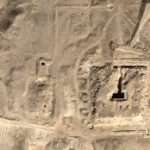
 And/or: ''In December 1908, the British Egyptologist W. M. Flinders Petrie discovered the intact burial of a woman {with long/narrow neck and body}, and child while excavating in western Thebes, opposite the modern city of Luxor - {'child' more than likely a girl - because of spiral 'earings' and bead 'girdle',}. Found north of the road that led to the Valley of the Kings. The grave was not elaborate, just a shallow trench cut into the rock BELOW AN OVERHANG and masked from view by a group of boulders {'grey?}. Considering the simplicity of the burial place, the contents were of unexpected richness {'pine martin'?} and quality.'' [Page 15/22 'Hatshepsut' / same book].
And/or: ''In December 1908, the British Egyptologist W. M. Flinders Petrie discovered the intact burial of a woman {with long/narrow neck and body}, and child while excavating in western Thebes, opposite the modern city of Luxor - {'child' more than likely a girl - because of spiral 'earings' and bead 'girdle',}. Found north of the road that led to the Valley of the Kings. The grave was not elaborate, just a shallow trench cut into the rock BELOW AN OVERHANG and masked from view by a group of boulders {'grey?}. Considering the simplicity of the burial place, the contents were of unexpected richness {'pine martin'?} and quality.'' [Page 15/22 'Hatshepsut' / same book].
Items included: 'Feathered' designed coffin peculiar to Thebes. SIX Nubian pots - {''placed in 'three' stringed nets/bags at one end of a large wooden pole}. Stone bowl decorated with monkeys; basket containing a horn - an 'eight' petalled one. Together with headrest - made in 3 pieces, octagonal middle, with elephant or hippo horn inlays {triangular in shape}.''
'Horn of Plenty'?
N.B. Elephants imported {'foreign'?}. Hippo's {local}.
And/or: ''The ten frames of the so-called "Hawara Homer," preserved at the Bodleian Library![]() (MS. Gr. class. a. 1 [P]) and dated about 150 CE, were discovered lying rolled up under the head of a mummified woman by W. M. Flinders Petrie
(MS. Gr. class. a. 1 [P]) and dated about 150 CE, were discovered lying rolled up under the head of a mummified woman by W. M. Flinders Petrie![]() in the cemetery at Hawara
in the cemetery at Hawara![]() , Egypt.
, Egypt.
"William Flinders Petrie excavated at Hawara in 1888. After working in Medinet el-Fayum (Arsinoe) and Biahmu, he moved on to the site south of Arsinoe and took the 60 workers he had already employed at the former sites with him.
"As usual, Flinders Petrie did not give precise indications, as to where the papyri were found on the site. He just mentions that the region north of the pyramid "was the usual place for burials in the early Roman period , when gilt cartonnage busts were used. Papyri from the Ist and IInd cent. AD are also usual in the soil here, and for some way north" (p. 8, no. 11; cf. the map on plate XXV in the book)" (http://www.ucl.ac.uk/GrandLatMisc/hawara![]() /,
/,![]() accessed 04-27-2014.)
accessed 04-27-2014.)
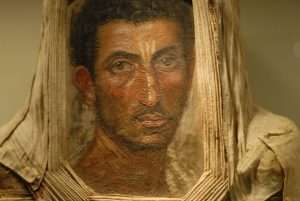
Unveiled? Face to face? With what?
"Faiyum (Arabic: الفيوم el-Fayyūm pronounced [elfæjˈjuːm], borrowed from Coptic: ̀Ⲫⲓⲟⲙ or Ⲫⲓⲱⲙ Phiom or Phiōm from Ancient Egyptian: pꜣ ym "the Sea, Lake") is a city in Middle Egypt. Located 100 kilometres (62 miles) southwest of Cairo, in the Faiyum Oasis, it is the capital of the modern Faiyum Governorate. Originally called Shedet in Egyptian, the Greeks called it in Koinē Greek: Κροκοδειλόπολις, romanized: Krokodilópolis, and later Medieval Greek: Ἀρσινόη, romanized: Arsinoë.[2] It is one of Egypt's oldest cities due to its strategic location....
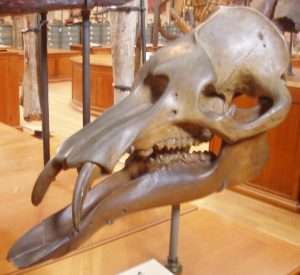
"Phiomia is an extinct genus of basal elephantiform proboscidean that lived in what is now Northern Africa during the Late Eocene to Early Oligocene some 37–30 million years ago.[1] "Phiomia serridens" means "saw-toothed animal of Faiyum."
Phiomia serridens (=P. wintoni, P. osborni, P. minor[2]) is estimated to had shoulder height 134.5 centimetres (4.41 ft),[3] while P. major got larger size.[2] It vaguely resembled a modern elephant, although, based on the shape of its nasal bones, it had only a very short trunk. It had short tusks on the upper jaw and also short shovel-like tusks on the lower jaw that were most likely used for gathering food. These were similar to those of the Miocene Platybelodon, Archaeobelodon, and Amebelodon, but considerably smaller. The tusks in the upper jaw may have been used in defence,[4] or scraping bark off trees."
"The lake was also used as part of a freight transport system: The remnants of the Lake Moeris Quarry Road, the oldest known paved road in the world, were found near the lake. It was used to convey basalt blocks from a nearby quarry to the lake; from the lake the blocks could be shipped to the Giza Necropolis for building and monument construction projects. The ASCE has entered it into its List of Historic Civil Engineering Landmarks.....
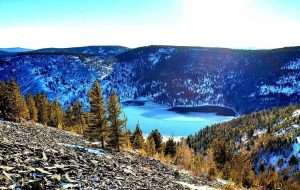
Any labyrinths?
'Flagstones'.

Pedestal?
Herodotus claims to have visited the lake in his book Histories, situating it below the Labyrinth of Egypt and opposite the ancient city Crocodilopolis (i.e., the modern city of Fayyum).[5] Herodotus also states that "two pyramids" (interpreted to be the Pedestals of Biahmu) stood in the middle of the lake[6] – a claim that led the British Egyptologist W.M.F. Petrie to hypothesize that the lake was flooded when Herodotus had visited the area.[7]
The immense waterworks undertaken by the ancient Egyptian pharaohs of the twelfth dynasty to transform the lake into a huge water reservoir gave the impression that the lake was an artificial excavation, as reported by geographers and travellers during classical times."

Chester.
And/or: "The pedestals are known by a variety of names, including the "Colossi of Biahmu"[3] and the "Pyramids of Biahmu".[4][5] Locally, they are often referred to as Al-Ṣanam (الصنـمـ), which is Arabic for "The Idol".[1][2] Historically, the ruins have also been called Haram Biyahmū ("Pyramid of Biahmu"), Rigl Pharaon ("The Foot of the Pharaoh"), and Mustuhamel ("The Bathed")."

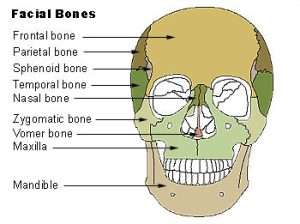
"The nasal bones are two small oblong bones, varying in size and form in different individuals; they are placed side by side at the middle and upper part of the face and by their junction, form the bridge of the upper one third of the nose."
Side note: "Cave art can speak to us like nothing else...Cave art in Britain looked for since cave art found in France, but believed it most unlikely because of conditions in Britain in the same epoch...Those ideas turned on their head when discoveries were made in the cave at Creswell Crags...Pre last ice age - 13000 years ago... the scratchings of the image of a deer...This is the oldest rock art to be found anywhere on these islands...Here we have art that is something a little bit different, and it does give a real connection back to the people that created it - but I rather like the mystery that we will never really know what it means." ['Digging For Britain' / Series 1 - Episode 2].
Question. What do you think?
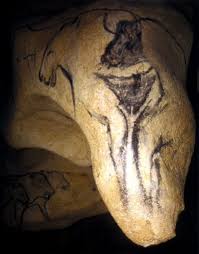
Stalactite that once removed could be used as a 'pillar'. The cut off point of which would become its base? A reversal of something? Indicative of? Recall what ''caves'' REPRESENT and who or what are associated with them {if only in their 'infancy' }. Also note the 'position' of the 'heads'. Also, once reversed - any OVERALL facial feature? i.e.,'mouth' in relation to 'womb'?
Continued: From a different perspective: Stalactite in relation to stalagmite? i.e.,"...It is a fact, however that, in the early Neolithic, Stalagmites and stalactites were removed from cave interiors and carried back to Catalhoyuk, where they were placed in cult shrines alongside statuettes, bucrania, vulture beaks, and painted fresco's of extraordinary beauty and sophistication. So many fragments from caves were found there that British archaeologist James Mellaart, who excavated the site in the 1960's, proposed that the shrines at Catalhoyuk {i.e., S/W Turkey} might have been the realm of chthonic deities; that is, gods of the underworld." {From the book 'Gobekli-tepe' by A. Collins}.
Labyrinth to enlarge.
Recall the position of C. Hoyuk in relation to Gobekli-tepe and others. Enlarged elsewhere. Question. Neolithic equivalent of 'Delphi', i.e.,oracle center?
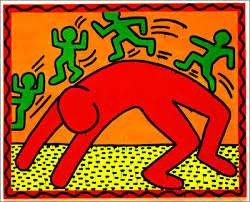
Bridge over troubled waters? The scent of something?
Egyptian equivalent, the buried 'heads' at the base of certain pillars. Indicative of same. As is the Sphinx 'head' when viewed in perspective relative to the base [i.e.,start point] of the 'pyramid.' [Explained elsewhere ] ’Grinding’ out an understanding; a development; within ones overall ’ journey’. Hence the link to the title...’Hamlets Mill ’. Quran equivalent, Sura six..."Verily, god is the one who cleaves the grain and the wheat kernel asunder, bringing forth the living out of that which is dead". All the above speculated on within the book 'The Source Field Investigations'. D. Wilcock. [Especially chapters six and nineteen]. Understanding this subjects 'framework' gives a further insight into that books research.
N.B. The Mayans had a practice of purposely shaping a child's head in the form of 'an ear of corn'. Try ''ear''.
A grain of wisdom.
"Today I see Muhammad ascend. The friend is everywhere, in every action. Love, a lattice. Body, fire. I say, show me the way. You say, put your head under your feet. That way you rise through the stars and see a hundred other other ways to be with me. There are as many as there are flight paths of prayer at dawn." [Poem 17 'Flightpath', taken from the book, 'Rumi: Bridge to the Soul' by Coleman Barks].
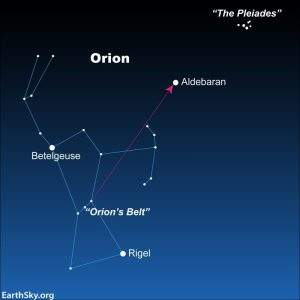
Upside down in the Southern Hemisphere.
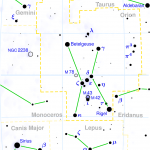
Fire AND water. Inverse?
''A man touches the earth with his physical feet, but he touches life with his psychological feet... Now a man who understands life only through the evidence of his senses is not a psychological man. He is a sensual man. His mind is based on sense. This is called elsewhere 'the mind of the flesh'. In such a case he thinks from his feet - and has no head."[Part one 'The Mark' by M. Nicoll].
'Feet on firm ground'. Benefit of?
"We are thinking at the edge, where the shoreline of sense meets the wild ocean of mystery." [From the book by T. Freke and P. Gandy]. 'See' the picture; at the 'head' {header?} of each page. Anything?
Blemmeys?
The author uses those two mental concepts [i.e.,''psychological'' and ''sensual''] to define the differences between exoteric and this subject. And therefore its potential to each individual [i.e.,'higher'/'lower']. Understanding that paragraph [i.e., the part within the whole] explains why many statues were found beyond Abu Simbel...without the heads. Egyptian equivalent with the same principle in mind. North in relation to South. Or more importantly Northeast in relation to Southwest. The beginning of something. Representation of.
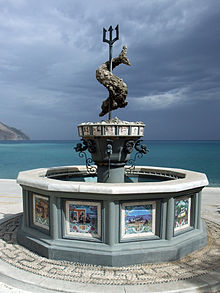
Fountain of Neptune in Diafani on the island of Karpathos. 'Trident' and a 'dolphin' ? 'Mettle' of the mind? Question. What aspects would be 'used' to REPRESENT that 'metal' ?

Hercules: stretching from just west of the head of Ophiuchus to Draco, its eastern border on the Milky Way, is one of the oldest sky figures, although not
'Teeth', symbolic of same. A link to the word 'grinding'. Especially 'serpent teeth', as indicated throughout in the book, ' The Sirius Mystery'...within the story of Jason and his Argonauts. 'Looking' for the 'golden fleece', just as Gilgamesh went looking for the plant of 'life'. Something 'eternal' being the common factor of both. That process ['development'] of which [ a grinding] can be represented with 'food'. [Food. Vol. 1. 'Gift of Osiris'. W.Darby]. In other words, as a representation of something, with an understanding in mind.... i.e.,as an example, taken from Gurdjieff's ...'fourth way' 'teachings', in relation to...'each moment is the best opportunity'...."Gurdjieff wanted his students to learn how to use the circumstances of each moment - both internal and external - as 'food' for the 'development' of a new state of consciousness".[Part one. 'Wisdom of the Fourth Way'. Mentioned elsewhere]. Think about it, relative to what that 'development'; is in the main; represented by... within a said framework. [Micro/Macro links].
"Tender-hearted stroke a nettle, And it stings you for your pains. Grasp it like a man of mettle, and it soft as silk remain." ['Paradoxes of the Infinite' / B. Bolzano].
A grain of wisdom.
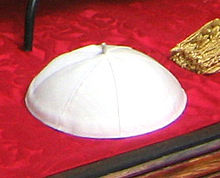
''Her body glows and TINGLES from the crown of the head to her TOES. I like learning about the universe in this way.'' [Page 203 'The Quest of the Rose'].
'In profile' as opposed to 'face on'. The tail end of something begins the process of ?
''The canine teeth are also known as the eye-teeth.'' ['The Chase'].
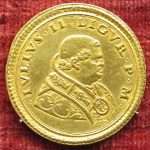
Pope Julius II. Metal.

Wooden image. Identified with the Oak.
"The profile of a human being is a special thing for those with eyes to see. The profile reveals the karma to those who know about such things. If you look carefully at any face, you will see in profile the story of past lifetimes...Meanwhile, remember that the profile will speak more easily about the past than will the face turned towards you." ['The Zelator'].
Side note: A {working} example: "...and for this reason this demand is especially important. In remembering about this and in carrying it out, man begins to see sides of himself which he never noticed before." ['In Search of the Miraculous'. Italics, this readers].
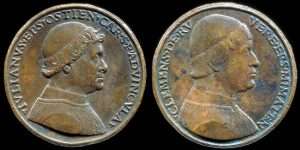
"Pope Julius II (Latin: Iulius II; Italian: Giulio II; born Giuliano della Rovere; 5 December 1443 – 21 February 1513) was head of the Catholic Church and ruler of the Papal States from 1503 to his death, in February 1513. Nicknamed the Warrior Pope, Battle Pope or the Fearsome Pope, he chose his papal name not in honour of Pope Julius I but in emulation of Julius Caesar."
Continued..."It is said that the Ennead which was the 'seed and hand of Atum', becomes the 'teeth and lips of Ptah' and gives a name to each thing, bringing it into existence. Divine principles and qualities {the Ennead} can now 'enter into the species of things' - mineral, plant, or animal - and become manifest through them. This is clearly an account of 'creation' by the ''word''. [Extract from the book by L. Lamy].
''Manifest'' in relation to ''logos''. Anything?
And/or: "The image also reminded us of another winged disc of Egypt, which offered a curious parallel with the Venus of the Mayans {enlarged elsewhere}. The interesting thing about this was that it was directly linked with the serpent, at which we have already glanced, called the uraeus serpent by later Greeks. Even in modern times, the uraeus is not hard to locate in Egypt...Preserved on the foreheads of statues - as one example - in ancient Thebes...its head poised forward as if ready to strike...
'Waters of the Gap'. Enlarged elsewhere.

One horn or two?
CAESAR: It's a given name likely derived from the Latin caesaries, meaning “head of hair,” "long-haired," “hairy,” or, very simply, “hair.” Regardless of their mane, baby Cesar's name can give them the confidence to take on the world.
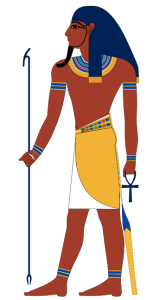
Right to left therefore anticlockwise with 'left' eye showing. All as a means...? Recall Nefertiti's 'left' eye. Question. What would left-right be represented with?
Continued..."It is the transformed eye of the god Atum, in the form recounted in the ancient Creation myth...Usually explained by Egyptian archaeologists as being symbolic of the ''solar disc'' - what ever that might mean...The placing of this serpentine eye between the ordinary eyes explains why it is sometimes called the 'Third eye'...It is a representation of the eye of Atum...Or what the Oriental esotericists call the ajna chakra..." ['The Zelator'].
A working example, i.e.,apply the above to define something {inner?} i.e.,something that can be worked out by objective analysis {in profile?}: "...we find it remarkable that in ancient times the Western astronomers of Greece located the tail of their Taurus, the Bull, precisely on the Pleiades. The Mayan cult of the rattle snake, with its tail on the Pleiades, and the Persian Mythraic cult of the Bull, with its tail on the Pleiades, seemed to meet in a most extraordinary way. Just what was this connection between the Middle East and South America in ancient times? [same book]. Try ''Pleiades''.
Follow the title of the book to 'see' it from the authors 'point of view' i.e.,the Way of the Fool.
"Now, ''the magnificent gifts'' {10+7?} of which it is a matter here are not the magical phenomena but rather revelations in the inner life of intuition and inspiration." [Extract from the book by Tomberg. 'Letter 17' ]. Recall how those two 'aspects' [highlighted] can only be achieved - and their purpose - relevant to an understanding - if only in relation to a subject.
Egyptian equivalent...Heliopolis and Memphis in relation to Hermopolis and Thebes. Something unknown becoming known. Shadow in relation to light ,{and/or ''anima''}.
ALL AS A MEANS TO AN {AWAKENING?}. Question. A grain of wisdom?
'Anima Mundi' ?
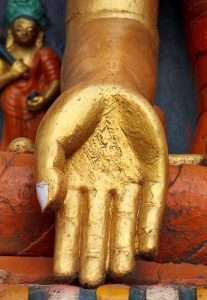
Hand of Buddha: Brahma to enlarge.
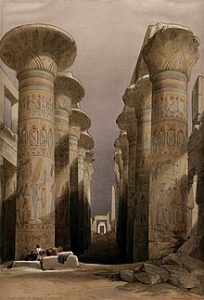
Mountain low, Valley high.
"One can already sense from these considerations the role of numbers as generative powers, {''manifested'' link} and thus their relation to the names of the Theban sanctuaries. There exists, however, a still more striking demonstration of this relation: a hymn consecrated to Amun-Re, constructed on a series of 'plays on words' and on numbers. This hymn {Leyden Papyrus 1, 350} is composed of twentyseven stanzas, numbered with the first nine numbers, then with nine tens, then with nine hundreds. The particular character of each stanza is determined by the implications associated with its number. A stanza beginning with One contains an evocation of the 'First Time', the Creation, and associates Thebes with that event. The great temple of Amun itself is said to be 'the place of the origin and outlet of the Nun', clearly alluding once more to the primordial hill and therefore to the beginning of all generation or creative enumeration {'manifested'?}. Thebes is said to be, more exact, or more enumerated, than any other city." [Extract from the book by L. Lamy. Emphasis, this readers]. Try ''27''. Then ''wheat''.
Hebrew equivalent = Ain-sof ? 'Gap' as a common factor to both? Therefore more UNmanifested {top/down} than manifested {bottom/up?}.

Manna from heaven?
That final link to a representation of same, as the 'food' of the gods, i.e.,sometimes called Soma or ambrosia or the Hebrew equivalent, Manna. All as a representation of something, i.e.,relative to an understanding. Hence the link to, "a new state of consciousness". Breathing easier? It is a glimpse of the goal which a disciple [or student. This readers input] must aspire..." [Extract from the book by S. Ashby].
"The 'teacher' brings divine food in the form of wisdom teachings which uplift the mind by relieving the burden of pain and sorrow which weighs down the soul of a human being due to ignorance and negativity. The 'divine' food is the taste of divine glory."
'Feast of Maturity'.
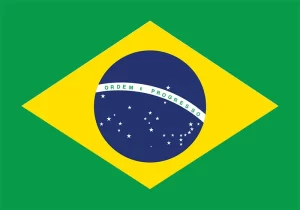
Flag of Brazil. 'Twentysix' stars above the equator. The solitary one = Spica - below. 'Twentyseven' in total. 'nineteen{th}' of November 1889 = Independence Day. And/or: ''That part of the flag that flaps in the wind at the end of the flag is called the 'fly'...'' ['Impossible' / S6 EP47].
Side note: Great sage Hesy {third dyn.} = Grand Master of the Fly.
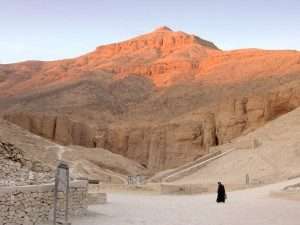
'She who loves silence'.
And/or: Death is a theme that looms large in the poetry of Emily Dickinson (1830-86), and perhaps no more so than in the celebrated poem of hers that begins ‘I heard a Fly buzz – when I died’. This is not just a poem about death: it’s a poem about the event of death, the moment of dying.
I heard a Fly buzz – when I died –
The Stillness in the Room
Was like the Stillness in the Air –
Between the Heaves of Storm –

The Eyes around – had wrung them dry –
And Breaths were gathering firm
For that last Onset – when the King
Be witnessed – in the Room –
I willed my Keepsakes – Signed away
What portion of me be
Assignable – and then it was
There interposed a Fly –
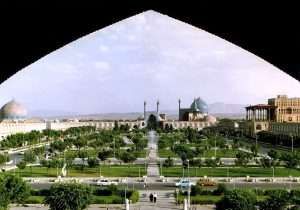
Charbagh gardens. 'Philae' to enlarge.
With Blue – uncertain – stumbling Buzz –
Between the light – and me –
And then the Windows failed – and then
I could not see to see –

Excrement or a birthing?
And/or: ''Beelzebub (/biːˈɛlzəbʌb, ˈbiːl-/[1] bee-EL-zə-bub, BEEL-; Hebrew: בַּעַל-זְבוּב Baʿal-zəḇūḇ), also spelled Beelzebul or Belzebuth, is a name derived from a Philistine god, formerly worshipped in Ekron, and later adopted by some Abrahamic religions as a major demon. The name Beelzebub is associated with the Canaanite god Baal.
In theological sources, predominantly Christian, Beelzebub is another name for Satan. He is known in demonology as one of the seven deadly demons or seven princes of Hell, Beelzebub representing gluttony and envy. The Dictionnaire Infernal describes Beelzebub as a being capable of flying, known as the "Lord of the Flyers", or the "Lord of the Flies"....In one understanding, Ba'al-zəbûb is translated literally as "lord of (the) flies".[3][4][5][6] It was long ago suggested that there was a relationship between the Philistine god, and cults of flies—referring to a view of them as pests, feasting on excrement—appearing in the Hellenic world, such as Zeus Apomyios or Myiagros.''
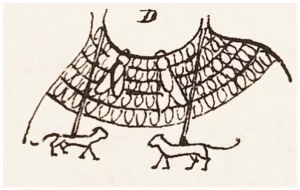
 ''Beelzebub, literally "Lord of the Flies," is one of Satan's companion archdemons, who has erected a fort near the Wicket Gate from which he and his soldiers can shoot arrows of 'fire' at those about to enter the Wicket Gate so they will never enter it. He is also the lord, god, king, master, and prince of Vanity Fair. Christian calls him "captain" of the Foul Fiend Apollyon, who he later met in the Valley of Humiliation.'' ['The Pilgrims Progress' / J. Bunyan].
''Beelzebub, literally "Lord of the Flies," is one of Satan's companion archdemons, who has erected a fort near the Wicket Gate from which he and his soldiers can shoot arrows of 'fire' at those about to enter the Wicket Gate so they will never enter it. He is also the lord, god, king, master, and prince of Vanity Fair. Christian calls him "captain" of the Foul Fiend Apollyon, who he later met in the Valley of Humiliation.'' ['The Pilgrims Progress' / J. Bunyan].
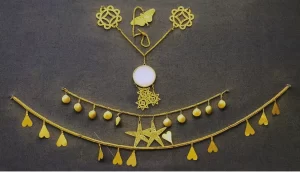
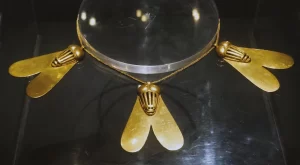 And/or: ''Perhaps most importantly, although not all golden flies have been found in burials, where they have, and we know the sex of the deceased, the majority (71%) have been found with women. In fact, not a single physical golden fly has been found with a man – instead, their flies are textual or iconographic. The archaeological data therefore suggests it is extremely unlikely that golden flies were military awards.''
And/or: ''Perhaps most importantly, although not all golden flies have been found in burials, where they have, and we know the sex of the deceased, the majority (71%) have been found with women. In fact, not a single physical golden fly has been found with a man – instead, their flies are textual or iconographic. The archaeological data therefore suggests it is extremely unlikely that golden flies were military awards.''
And/or: Now let us speak of different kinds of ‘I’s, some of which may also be very important. Some time ago we spoke of worry and worrying ‘I’s. These form a strong group of ‘I’s in most people. Their action is very interesting to observe. Their sole object is to upset you and make you depressed or, in short, worried. They lead to nothing else. They are quite useless, as are so many ‘I’s in us. But you have to notice for yourself, by direct and sustained self-observation, what they do and say and what their main object is. Worrying ‘I’s act in two main ways....

'Envelope' to enlarge.
You all have your worrying ‘I’s—about one another, about business, about money, about your state of health, and so on. And you also have to meet other people’s worrying ‘l’s. Try to see even one worrying ‘l’ distinctly in yourself, study it, see how it only loves to exhaust you and leads nowhere. Then you will see others. Also notice how some of your worrying ‘I’s connect themselves with the Work. You begin to worry about the Work in one way or another, whether you are working, and so on. They are like flies, and can settle on anything. They are all small ‘l’s living in small parts of centres. They cease when we get into directed attention. {'Psychological Commentaries on the Teaching of Gurdjieff and Ouspensky' / M. Nicoll}.

Seneh - a link to the ''Burning Bush''' mentioned twice in the Bible.
Continued: Analogy, with same principle in mind - but different time and space period: "We strolled later through the sacred precincts, halting in a tamarisk grove. The manna characteristically exuded by this tree was symbolic of the heavenly food Master Mahasaya was bestowing..." [Extract from the book 'Autobiography of a Yogi' ].
Question. Why a tamarisk tree?
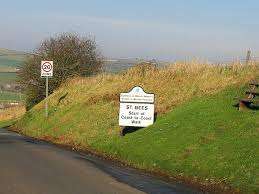
Gateway to the Lake District. N/W England.
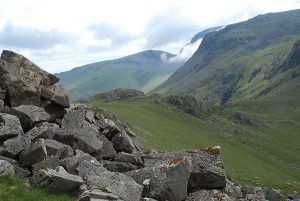
Cloud sweeping across Gable Crag {the 'Pillar' oppposite} at the head of Ennerdale heralds a gradual change in the weather. The first village that journeymen/women meet from the West. {'Wainwrights Walks: Coast to Coast: The Heart of the Lakes' / S1 EP2}.
And/or: A working example i.e., something hinted at OTHER than the obvious; as a means....?: "The three tiny eyes of the worker bees originate deep from within their bodies....These eyes have not been exposed to the external effects of the suns influence. Because the new queen, having been ''born of the sun'', brings new sunlight into the beehive with her own 'body', the workers with their tiny eyes suddenly begin to ''see''; I would like to say, they become clairvoyant and cant stand to see the light emanating from the new queen. The entire horde begins swarming. It is as if they are 'afraid' of the new queen because she seems to 'blind' them...." [Page 14 'Bees' / Rudolf Steiner].
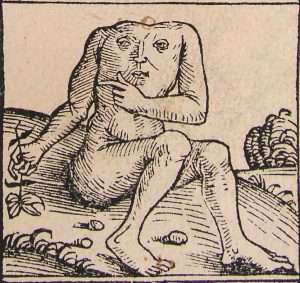
Remedy?
"open thine eyes and 'see'...." {1 Kings xix.16}.
And/or: "Many years ago the English psychologist, F. W. H. Meyes, suggested that - ''hidden in the depth of our being is a rubbish heap as well as a treasure house''.
Within the parish is St Bees Head which is the only Heritage Coast between Wales and Scotland and a Site of Special Scientific Interest. The Headland is also an RSPB bird reserve which is the only cliff-nesting seabird colony in north-west England. St Bees Lighthouse stands on the North Head which is the most westerly point of Northern England.
St Bees is a popular holiday destination due to the coastline and proximity to the Western Lake District. In the village there is St Bees Priory dating from 1120, and St Bees School founded in 1583. The Wainwright Coast to Coast Walk starts from St Bees and the National Trail, the England Coast Path, runs along the coast. It has a railway station served by the Cumbrian Coast Railway.
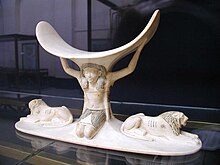
Tutankhamun's head rest. 'Raised' by Shu.
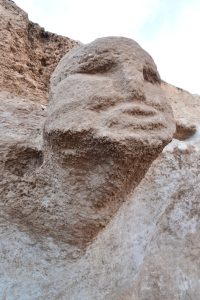 Side note: A headland, also known as a head, is a coastal landform, a point of land usually high and often with a sheer drop, that extends into a body of water. It is a type of promontory. A headland of considerable size often is called a cape.[1] Headlands are characterised by high, breaking waves, rocky shores, intense erosion, and steep sea cliff.
Side note: A headland, also known as a head, is a coastal landform, a point of land usually high and often with a sheer drop, that extends into a body of water. It is a type of promontory. A headland of considerable size often is called a cape.[1] Headlands are characterised by high, breaking waves, rocky shores, intense erosion, and steep sea cliff.
Headlands and bays are often found on the same coastline. A bay is flanked by land on three sides, whereas a headland is flanked by water on three sides. Headlands and bays form on discordant coastlines, where bands of rock of alternating resistance run perpendicular to the coast. Bays form when weak (less resistant) rocks (such as sands and clays) are eroded, leaving bands of stronger (more resistant) rocks (such as chalk, limestone, and granite) forming a headland, or peninsula. Through the deposition of sediment within the bay and the erosion of the headlands, coastlines eventually straighten out, then start the same process all over again.
Continued: Evidence of Mesolithic and Bronze Age habitation has been found in St Bees,[3] but nothing of the Roman occupation, even though St Bees Head would have been a prominent observation point. The name St Bees is a corruption of the Norse name for the village, which is given in the earliest charter of the Priory as "Kyrkeby becok", which can be translated as the "Church town of Bega",[4] relating to the local Saint Bega.[5] She was said to be an Irish princess who fled across the Irish Sea in the ninth century to St Bees to avoid an enforced marriage. Carved stones at the priory show that Irish-Norse Vikings settled here in the tenth century.
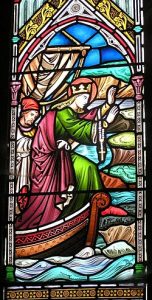
The arrival of St Bega.

'Cancer'?
Bega is a medieval Irish saint of Northumbria, venerated primarily in the town of St Bees. According to her Life, she was an Irish princess who fled to Northumbria to escape an arranged marriage to a Viking prince. She became an anchoress and was renowned for her piety. Multiple churches have been dedicated to her in England, and her feast day is still celebrated in St Bees.
Bega was reputedly an early medieval Irish princess[1][2][3] who became an anchoress and valued her virginity. Promised in marriage to a Viking prince who, according to a medieval manuscript The Life of St Bega,[4] was "son of the king of Norway", Bega "fled across the Irish sea to land at St. Bees on the Cumbrian coast. There she settled for a time, leading a life of exemplary piety, then, fearing the raids of pirates which were starting along the coast, she moved over to Northumbria". The most likely time for this would have been after AD 850 when the Vikings were settling in Ireland.[4]
The account of Bega's flight from Ireland is found in the Life of St Bega,[5][6] (Tomlinson in his translation 'inserts phrases and indeed whole sentences of his own devising, without any warning' and therefore should be avoided)[7] part of a collection of various English saints' lives that belonged to Holmcultram Abbey in Abbeytown, Cumbria, and is dated to the mid-13th century. The rest of her biography, according to her Life, is summarised by the Victoria County History as follows:
Ralph Tawangyaouma, Hopi Stamped Silver Bracelet
Bega found the place covered with a thick forest, admirably adapted for a solitary life. Wishing to dedicate her life to God she built for herself a virgin cell in a grove near the seashore, where she remained for many years in strict seclusion. In the course of time the district began to be frequented by pirates. The good saint however dreaded not death, nor mutilation, nor the loss of temporal goods, of which she was destitute except her bracelet (armilla), but she feared the loss of her virginity, the most precious treasure with which heaven can endow her sex. By divine command Bega hastened her departure from the place, but she was induced to leave her bracelet behind her, that miracles in ages to come might be performed in that neighbourhood in testimony of her holy life.An armill or armilla (from the Latin: armillae remains the plural of armilla) is a type of medieval bracelet, or armlet, normally in metal and worn in pairs, one for each arm. They were usually worn as part of royal regalia, for example at a coronation, or perhaps as part of especially grand liturgical vestments. They may have been worn outside ceremonies. Armillae presumably descend from the Ancient Roman armilla, which was a form of military decoration.[1] These in turn seem to have developed from the armlets worn by some "barbarian" nations, including the ancient Celts and Scots. The form is variable; all three examples discussed below have completely different forms. The term "armilla" is used in the English Liber Regalis (probably 1382) to describe a stole, like the Byzantine imperial loros, but this is thought to be a confusion as to the meaning of the word.[6]
— Victoria County History, Cumberland, ed. J. Wilson[8]
Question. Even though these 'facts' are more myth - What other 'characters' have had to travel east to 'begin' anew?
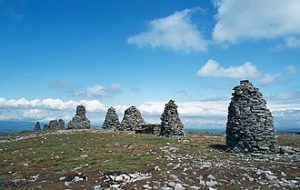
'Line of sight'? Bogs of peat beyond. {'Coast to Coast' / S1 EP3}. "Boundary between the lakes of Cumbria and the dales of Yorkshire." Wet/Dry?
And/or: Nine Standards Rigg is the summit of Hartley Fell in the Pennine Hills of England. It lies near the boundary between Cumbria and North Yorkshire, a few miles south-east of Kirkby Stephen and approximately 770 yards (700 m) outside the Yorkshire Dales National Park. Nine Standards Rigg lies within the North Pennines Area of Outstanding Natural Beauty (AONB). The name is derived from a group of cairns, the Nine Standards, located near the summit. The fell is listed as Nine Standards Rigg, rather than Hartley Fell, in Alan Dawson's book The Hewitts and Marilyns of England.
The Nine Standards themselves, some of which were originally more than four metres high, are on the line of the Coast to Coast Walk between Kirkby Stephen and Keld, and are just to the north of the fell's summit...
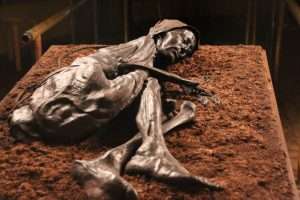
Bridging the 'gap' between death-rebirth?
Situated at a height of 650 m, their original purpose is uncertain but one possibility is that they marked the boundary between Westmorland and Swaledale.[1] They stand at the watershed between the Eden - headwaters to Scandal Beck catchment to the north west[2] and the Whitsundale Beck from Source to River Swale catchment to the south east.[3]
The Nine Standards offer a better viewpoint than the Ordnance Survey trig point that marks the actual summit of the fell. Cross Fell and Great Dun Fell can be seen to the north-west and Wild Boar Fell and the Howgills feature in the south-west. The High Street Range of the eastern Lake District can be seen further to the west. Great Shunner Fell, crossed by the Pennine Way, and Rogan's Seat lie to the south-east.
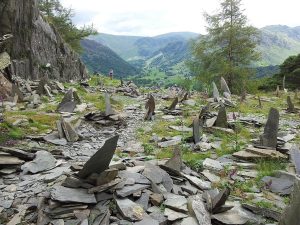
Castle Crag Quarry, nicknamed The Graveyard

Glauberg Warrior. Whats the remedy for mad, bad or sad ?
Side note: The number 9 can be variously interpreted. At times, the purely negative aspect is stressed, thus by Petrus Bungus, who equates 9 with pain and sadness and points out that the ninth psalm contains a prediction of the Antichrist. The 9 is again connected with suffering because of the fact that Christ died at the ninth hour of the day (from sunrise, i.e., 3 P.M.). This hour was the none, subsequently marked by a special monastic devotion, while the word itself has become our noon. Another type of exegesis, known from classical antiquity, emphasizes the near-perfection of the 9: Troy was besieged for 9 years, and Odysseus traveled for the same amount of time.
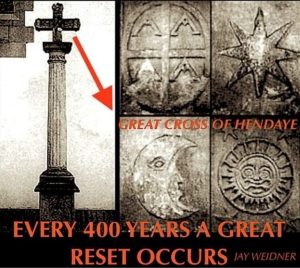 This type of interpretation is typical of much of medieval Christian exegesis, based on the parable of the lost piece of silver (Luke 15: 8-10). The 9 orders of angels found in such exegesis (and in Dante) are interpreted as reflections of the perfect 3, which can be completed by the all-embracing divine Unity to form the perfect 10. Another aspect of this "heavenly" interpretation of 9 can be derived from its role as 8 + 1, beatitude augmented and enhanced. In fact, the number 9 does not hold a very prominent place in the Semitic, and following it the Judeo-Christian, world. Rather, its importance is connected with the Indo-Germanict and Central Asian (Turco-Mongolian) traditions, and it seems to be typical of civilizations in the northern parts of the world.
This type of interpretation is typical of much of medieval Christian exegesis, based on the parable of the lost piece of silver (Luke 15: 8-10). The 9 orders of angels found in such exegesis (and in Dante) are interpreted as reflections of the perfect 3, which can be completed by the all-embracing divine Unity to form the perfect 10. Another aspect of this "heavenly" interpretation of 9 can be derived from its role as 8 + 1, beatitude augmented and enhanced. In fact, the number 9 does not hold a very prominent place in the Semitic, and following it the Judeo-Christian, world. Rather, its importance is connected with the Indo-Germanict and Central Asian (Turco-Mongolian) traditions, and it seems to be typical of civilizations in the northern parts of the world.
It has even been speculated that this is a result of the experience of 3 very cold winter months in contrast to the positive summer months, but this seems difficult to maintain. In many of these traditions, 9 is connected with the spheres, and the highest, ninth heaven is located beyond the 7 planetary spheres and the upper vault of the sky that contains the fixed stars. Persian and Turkish traditions, and book titles, often speak of nuh sipihr (nine skies). Mircea Eliade has pointed out that this may be a trebling of the ancient cosmic regions, to which also belong the 9 branches of the cosmic tree. That might explain why 9-storeyed pagodas were popular in China. A similar role for the 9 can be observed in the philosophy of the Muslim Brethren of Purity with its 9 states of existence: one Creator, 2 kinds of intellects, 3 souls, 4 kinds of matter, 5 kinds of nature, the corporeal world determined by the 6 directions, the 7 planetary spheres, the 2 x 4 elements, and finally, the 3 x 3 states of the animal, vegetable, and
mineral kingdoms.


